

The Sixteen Travel Personality Types
This post may contain affiliate links. Read our disclosure page for full details.
There are 16 travel personalities. What’s yours?
We humans love to categorize. It can be fun to fit yourself (or those around you) into a neat little box and decide who and what you are.
In truth, we all know that humans are far more dimensional and varied. No one fits precisely into an expected mold. Even so, there may be great deal of truth to the idea that there exists a set of distinct personality types.
Perhaps you’ve heard of the 16 common personality types? A simple Internet search will yield you all you really need to know, and if you’re especially interested, you can take a fun and simple personality test to find out your four letter type .
Each of these sixteen personality types is said to behave in predictable ways true to their temperament. As travel bloggers, we decided to look at this from our unique perspective.
Here’s what we think each type is likely to do when traveling, and a traveler friend for each type. You might want to follow some of their blogs if you identify with their type!
Which one are you?
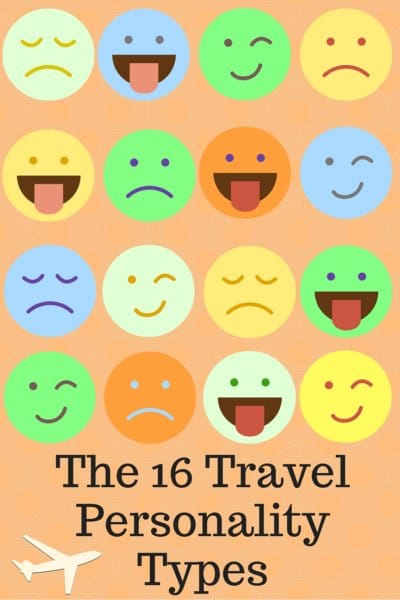
Free-spirited, emotional, and yearning for connections, the ENFP is driven by inspiration and feelings. Travel, for this type, is about making beautiful memories, interacting with locals, and recording each experience in a heartfelt journal entry. PS: This is my type. 🙂
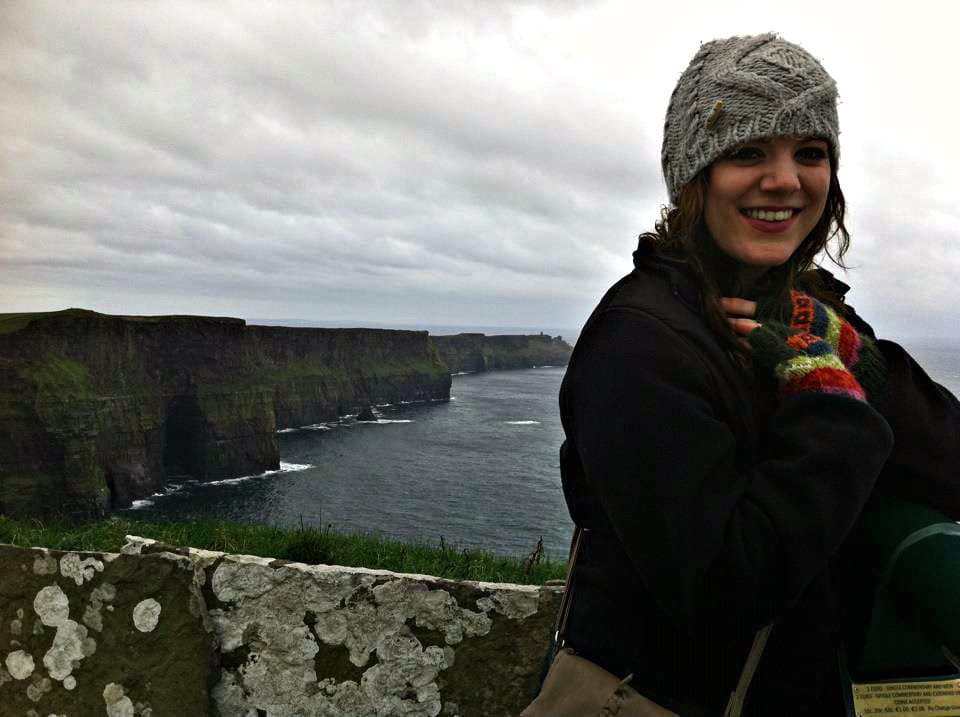
INFP’s are quiet and reflective, but a lot is going on inside. These creative and reserved folks are deeply guided by their values and express themselves most often through writing. It’s said that Tolkien was an INFP, and guess who else is one? Nathan.
When the INFP travels, they are likely to enjoy wandering around new cities (perhaps solo), observing their surroundings and diving into local history. They need time spent on their own to refresh and feel at their best, and they will have a great few hours of pondering and wondering as they explore an unfamiliar area.

The ENFJ type is a person who is outgoing and has a big heart for the world. These individuals love dealing with people, and as natural leaders and teachers, they are super-motivating and encouraging of others.
Exuberant ENFJs are well-suited to lead group tours, or when traveling with others, will plan a well-organized and busy itinerary.
Our ENFJ traveling friend: Jess of Thrifty Traveler Tips
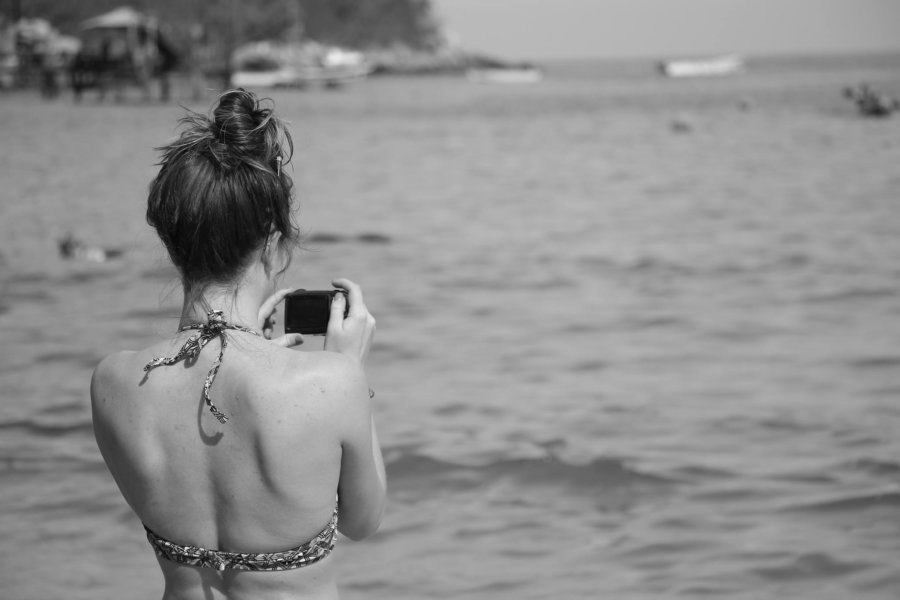
With deep hearts, INFJs are warm and nurturing souls who love to help others. They make connections easily, which can make them appear to be extraverted in nature, but they require time alone to decompress and recharge. Their combination of traits allows them to understand emotions and needs and then find ways to efficiently meet them.
The travel personality of the INFJ is to seek meaning and purpose in their explorations. They are likely to be found volunteering abroad, immersing themselves in local culture, or otherwise making a positive impact on the world.
Our INFJ travel friend Eva of Eva Explores
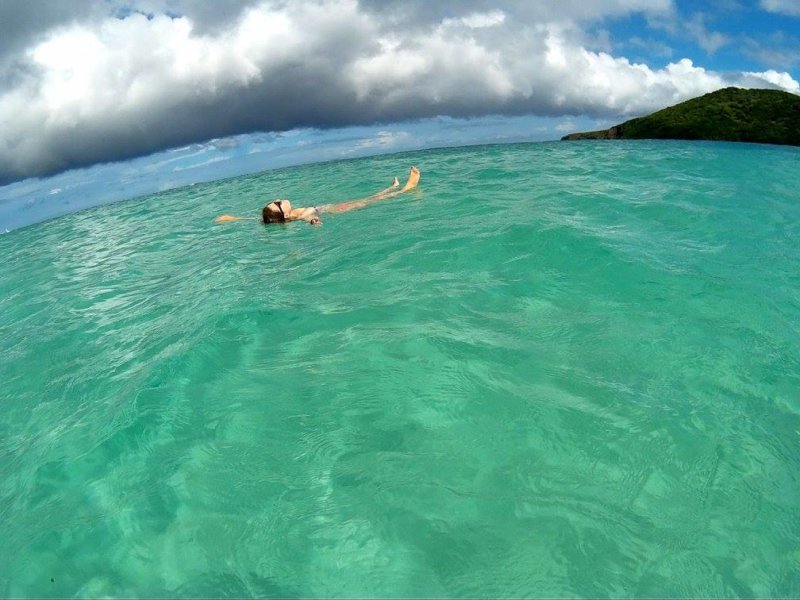
An active mind & buzzing intellectual curiosity: these are the hallmarks of the INTP. INTPs have a tendency to internalize everything, so that you may not be able to guess what they are thinking or feeling.
Yet this privacy does not mean nothing is happening inside–on the contrary they are constant philosophizer, observers, and even scientists of the world around them.
Our INTP travel friend Derek of Wandering Earl
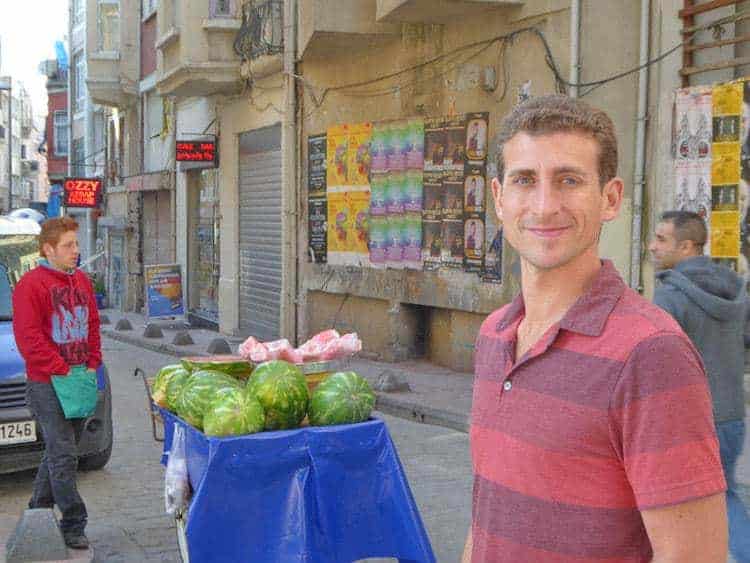
Comprising only a small percentage of the population, ENTPs are quick-witted and independent people who love a good debate. Bandying ideas back and forth is one of the ENTP’s favorite past times.
When traveling, this enthusiastic type is likely to be found matching strangers and locals wit for wit. This ties into the ENTP’s extraverted nature and makes it easy for them to meet and interact with others.
Their intelligence and confidence work in their favor when it comes to adventures, as this makes them bold and curious. With the ENTP travel personality, it is all about broadening the horizons.
Our ENTP travel friend Scott of At the Drop
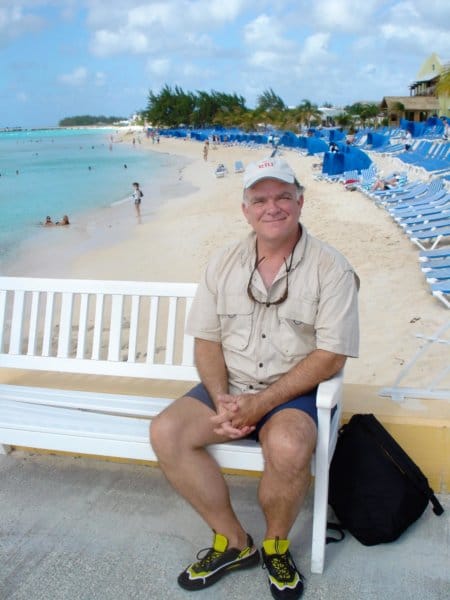
ENTJs are super driven people, and they tend to let nothing stand in their way. These natural leaders will overcome any obstacles that block their path. If the ENTJ wants to travel, you better believe he or she will make it happen.
With a decisive nature, ENTJs make choices quickly and share them with others. They have no problem taking charge, and if traveling in a group, may end up calling the shots.
They love a good time and a conversation and meet people quite easily; an ENTJ might be the popular center of attention in the hostel, simultaneously debating politics and planning a night out on the town.
Our ENTJ travel friend Elena

The INTJ loves to create ideas and possibilities and then capitalize them. Not content with daydreaming, INTJs know how to turn their goals into reality, and they proceed with ambition and strategy.
The INTJ is highly intelligent and insightful. This type works hard to understand everything they encounter, with keen observation and an interest in understanding inner workings and patterns.
The INTJ travel personality is likely to be found exploring foreign cultures with depth and passion, moving past “touristy” distractions and seeking authentic immersion.
Our INTJ travel friend Teri of Blue Sky Traveler

Both great listeners and chatty conversationalists, it is no surprise that the ESFJ is the personality type of “popular” individuals. ESFJs have no problem making friends, and they are loyal to those they are close to, helping them with problems and offering support.
Responsible and traditional, the ESFJ can be depended upon. They love to socialize and enjoy the finer things in life, as sensory, external stimuli appeals to them.
On their travels, ESFJs can be happy in a wide variety of activities but may be most content enjoying drinks with friends after a full day of shopping and sightseeing.
Our ESFJ travel friend Els of My Feet are Meant to Roam
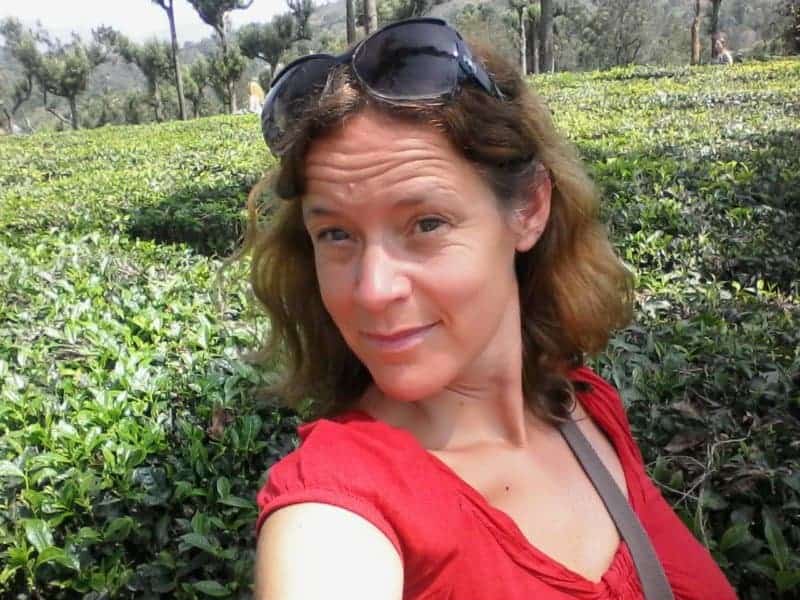
ISFJs are honest and protective people that care most deeply about their friends and family. They work hard to meet others’ needs and support them, but their generous yet private nature sometimes keeps them out of the spotlight. Still, the ISFJ loves to be of service and makes up a large population of “helping” professions.
In their travels, ISFJs may be the first to sign up to volunteer for a worthy cause. When not directly working with others, the ISFJ’s travels may take them to places of natural beauty or rich culture. With a vibrant inner life and a strong memory, the ISFJ enjoys taking in the sensory experiences surrounding them.
Our ISFJ travel friend Jessica of A Wanderlust for Life
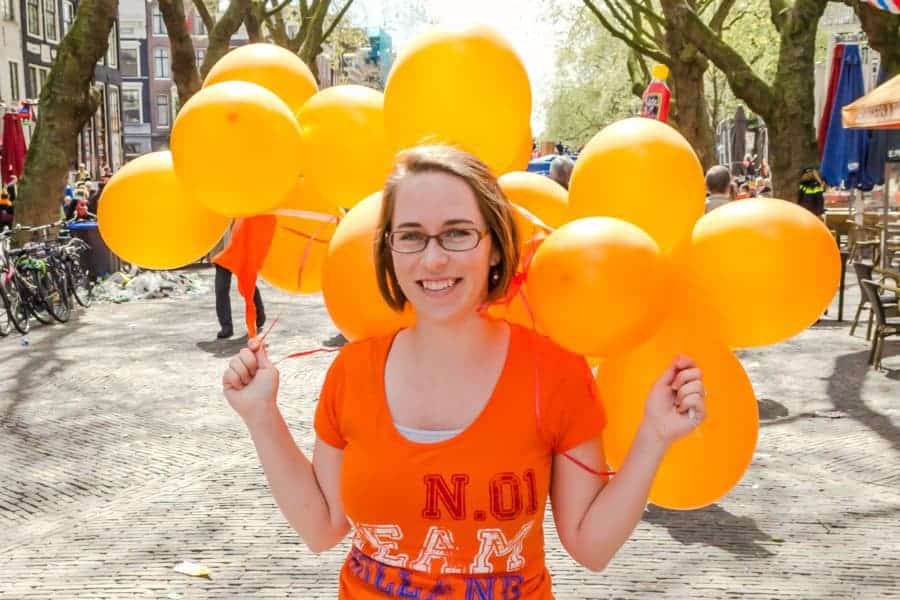
Spontaneous and fun-loving, the ESFP has a flair for the dramatic. To them, life is brimming with possibility and enjoyment, and they intend to live it to the fullest.
This desire, coupled with their innate social butterfly-ness, means the ESFP is practically born to travel. ESFPs appreciate luxury and like to make the most of their adventures.
Wanting to head out on a spur-of-the-moment food tour? The ESFP will be on board. Yet their zest for living in the moment and their passion for living large can make the ESFP a bit too impulsive. ESFP travelers may want to pack an extra stash of cash to account for the extra fun they will undoubtedly have!
Our ESFP travel friend is my best friend Haley’s mom Helen! 😀
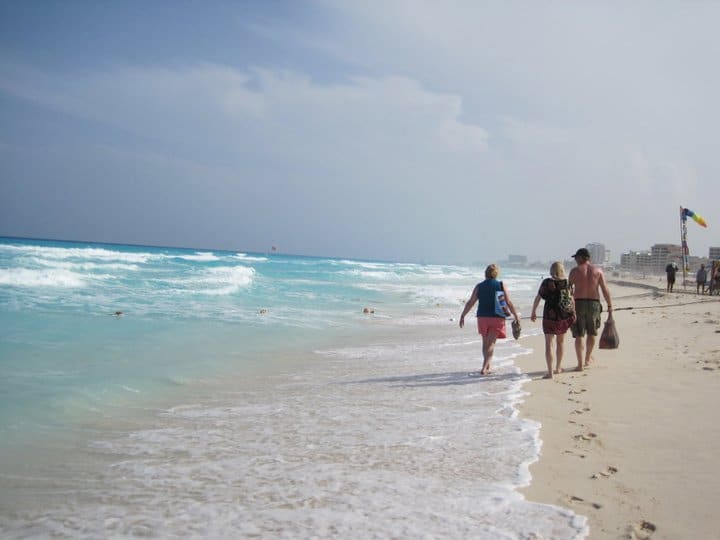
The ISFP loves to explore and experiment. While they travel the world they are keen observers, quietly absorbing their surroundings with their senses.
They experience the world as a vibrant and colorful place, and appreciate aesthetics and artistry. The ISFP journeys with spontaneity and flexibility, allowing others to be in charge and simply going with the flow.
Our ISFP travel friend Augusta

ESTJs thrive on being in charge and they do it extraordinarily well. Traveling alongside an ESTJ? These go-getters are super organized, and are likely to be the ones gathering people and getting everyone to join in on a massive pub crawl.
ESTJs are very social and love connecting with others, but they prefer to proceed in a structured manner. Want a well-planned itinerary that encompasses fun, challenges, and unique experiences? Go explore with an ESTJ.
Our ESTJ travel friend: Ben of Huge Party Travel
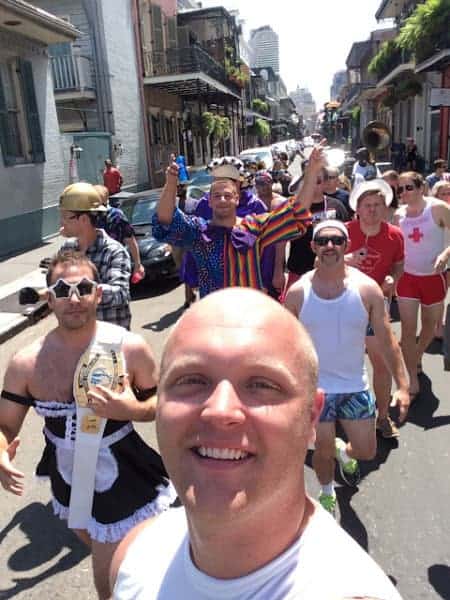
Logical, dutiful, and decisive, ISTJs enjoy knowing their place in the world and having a strong sense of order. They prefer familiar surroundings, but this doesn’t mean they don’t love to travel as much as the rest of us.
The ISTJ is most comfortable with a solid plan of action and with the ability to remain self-reliant. ISTJs are less impulsive than other types, and instead set out to journey methodically and strategically, likely saving money ahead of their travels and having a specific itinerary.
Because of this ISTJs ensure they enjoy their travels most.
Our ISTJ travel friend Tarah of Fit Two Travel
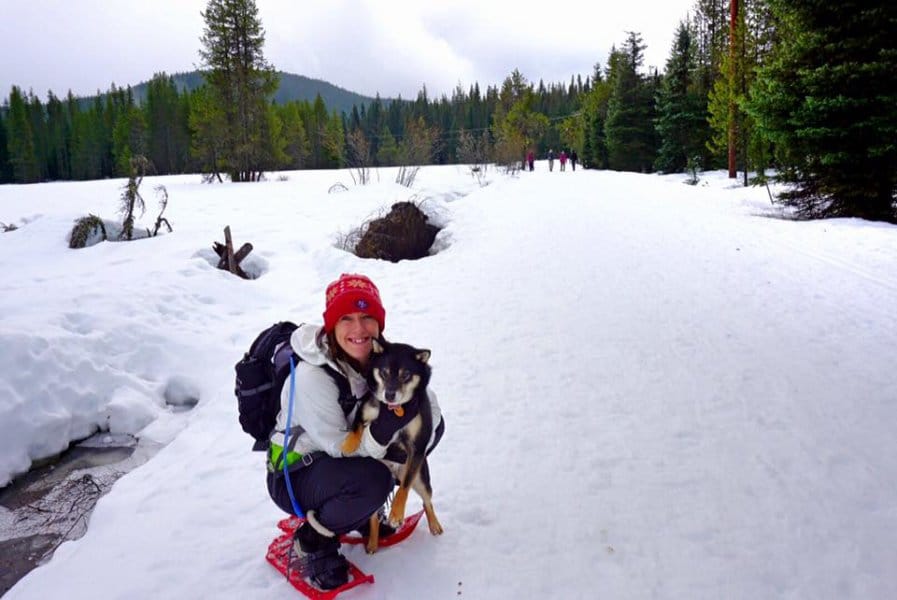
Energetic dyanamos, ESTPs adapt quickly and readily to their surroundings. They are active and curious, and may be the ideal personality type for adventure travel.
The ESTP loves to take action and never sits still for long. They live in the moment and make the most of their experience.
You might be an ESTP is your idea of a vacation involves bungee jumping, scuba diving, and wild scavenger hunts–anything that keeps your blood pumping and your excitement levels high.
Our ESTP travel friend Jeremy of TravelFreak
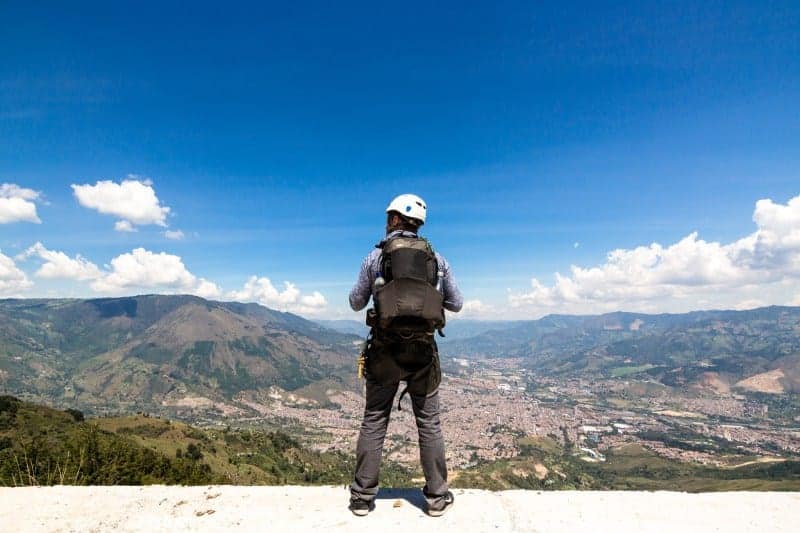
The ISTP loves to create, learn, and discover. Hands-on exploration is their forte, and they tend to be curious and spontaneous. These often unpredictable folks sometimes dive headfirst into things without intense consideration.
This can be a blessing and a curse to the ISTP traveler, but it certainly ensures their adventures will never be boring. On their journey, the ISTP is perhaps most likely to be found participating in a cultural activity, studiously observing the people and building a new skill.
Our ISTP travel friend is Aragorn….yes, the one from Lord of the Rings (couldn’t find any travel bloggers that fit this type! Surprising!)

The Travel Personality
Are most travelers of a certain type? I polled a number of travel friends and found the results to be quite interesting. It was tougher to locate S or Sensing individuals than Ns– those who use their intuition more strongly when reacting to their environment. Also more common in the travel personality were Extraverts. This may not be a surprise as adventurous types, and bloggers in particular, may be more outgoing and externally focused.
Yet, it seems that travelers have no one type. We come from a massive range of backgrounds, personalities, and characteristics. Our one commonality? A love for the world.
See you out there!

This travel personality article is purely for entertainment purposes and has no affiliation whatsoever with the official Myers Briggs Type Indicator ®.

Amy Hartle is the author of Do You Love Me? How To Stop Seeking Reassurance in Relationships , a book on reassurance seeking and relationship anxiety. Both her book and this blog are born of personal experience; Amy shares expert relationship advice from the lessons learned during her own 10+ years with her husband, as well as couples travel tips and romantic getaway recommendations, all gleaned while traveling the world together.

- Entertainment
- Rex Reed Reviews
- Awards Shows
- Climate Change
- Restaurants
- Gift Guides
- Business of Art
- Nightlife & Dining
- About Observer
- Advertise With Us
What Kind of Traveler You Are, Based on Your Myers-Briggs Type
Each mbti personality approaches exploring the world differently.
There’s no denying that a love for travel transcends personality type.
Sign Up For Our Daily Newsletter
Thank you for signing up!
By clicking submit, you agree to our <a rel="nofollow noreferer" href="http://observermedia.com/terms">terms of service</a> and acknowledge we may use your information to send you emails, product samples, and promotions on this website and other properties. You can opt out anytime.
While many members of each type are keen on exploring the world, there are significant differences in how they prefer to travel, as well as their motivations for doing so. Some types prefer short, adventurous escapades. Others prefer long, drawn-out experiences. And at the end of each trip, each personality walks away having learned something slightly different. Here’s how your Myers-Briggs personality type correlates to the traits you exhibit on the road.
ENFP: You’re a soul-searching traveler.
You travel not just to discover the world but to discover yourself and your place within it. Through each new experience, each new adventure, and each new fascinating personality you meet, you come to understand a little bit more about where you fit in the grand scheme of it all. What may seem like a series of disjointed adventures to others is actually a life-long journey that you’re taking inside of yourself—each new excursion teaches you a meaningful lesson and helps you construct a more holistic worldview.
Your travel mantra : “Not all who wander are lost.” –J.R.R. Tolkien
INFP: You’re an imaginative traveler.
When you travel, you aren’t just seeing new lands or meeting new people. Rather, you’re telling yourself a story inside your mind—one that educates, inspires and revitalizes you, every step of the way. For you, travel isn’t about being in the moment; it’s about reflecting upon the moment and coming to understand what it has taught you. You enjoy dreaming up the adventures you’ll have (and reflecting upon what past adventures have taught you) even more than you enjoy actually going on them. You may internally embellish your experiences once they’re over, but why not? Some of the best moments in your life have taken place inside your mind.
Your travel mantra: “Like all great travelers, I have seen more than I remember, and remember more than I have seen.” –Benjamin Disraeli
ENFJ: You’re a people-focused traveler.
For you, the trip isn’t as much about the sights you see or the places you explore as it is about the people you meet (or take with you) along the way. There’s nothing you value more than forming quality memories with loved ones, and travel allots you the opportunity to do just that. You tend to look back on your trips and remember not the details of the places you visited, but the essence of the fascinating and invigorating people you met along the way, each of whom made you fall in love with your location that much more.
Your travel mantra : “A journey is best measured in friends, rather than miles.” –Tim Cahill
INFJ: You’re a slow and inquisitive traveler.
You aren’t one for whirlwind vacations or sight-seeing trips, you want to travel slowly, meaningfully and inquisitively. You seek to learn what life is like in each new place you visit and to arrive at a profound understanding of how cultural and geographical context affects the human experience across the globe. For you, travel isn’t just a source of pleasure but a source of education. Unless you take the time to educate yourself thoroughly and meaningfully, your trip simply hasn’t served its purpose.
Your travel mantra : “Certainly, travel is more than the seeing of sights; it is a change that goes on, deep and permanent, in the ideas of living.” –Miriam Beard
ENTP: You’re a perspective-seeking traveler.
You travel not just to explore but to experience and understand different ways of life. In each new location you arrive at, you seek to gain a first-hand understanding of how this country’s system of government operates, how the locals earn a living, what issues plague different geographical areas, and how different lifestyles manifest in different places. You travel not just to explore the world but to deepen your understanding of it and to consider what you might have to learn from other cultures. After all, who are you to assume that your home country is getting everything right?
Your travel mantra : “One’s destination is never a place, but a new way of seeing things.” –Henry Miller
INTP: You’re a critical and inquisitive traveler.
It’s not that you travel to criticize other cultures; it’s that you do so to gain a critical analysis of your own. You enjoy melting yourself into a new country, culture or way of life in order to get an idea of how other parts of the world function. You thoroughly enjoy challenging your own perceptions of how government systems, economies, relationships, communities and lifestyles ought to manifest. The more differing perspectives you’re exposed to, the more biases you’re able to drop and the more clearly you’re able to understand the world around you.
Your travel mantra : “Travel is fatal to prejudice, bigotry and narrow-mindedness.” –Mark Twain
ENTJ: You’re a comfort-zone-pusher.
You’re a strategic risk-taker, and travel allots you the perfect opportunity to push your own boundaries and expand your personal comfort zone. You enjoy the new perspectives that are offered to you through travel and you see it as an opportunity to develop into a more educated and well-rounded person. The less comfortable you are in your surroundings, the more you’re forcing yourself to grow, expand and change—and personal growth is something you just can’t never get enough of.
Your travel mantra : “A ship in harbor is safe, but that is not what ships are built for.” –John A. Shedd
INTJ: You’re a student of the world and of the universe.
You travel not just to relax and enjoy yourself (though you aren’t opposed to the occasional vacation where that’s the case) but to learn and understand more about the world. You often travel in order to meet up with gurus or mentors who can teach you more about the field that you’re interested in (the field, of course, being life). You’re on a constant quest for wisdom and growth, and if there’s a specific physical location (or a person in a specific physical location) that can offer you that in abundance, you have no objection to packing up your bags and boarding a flight.
Your travel mantra : “All journeys have secret destinations of which the traveler is unaware.” –Martin Buber
ESFP: You’re an open-minded, adventurous traveler.
When you head out exploring, you’re heading out in search of true, unadulterated adventure. You want to see as much of the world as you possibly can, in as authentic a fashion as you possibly can. You have no intention of rotting away inside your comfort zone and growing old harboring regrets. You keep your mind open to every new opportunity that presents itself to you on the road. The more you push yourself to experience new things, the more you’ll learn about yourself and the world that surrounds you—and no amount of reading or speculating can stand in for that real-world education.
Your travel mantra : “Twenty years from now you will be more disappointed by the things you didn’t do than by the ones you did do. So throw off the bowlines, sail away from the safe harbor. Catch the trade winds in your sails. Explore. Dream. Discover.” –Mark Twain
ISFP: You’re a sensual traveler.
No, not like that . You’re a sensual traveler in that you use travel as a means of reawakening your senses. You have a tendency to get lost inside your mind throughout your day-to-day life, but when you’re out exploring nature or even just framing a photograph of a particularly beautiful landmark, you feel viscerally awakened and invigorated. Travel helps you to reconnect with the world that surrounds you and remember your unique place within it. It’s a palate cleanser for the body, the mind and the soul.
Your travel mantra : “Wandering re-establishes the original harmony which once existed between man and the universe.” –Anatole France
ESFJ: You’re a cultural explorer. You hold the customs, traditions and values of your own country incredibly close to your heart, and you’re thrilled by the opportunity to share in the customs, traditions and values of other nations. You’re a curious and highly respectful traveler, who likes to take in as much as you can from the local people when you go abroad. You’re fascinated by learning what makes different societies tick, and you believe that understanding that starts with understanding the people who make each society up.
Your travel mantra : “If you reject the food, ignore the customs, fear the religion and avoid the people, you might better stay at home.” –James Michener
ISFJ: You’re a sentimental traveler.
You enjoy traveling, but not quite as much as you enjoy having traveled. You love the lessons that travel teaches you about the world around you—about the history that makes up different nations, the people who populate them presently and the various customs and practices that differ so radically from your own. Travel enriches your worldview and forces you to think about things in an entirely different way. You always have a new thought to chew on once you arrive back home. You enjoy reflecting on those thoughts almost more than you enjoy going on the trips themselves.
Your travel mantra : “Once you have traveled, the voyage never ends, but is played out over and over again in the quietest chambers. The mind can never break off from the journey.” –Pat Conroy
ESTP: You’re a flexible and adaptable traveler.
When you travel, you want to leave no rock unturned and every previously uncharted course discovered. You seek to take in the world around you in as raw and genuine a fashion as possible—every experience, regardless of how risky or unconventional, teaches you something and provides you with a new opportunity. And you’re not one to pass up new opportunities. When you travel, you keep your plans and your options wide open. After all, you can never truly plan the kind of adventures you’re interested in having.
Your travel mantra : “Life is either a daring adventure or nothing.” –Helen Keller
ISTP: You’re a clarity-seeking traveler.
You’re never entirely sure what to expect from an experience, a group of people or a physical location until you get there and take it all in firsthand. To you, travel serves as a great and almighty clarifier—it helps you understand how the world outside of your comfort zone compares to the life you’re accustomed to living. And you thoroughly enjoy the process of comparing the two. Every new place that you set foot in helps you gain a less biased and more realistic worldview—and hey, if you can throw some adventure into the mix while you’re at it, all the better!
Your travel mantra : “To travel is to discover that everyone is wrong about other countries.” –Aldous Huxley
ESTJ: You’re an intellectual traveler.
You travel not just to enjoy the world that surrounds you but to understand it on a deeper level. The more you learn about other cultures, customs and ways of life, the more you understand about your own and why the nation you were born into functions the way it does. You travel not just to have new experiences but to broaden your worldview and to bring new schools of thought to your awareness. The more you learn about how the rest of the world functions, the more effectively you’re able to structure your own.
Your travel mantra : “We shall not cease from exploration, and the end of all our exploring will be to arrive where we started and know the place for the first time.” –T.S. Eliot
ISTJ: You’re an absorptive traveler.
You travel not just to enjoy the experience but to soak in as much information as you can about the history, culture and background of the sites that you visit. You seek out educated guides or locals who can help you get a sense of what you’re experiencing. You want to walk away from each trip you take with a new knowledge base. You’d much rather learn and grow through traveling than waste your time binge drinking and forgetting everything you’ve seen.
Your travel mantra : “The World is a book, and those who do not travel read only a page.” –Saint Augustine
Heidi Priebe is a personality psychology writer who focuses primarily on the Jung-Myers model of psychological type. She is the author of five books, including The Comprehensive ENFP Survival Guide and How You’ll Do Everything Based On Your Personality Type . Follow her on Facebook here or argue with her on Twitter here .

- SEE ALSO : Don’t Just Retire; Rewire
We noticed you're using an ad blocker.
We get it: you like to have control of your own internet experience. But advertising revenue helps support our journalism. To read our full stories, please turn off your ad blocker. We'd really appreciate it.
How Do I Whitelist Observer?
Below are steps you can take in order to whitelist Observer.com on your browser:
For Adblock:
Click the AdBlock button on your browser and select Don't run on pages on this domain .
For Adblock Plus on Google Chrome:
Click the AdBlock Plus button on your browser and select Enabled on this site.
For Adblock Plus on Firefox:
Click the AdBlock Plus button on your browser and select Disable on Observer.com.
What’s Your Travel Personality? What’s Your Travel Style?
Travel PERSONALITY | Travel STYLE
If you’re considering an extended multi-destination or around-the-world journey chances are you’ve got a pretty advanced sense of curiosity about the world and a strong personality to boot. The first part of deciding where you want to go on your trip is to determine your traveling “personality,” that is, how you identify yourself as a traveler, the passion behind your planning, your modus operandi if you will. To help you identify yourself (and likely travel companions ), we’ve pinpointed a few basic travel personalities – one or a few are likely to fit your profile. You can use them to establish an overarching theme for your trip, or to divide up the world into those places that have a place on your RTW route and those that you probably don’t care to include.
Travel Personalities
Adventurous travelers.
If you imagine yourself bungee jumping in New Zealand, running with the bulls in Pamplona, dancing until 6 in the morning in Berlin, heliskiing from the top of a mountain in Banff or boating down the Amazon, all signs point to you being an adventure traveler. National Geographic has a list of the top adventure tour operators and outfitters worldwide that may be worth a look. Of course, you don’t need to be a part of a tour to have an adventure, but if you’re not sure what adventure travel means or if you just want an idea of what kind of companies operate tours and which ones to use, it’s a great place to start. Recommended destinations for adventure travelers : New Zealand, Brazil, Bolivia, Nepal/Tibet, Tanzania, India.
ROMANTIC TRAVELERS
If your travel dreams are populated by the perfect sunset on a secluded beach in the Seychelles, gondola rides in Venice, and a honeymoon for the storybooks, this is probably you. Travel can be an amazing way to connect with your partner, or even meet someone new! Check out Travel and Leisure’s list of the 50 most romantic places for a general idea of what’s out there in the way of romantic destinations. The notion of taking off to far-flung places is a romantic idea in itself, so grab your partner, your passports, and get out and see the world. Recommended spots for romantic travelers : Santorini, Venice, Paris, Buenos Aires, Goa, Bali, Phuket, Fiji, Tahiti.
INTELLECTUAL TRAVELERS
If travel is just another way you broaden your internal encyclopedia with art, culture, and history, and your dream itinerary includes days filled with museums, archeological sites, groundbreaking architecture and traditional experiences, you may be an intellectual traveler. Lucky for you, destinations all over the world cater to the student inside of all of us. The world’s full of lessons, and travel is the way to learn them. Recommended regions for intellectual travelers : Europe, India, Japan, Machu Picchu, Istanbul, Cairo.
FIRST-TIME TRAVELERS
Will this be your first time traveling internationally? A little nervous about flying overseas? Concerned that you don’t know what you don’t know? Those are all normal concerns for first-timers. Don’t worry. There are lots of places that’ll present much less of a cultural shock where you can ease yourself into the world at large. You’ll be a pro before you know it. Recommended stops for first-time travelers : London, Paris, Rome, Costa Rica, Australia, New Zealand.
DANGER JUNKIES
If you prefer to live on the edge and explore destinations widely considered off-the-beaten-path or even unsafe, you’re probably a danger junkie at heart. Your ideal trip includes Ghana, possible brushes with the FARC in Colombia, or meeting some Maoist rebels in Nepal. Robert Pelton is your personal idol. You’re a risk taker and enjoy finding destinations that give you the thrills you desire. Of course, we caution our travelers to read US State department warnings, as well as the warnings posted by other nations (that said, many warnings can be colored by political agendas). Recommended locales for danger junkies : Tibet, Colombia, Uganda, Papua New Guinea
ALL, A COMBINATION, OR NONE OF THE ABOVE
Most people want to include elements of every different type of travel in their around the world experience, and we certainly encourage you to do so, too. The best way to prepare for an extended journey is to be completely honest with yourself about what you want to accomplish with your RTW trip and how you want to experience the world. The truth is that most travelers don’t fit neatly into one travel personality type. Still, it’s important to think about what kind of activities and attractions appeal to your personality, not just what cities you want to visit or on what airlines you’ll be flying. Another way to narrow down the endless possibilities while making complex travel plans is to identify how you like to travel, i.e., your travel style.
5 Travel Styles .
Traveling off the beaten path.
You’re not the average tourist. You want to add more layers to your travel experience and have rich cultural experiences every step of the way. You try things that more tentative travelers might skip. Popular tourists spots are crowded for obvious reasons—history, beauty, craftsmanship—but some of the most rewarding traveling experiences happen away from such places. Some of them are as simple as a cup of tea with a local shopkeeper in Turkey, or a conversation with local university students about politics in a bar in Colombia. Sometimes the proposition of striking out on your own in a place where you don’t speak the language is daunting, but it’s all part of the travel experience, and courage, not fear, reaps the greatest rewards in new places. Suggestions on how to get off the beaten path:
- Go somewhere that’s not in your top 10 places to see.
- Visit a village as opposed to a city.
- Skip your first choice of continents.
- Make a point of interacting with locals.
While it’s not easy, you can get away from the camera-toting masses, perhaps right in the middle of the most visited city of all. Check with your personal travel consultant for help discovering that proverbial and elusive “hidden gem”.
Traveling In Style
You need a little comfort on the road, and you’re willing to stretch your budget a little to get it. There’s no shame in wanting fancy sheets and a warm pool every once in a while. If you’re going to be traveling RTW for several months, you may not want to always (or ever) go the cheapest route. A hot shower with good water pressure and a comfortable bed are a miracle after a few months, weeks or even days of traveling. Many of our clients like to book a few splurges into their trip, even if they’re trying to keep their costs down as much as possible. If you’re looking to keep your budget on track , you might consider doing this in parts of the world where a splurge isn’t that expensive. For example, maybe during your travels through Europe, you’d stay in budget hotels and hostels, but the night you arrive in Jaipur you might hire a car to pick you up at the airport and drive you to a 5-star hotel built into an old palace. Here are a few other ways where you might spend a bit more money to have better experiences:
- Trek the mountains in Nepal with a guide
- Go on safari in East Africa
- Cruise to Antarctica from Ushuaia
- Tour the Silk Road
You might also consider upgrading your long flights: a fully reclining seat for that 10 or 20-hour flight might just be worth the investment. AirTreks can accommodate first and business class upgrades for all or part of your trip, often for a discount.
Traveling with an Agenda
You have things to do, places to be, going from place to place with an angle, an agenda on your trip. People who are working weddings, studies, volunteering, practices or business into their RTW trip fit into this travel style. For some people, traveling isn’t about aimlessly wandering the world, bouncing from tourist site to tourist site — they hit the road on a mission with a strong sense of purpose and responsibility to themselves (and others) to motivate them and help them pull it off. Of course, as an individual, this can mean any number of things — maybe your life’s dream is to climb K2 or to take a perfect honeymoon at a resort in the Maldives and fit in a visit to Venice’s Grand Canal and the Eiffel Tower in Paris Or, maybe you have a meeting in Shanghai on Monday and a meeting in Bangalore on Thursday and need to be in San Francisco, then Toronto, then back to New York after that. Perhaps you’re on a wedding tour, paying respect to friends in Phuket and family in Rome, or maybe you just got accepted to study at an ashram in India. Perhaps you’re on a wedding tour, paying respect to friends in Phuket and family in Rome, or maybe you just got accepted to study at an ashram in India. Whatever your “must do” may be, it can form the linchpin of your trip and serve as something to build the rest of your RTW trip around.
Traveling to Get Immersed
Getting in touch with a place takes a little time. You’re the type of traveler that likes to move slowly, to connect with locals in ways you just can’t on a whirlwind trip. The Peace Corps is just one way to immerse yourself in cultures around the world, long-term, slow travel is another way to stay in a place over a long period of time to experience what daily life is like. A great way to stop, recharge the batteries and get in touch with a local way of life is to rent an apartment in the city of your choice. It slows you down and allows you to connect with a city from a local’s perspective, as opposed to seeing as much as you can every day to check things off your list as a tourist. You could even get a job, do the “metro, work, bed” routine for awhile. Teaching English is a popular and easy option in many destinations if you’re a native speaker.
Responsible Travel
You make a point of dedicating your travels to the greater good. As countries around the world develop faster and faster, and as the global community starts to see its impact on the environment, more and more travelers feel that integrating some aspect of responsible travel is essential on every trip. Lonely Planet defines responsible travel as:
“Minimizing your impact and maximizing your connection with people and the environment. It’s about making a positive contribution and having the most rewarding and inspiring travel experiences of your life.”
Our ground partner Global Basecamps offers sustainable tours, treks, and accommodations all over the world. Many volunteer organizations also have conservation projects you can participate in on your travels such as tagging sea turtles, beach cleanups, and cultural preservation efforts. You can also volunteer with organizations like Global Vision International or Volunteer Abroad .
If you want to immerse yourself in local culture on a smaller scale, there are lots of ways to do it. Edward Hasbrouck recommends visiting a local English school and volunteering to be a conversation practice partner for the day.
Independent travelers can play a vital role in fostering a universal attitude of respect by helping support local communities cultures in the hard work of maintaining their cultures and environments.
Build Your Trip


Types of Travel Personalities: What Kind Of a Traveler Are You?
Different types of travelers will have different ways of interpreting the same destination. Each traveler will have their own unique idea for their perfect vacation. How you see yourself as a traveler or travel personality decides where you will travel and what vacation needs are.
Some travelers seek their souls, while others travel to experience different traditions and cultures. A few travelers are adventure lovers and travel to fulfill that motive. We have listed the most common types of travel personalities. See which one you belong to.
Table of Contents
Travelers prefer different types of travel . A pioneer loves to seek new destinations, particularly foreign ones, and looks out for new experiences on every trip. Their enthusiasm for travel also translates to being more active physically while on a journey and at home. This type of traveler is not a lot into extreme holidays.
They plan the trip by drawing up an itinerary first of the places they would like to visit and schedule the trip when they arrive at the destination. This type of traveler also prefers to travel with company. And it is easy as 17% of the population belong to this travel personality.
Travelers from this personality group are more likely to travel to more places and more frequently than others. They also like to participate in unique activities more than others. Venturers travel with a lot of enthusiasm and can easily fit in with a small group of travelers. They like to explore places that are usually off-beat and seek out adventures that are extraordinary compared to most.
Three out of ten people share the personality traits of this type. People with this personality trait are more predictable and steady regarding how they approach their daily lives. They usually have more varied and diverse life travel interests on a daily basis than the other more traditional traveler. Although these people prefer to travel by road, they can also fly or drive when heading out for leisure trips.
The sightseer is a carefree and casual traveler who is also easygoing, calm, and unruffled in challenging situations. It takes a lot to ruffle their feathers. Many of their friends may term them to be mellow. Still, they are typically known to be their friends’ peacekeepers as they have a pleasant, friendly, cheerful, and agreeable disposition.
These travelers are usually great as travel companions and are good company in general. About one out of six travelers belong to this personality group.
Traditional
This type of traveler prefers a predictable, more structured life. They are not much for spontaneity and would instead follow a set routine of patterns, as they like to know what they can expect from the trip. They prefer this to plan and prepare for the trip as much as possible. The traditional personality traveler likes to play it safe, which is why they are into predictable situations.
The control freak makes it their job to see that everything is going as planned. For that matter, the control freak will also plan the entire trip themselves. They take it upon themselves to make sure that everyone is on time or keeping up with the pace of the others. They will also badger the restaurant staff when you all go out for dinner on the trip if the food hasn’t arrived timely on the table.
The controller is good at heart, they just want to ensure that everything is going the proper way, but it does cause displeasure or embarrassment to the other team members from time to time. The controller likes to take the reins of the trip and guide everyone while admonishing anyone who is not on the right track.
The Know-It-All
You might be taking a guided tour with expert local guides who provide you with bonafide knowledge of the places you are visiting; despite that, the traveler with a know-it-all trait will keep commenting on the sites. They will impart their own knowledge, as they will be armed with facts for every situation.
They will be convincing enough that they know exactly what they are talking about. Apparently, they are useful as travel companions, but with time, one will start to wonder about the authenticity of all the info. Their encyclopedic monologues can get tedious, though, after a point.
The Party Animal
On your trip, you might want to head out for some casual beer and intellectual conversation, but the traveler with a party animal personality will steer things the other way. Whether the fellow travelers like it or not, they will keep ordering tequila shots for the entire group till late at night. The party animal just doesn’t want the night to end. So as soon as you thought the night was drawing to a close, they will order another round of drinks.
The rest of the group might be amused, sometimes disapproving of everything the party animal is up to. It gets annoying when the party animal sleeps the next day hungover from all the frivolous activity of the previous night. This might hamper the tour flow, and what gets more annoying is if they start it all over again the next night.
So, which travel personality do you identify with? Assess your personality and see which one you identify with.
The whole point is to enjoy yourself while traveling, regardless of your personality group. Have fun and allow the others to enjoy your company too by being a team player on the trip. Bon Voyage!
Related Posts

11 Exciting Microadventures to Quench Your Adventurous Soul
This page may contain affiliate links. More info in our Privacy Policy Thirsty for some adventure? Go out and try one of our top 11…
Read this article »

10 Best Luxury Eco Hotels In the World
This page may contain affiliate links. More info in our Privacy Policy There are uncountable, luxurious 5-star hotels around the globe. But in the face…

5 Must-See LDS Temples Around the World
This page may contain affiliate links. More info in our Privacy Policy If you are planning a trip to visit one of the many LDS…
Leave a Comment Cancel Reply
Your email address will not be published. Required fields are marked *
This site uses Akismet to reduce spam. Learn how your comment data is processed .
- March 15, 2023
- Know Yourself , Travel Personalities
Types of Travelers: Where to Travel Based on Your Personality

Are you an adventure seeker or a beach bum? Are you a type of traveler that prefers the city life or the great outdoors?
Every traveler has their own unique personality, and it’s important to find destinations that match your interests. In this post, we’ll explore different types of travelers and suggest some top travel spots based on your personality.
What are the 6 Types of Travel Personalities
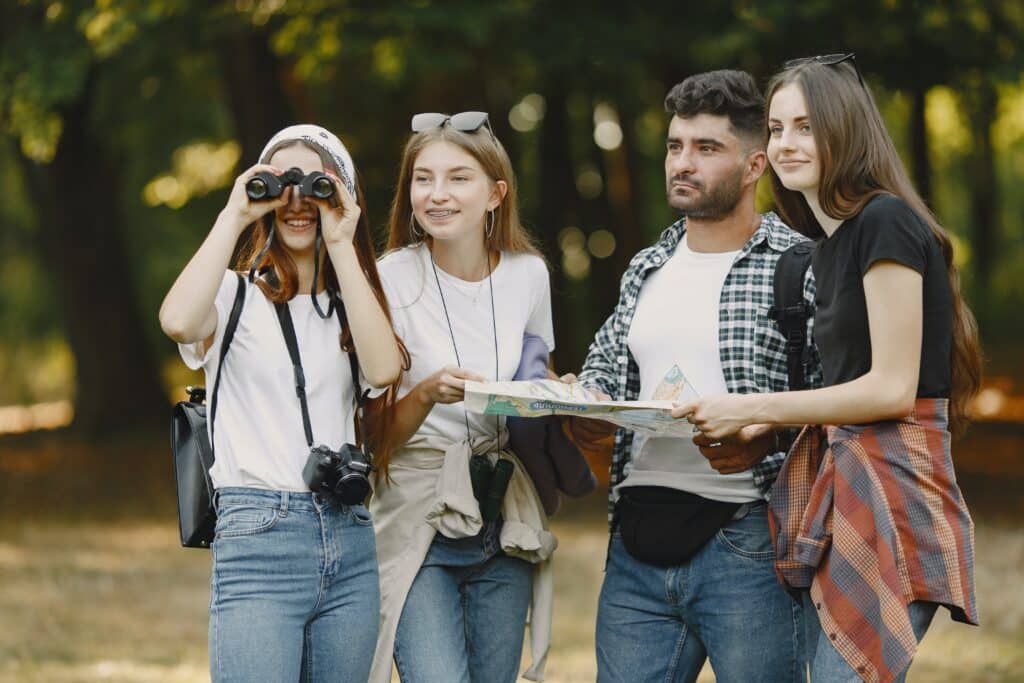
There are all types of travelers out there, and each one has their own unique personality. Some people love to explore new cultures and meet new people, while others prefer to relax and take in the sights. No matter what your personality is, there’s a perfect destination out there for you.
The six different travel personalities are: Explorer, Adventurer, Globetrotter, Traveler, Passenger and Tourist.
Where to Go if You Are an Explorer
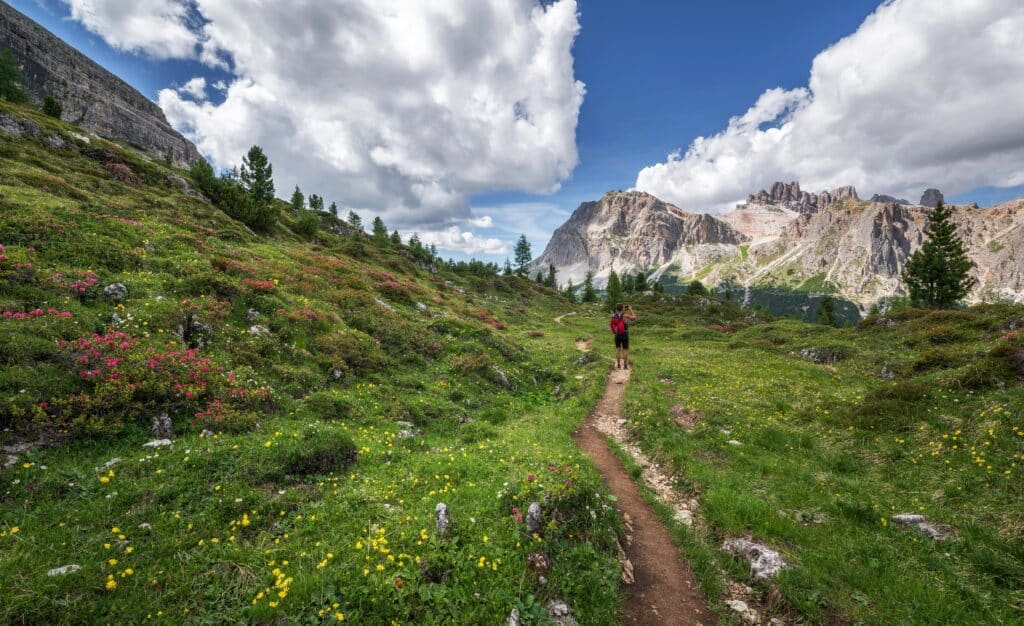
If your travel personality type is the Explorer , you are the first person to explore a new destination before everyone else arrives. The Explorer travel personality type thrives on discovering places in their natural state before tourists overwhelm them. You thrive on spontaneity in everything you do. You’re the one who marks the paths rather than following the signs.
Here are the suggested travel destinations and itineraries for the Explorer travel personality type:
1. Tanzania
Explore Tanzania in this 20 day Tanzania cultural package, you will get to meet & immerse yourself in a daily life with different cultures & meet some wildlife on your way!
2. Montenegro
Go for a hiking and discovery trip in northern Montenegro and discover sumptuous natural mountain landscapes through the farms and hamlets of five mountain ranges. Discover the Peaks of Montenegro and meet its locals for an unforgettable trip.
Trek through the mountains and Valleys of rural Northern Laos , cruise rivers and truly engage with local hilltribes. Starting from your pick up at the Laos/Thailand Border you will be taken on an adventure through tiny villages, which are home to many of the different ethnic groups in Laos.
The Nam Ha National Protected Area will be your base to set out on a trek of a lifetime through the jungle. Visit the emerging towns in the area where farmers and local artisans come to trade their wares before reaching the former Royal Capital and UNESCO world heritage site Luang Prabang.
Where to Go if You Are an Adventurer
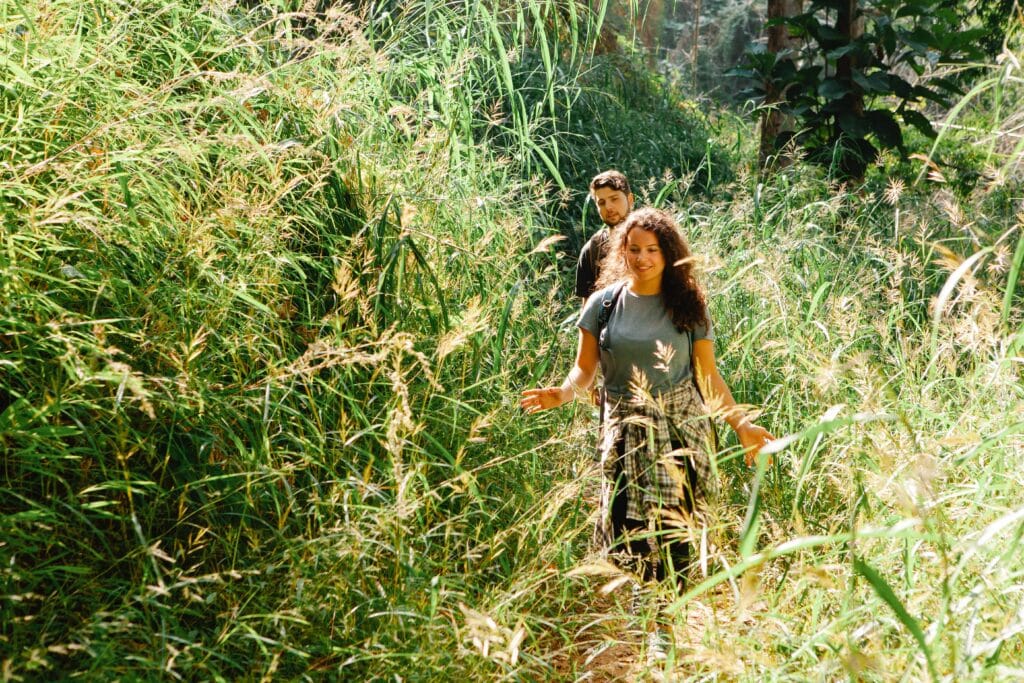
If your travel personality type is the Adventurer , you are a natural-born backpacker and that spirit will remain in you forever on all the trips you take.
The Adventurer travel personality type is inspired by nature in all its forms, and there’s no better place to be for you than immersed in mountains, waves, snow, or rivers. Though cities are not your natural terrain, you know that they, too, can be places of great adventure. An explorer might discover a destination, sure, but it’s an adventurer who makes it a trend among travelers.
Here are the suggested travel destinations and itineraries for the Adventurer travel personality type:
Experience the best of Peru with iconic hikes . Addressed to hikers who wish to discover the majestic Peruvian Andes, this itinerary allows you to get off the beaten tracks and be amazed by the sepctacular and unique landscapes. Much less known than the Salkantay trek or the Inca Trail , the Lares trek takes you along the ancient incas’ paths in the heart of the Sacred Valley, crossing small Andean villages before reaching Machu Picchu. This trip will take you high in altitude and will guide you from the Amazon to the city of Machu Picchu.
2. Costa Rica
Raft, Hike and Explore Costa Rica . This multi-sport trip is the perfect adventure week for you in Costa Rica. 7-days of adventure and nature tours: whitewater rafting, hiking along the Arenal Volcano and Monteverde Cloud Forest, horseback riding and zip lining.
Enjoy the Ultimate Gorilla and Wildlife Safari experience . The tour will take you through the most amazing places in Uganda: You will have the opportunity to visit Bwindi Impenetrable national park for Gorilla tracking experience, the proceed to Queen Elizabeth National park for the Game viewing, bird watching, boat ride on kazinga channel, Chimpanzee trekking and also interact with the locals through the local coffee tour.
WHERE TO GO IF YOU ARE A GLOBETROTTER
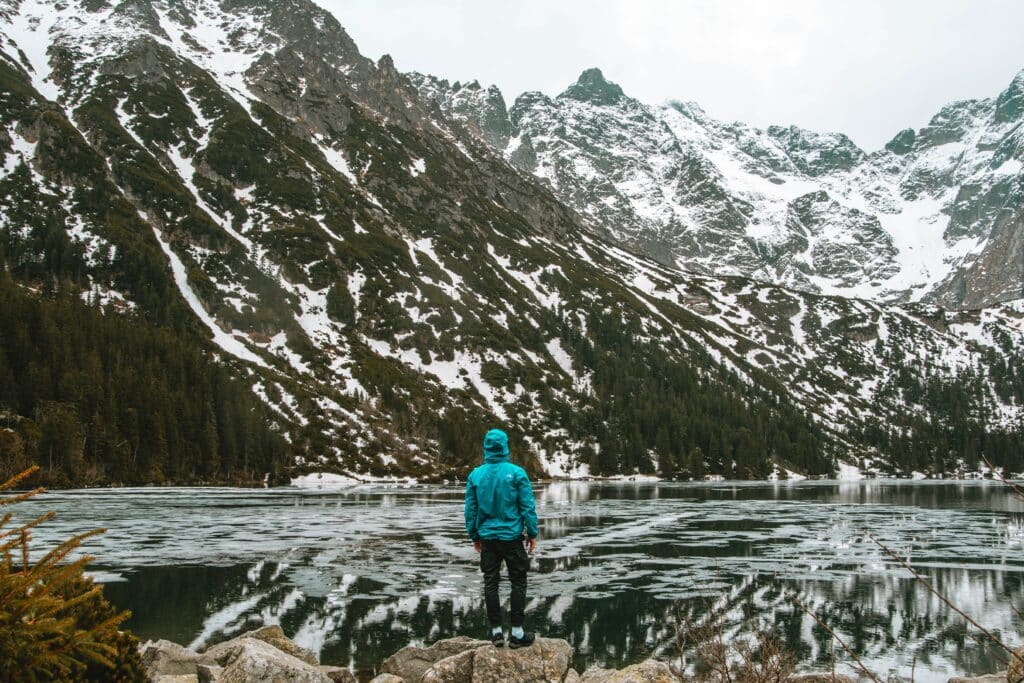
If your travel personality type is the Globetrotter , you flourish in the thrill of a new destination waiting to be discovered. You prefer seeking out places that are not yet overrun by tourism.
The Globetrotter travel personality type can easily switch between a backpack and a suitcase depending on the destination, but in both cases, you’ve mastered the art of packing. You are well-informed about the must-see places, but you also appreciate a certain degree of flexibility.
Here are the suggested travel destinations and itineraries for the Globetrotter travel personality type:
1. Latvia and Lithuania
Discover the unspoiled Wonders of Latvia and Lithuania . If you are looking into spending your holiday in an unspoiled place which is not overcrowded with tourists and will bring you to the heart of nature and sightseeing with UNESCO sites, we prepared a perfect 2 week journey through Lithuania and Latvia for you.
This trip will be a breathtaking experience of getting to know two beautiful countries where magical nature meets ancient castles, remarkable modern cities are still full of old myths and history.
Experience the natures of Guyana . This classic small group adventure takes in many of the highlights of Guyana: visit Kaieteur and Orinduik Falls before travelling to Iwokrama for jungle hikes, boat trips, the Iwokrama Canopy Walkway, and the chance to see the elusive jaguar. Stay in the Makushi village of Surama before going into the savannahs in search of giant river otters, giant anteaters and black caiman.
Feel Like a Jordanian Family . Indulge into the magical ancient world of Jordan on this thrilling adventure! This experience highlights the most exciting corners of Jordan, from natural reserves to historical Jerash to magnificent Petra, from Wadi Rum desert to the blissful Dead Sea. With a carefully weighted balance of activities and downtime, you will love this cultural Middle Eastern experience.
WHERE TO GO IF YOU ARE A TRAVELER
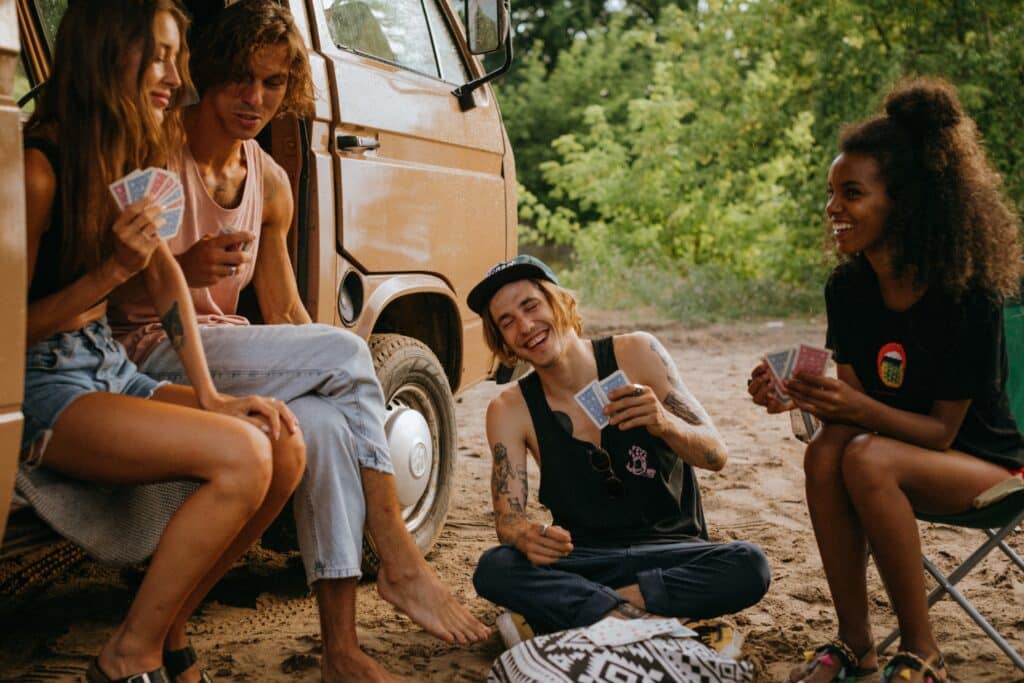
If your travel personality type is the Traveler , you like being around other tourists. You are very sociable and love making new friends.
The Traveler travel personality type has a weakness for road trips, especially if they’re with your favorite travel companions. Bonus points if a camper van or motor home is involved.
Here are the suggested travel destinations and itineraries for the Traveler travel personality type:
Enjoy island hopping in Athens, Mykonos and Santorini . Welcome to Greece! The city of Athens is one of the world’s oldest cities, the historical capital of Europe and a city of culture, history and philosophy. Athens today is a vibrant metropolis that blends it’s proud past with its dynamic modern present. At the same time, you will have the chance to experience two magical islands, Mykonos and Santorini!
Check out Golden Triangle & Kerala . Golden Triangle is the name given to the most famous trinity of Indian tourism – Delhi, Agra & Jaipur. This trip takes you through the Golden Triangle along with a wildlife treat (Ranthambore Tiger Reserve). The second part of the trip will take you through “God’s own Country” – Kerala. Leave India with nothing but the best of memories!
Explore the Deep Chiapas jungle and Yucatán peninsula . Located on the eastern side of the Yucatan Peninsula, Quintana Roo offers the beautiful waters of the Caribbean Sea, top-notch tourist resorts, white-sand beaches, marvelous ecological reserves and ancient Mayan ruins.
Here you can visit all kinds of places that range from Cancun, an important destination for national and international tourists which has a 30 km (19 mile) stretch of beaches and an impressive hotel zone, to the Sian Ka’an Biosphere Reserve, which was declared a World Heritage Site by UNESCO.
WHERE TO GO IF YOU ARE A PASSENGER

If your travel personality type is the Passenger , you don’t prefer to plan a long trip because you can see and do it all by organizing short, yet intense weekend getaways. The Latin phrase “veni, vidi, vici” resonates with you: I came, I saw, I conquered.
If you are the Passenger travel personality type , you are easy-going, carefree, laid-back and usually informal (although you will get dressed up on a special occasion).
Here are the suggested travel destinations and itineraries for the Passenger travel personality type:
1. Indonesia
Enjoy a sailing trip in Komodo Island With Phinisi Boat . Komodo Island named from the famous lizard living on it is the biggest island of the Komodo National Park with 390 km2. With an estimated population of 1 000 dragons living on the island, it is slightly less than Rinca. Wild pigs, water buffalos, Sumba deers, monkeys, wild horses and many snake species are present on the island.
2. United Arab Emirates
Check out this Stop Over Package in the Middle East . This package is created mostly those who wants visit Dubai for short period, just like as Stop Over, and to continue their trips in another country near by. Stay in a 4* hotel with private transfers, have breakfast, and go on a multilingual city tour! Visit Dubai and know more about its rich history.. after that we will take you to the desert for an unforgettable adventure!
3. Tanzania
Book this special Tanzania Northern Highlights Safari . 5 Day fast paced Tanzania safari to Lake Manyara National Park, Serengeti National Park, the Ngorongoro Crater (UNESCO World Heritage Site) and Tarangire National Park.
WHERE TO GO IF YOU ARE A TOURIST
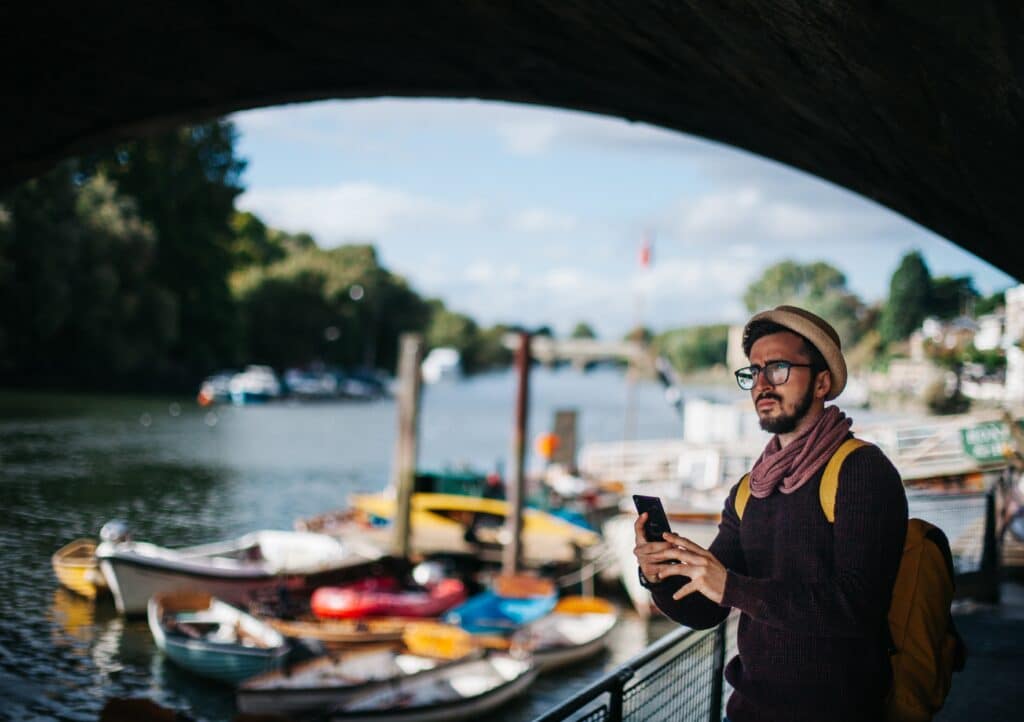
If your travel personality type is the Tourist , your personality stands out for its honesty and coherence. You enjoy sightseeing considerably, and feel that having a local guide accompanying you is indispensable.
If you are the Tourist travel personality type , You love it when your trip goes perfectly as planned, just as we love planning perfect trips for you. You value the tranquility and peace of mind that you experience when everything goes smoothly, just like you hoped it would.
Here are the suggested travel destinations and itineraries for the Tourist travel personality type:
Get a glimpse of Classic Italy . On this twelve-day tour you will discover the classical Italy and its gems, from the food and wine to the beautiful Venice and Florence.
2. Southeast Asia
Get the highlights of Southeast Asia . Discover the highlights of South East Asia on this extensive, exhilarating adventure through Thailand, Vietnam and Cambodia. Ancient wonders, bustling cities and stunning landscapes await!
3. Costa Rica
Drive yourself to discover Costa Rica’s treasures . Costa Rica is a land of real treasures, natural wonders, and marvelous destinations. The treasures are hidden in unique places, surrounded by the most beautiful forests, mountains, beaches, and the people who protect these treasures in Costa Rica are lovely, humble, and welcoming. This self-drive trip gives you the chance to go off the beaten path treasures of this tropical country.
Explore Baboo Showcase Itineraries
Baboo tours & local experts.
Plan your next dream trip with one of our hand-picked, highly experienced, licensed, and insured Local In-destination Experts!

Here you can find some amazing travel stories, to tickle your travel bone or just to dream away. Sometimes we travel without moving.

The Rise of Ethical Travel: Trends and Insights
Environmental conservation, cultural preservation and more

Greece’s Dream
When we set out to recognize the natural architectures of the Epirus region of Greece, it was not so clear...

Things to know for the Maldives
When planning to visit a new destination, it can be incredibly helpful to do some research, to ensure your trip...

Unlock the world’s secrets

- How it Works
- Sustainability
- Start New Trip
Top Destinations
- Food + Drink
Explore the best of the world. Access insider tips and hotel recommendations from our travel tastemakers
By proceeding, you agree to our Privacy Policy and Terms of Use .
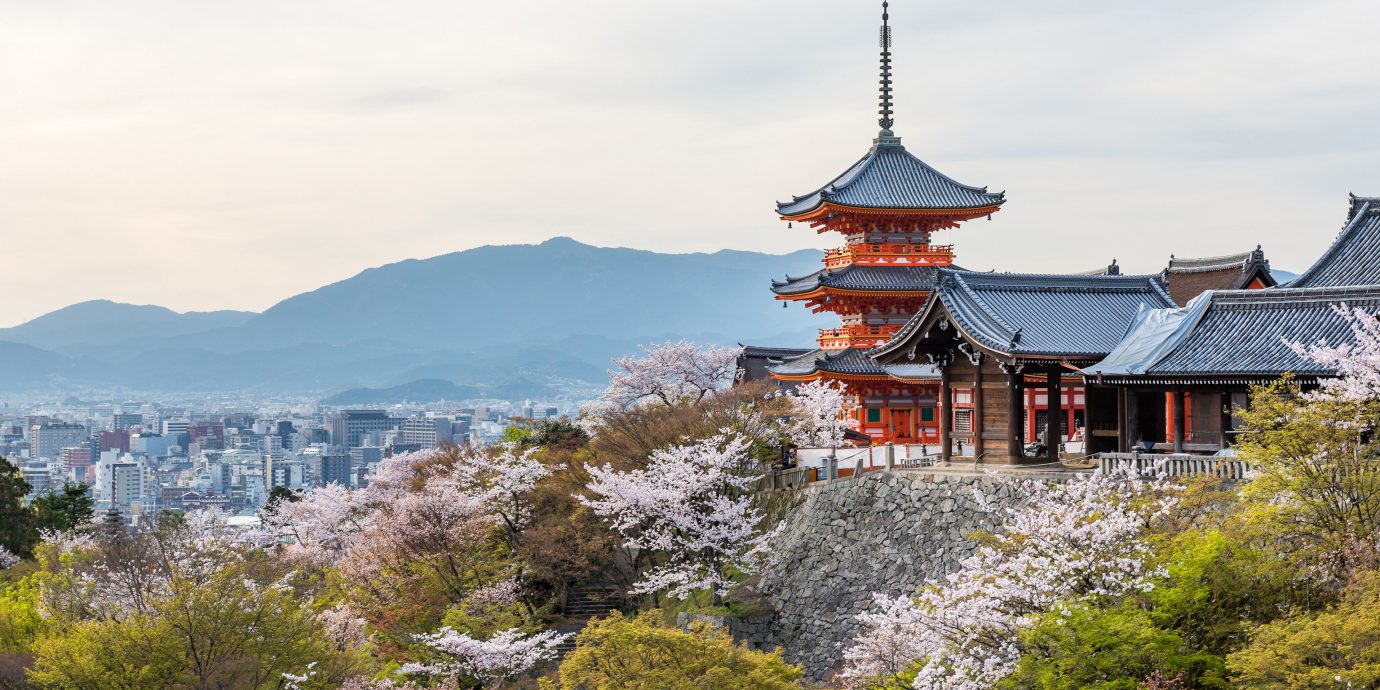
- 1 INTJ: Petra, Jordan
- 2 INTP: Banff National Park, Canada
- 3 ENTJ: Mt. Everest, Nepal
- 4 ENTP: Berlin, Germany
- 5 INFJ: Iceland
- 6 INFP: Zürich, Switzerland
- 7 ENFJ: Portland, OR
- 8 ENFP: New Orleans, LA
- 9 ISTJ: Washington, D.C.
- 10 ISFJ: Budapest, Hungary
- 11 ESTJ: London, England
- 12 ESFJ: Los Angeles, CA
- 13 ISTP: Oaxaca, Mexico
- 14 ISFP: Kyoto, Japan
- 15 ESTP: Dubai
- 16 ESFP: Austin, TX
The Best Vacation For You, Based on Four-Letter Personality Type
Not sure where to cash in that PTO next? Just leave it to 16Personalities . Whether you're a sensitive introvert or an extrovert who loves to plan ahead, we've got getaway ideas for every personality type.
Style + Travel Editor | Instagram @jackiehoman | jackiehoman.com
See recent posts by Jackie Homan
If you ever took Psychology 101 in college, you’re probably familiar with four-letter personality tests, many of which are still used today (everywhere from workplace seminars to BuzzFeed quizzes) to determine how a person perceives and reacts to the world around them . Though the reliability of the model has been hotly debated, finding a personality type to identify with can be insightful and entertaining—even if the science isn’t foolproof.
Each of the four letters that make up the 16 different personality types represents a different aspect of a person’s personality: Introverted (I) or Extraverted (E), Observant (S) or Intuitive (N), Thinking (T) or Feeling (F), and Judging (J) or Prospecting (P).
Curious? Take the free assessment to find out what you are, then scroll down to see our interpretation of where you should travel according to your four letters.
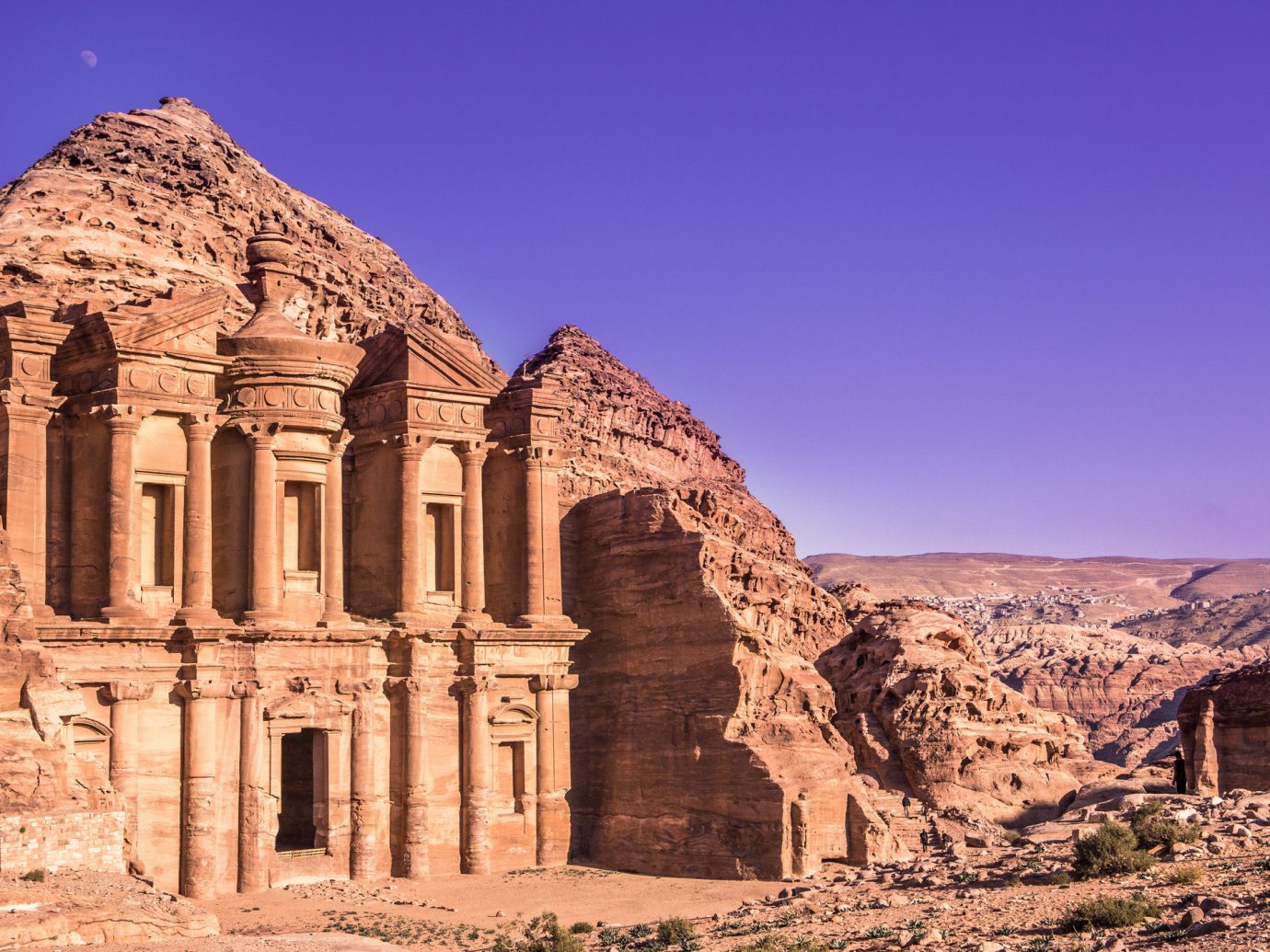
INTJ: Petra, Jordan
INTJs have a thirst for knowledge and are proud of it, according to 16Personalities. Folks with this personality type will enjoy a solo trip to a history-filled destination, so long as they skip the guided excursions and tourist traps and find their own path instead. The ideal location for this type of travel? Petra, Jordan, a UNESCO World Heritage Site full of sandstone structures and famed ancient sites, as well as lots of less-visited spots any explorer will love discovering. Shobak Castle , situated in a wild, remote landscape, gets our vote for the best hidden gem.
RELATED: 4 Easy Ways to Be a More Sustainable Traveler in 2019
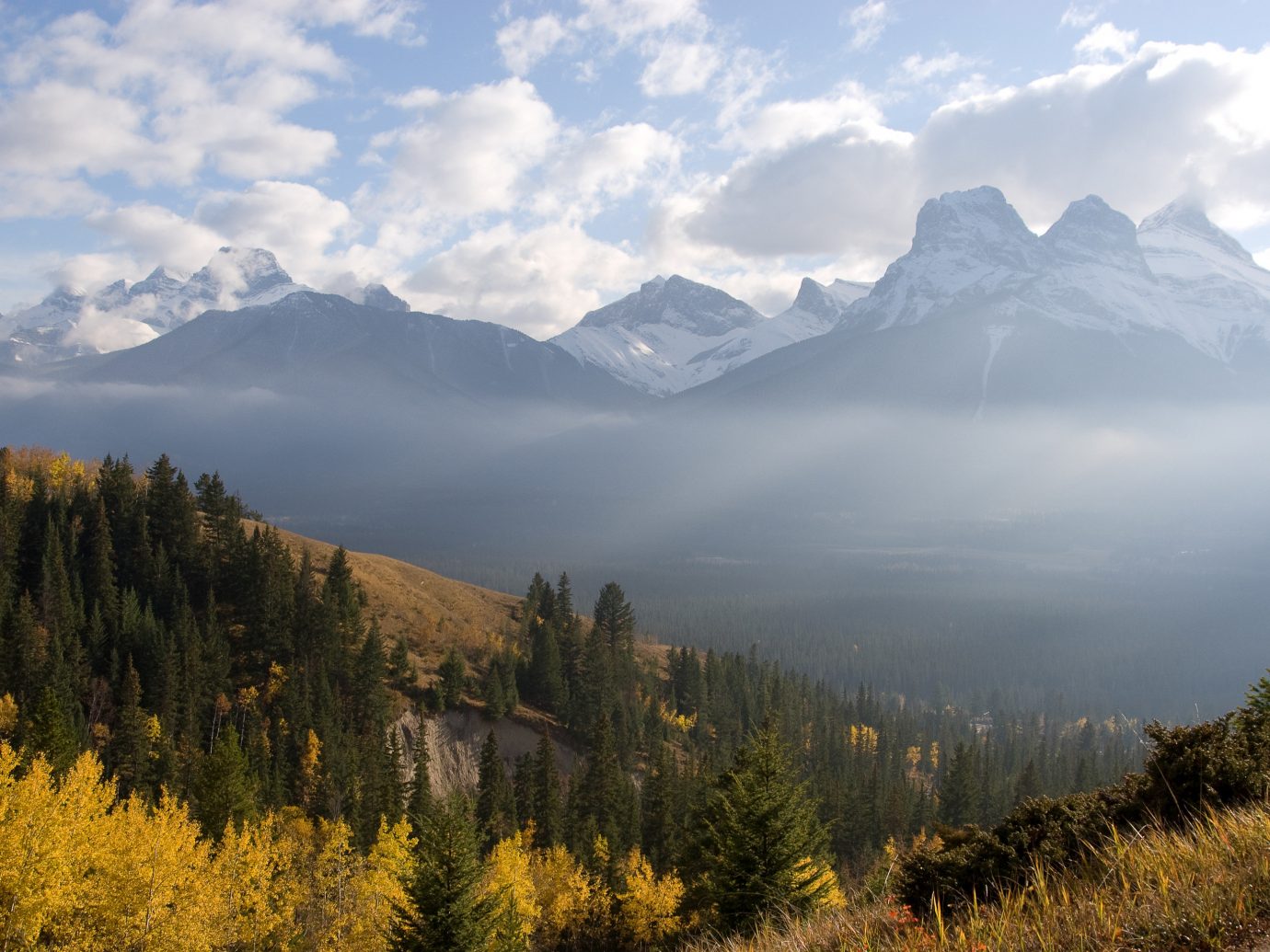
INTP: Banff National Park, Canada
Sensitive INTPs are creative, drawn to nature, and value inspiration. These daydreamy types should consider a trip to a natural wonder like Moraine Lake in Canada’s Banff National Park . With a backdrop of pine forests and towering mountains, the picturesque spot is unbelievably beautiful but much less crowded than parks in the U.S. like the Grand Canyon or the Great Smoky Mountains.
RELATED: 22 U.S. National Parks to See Now
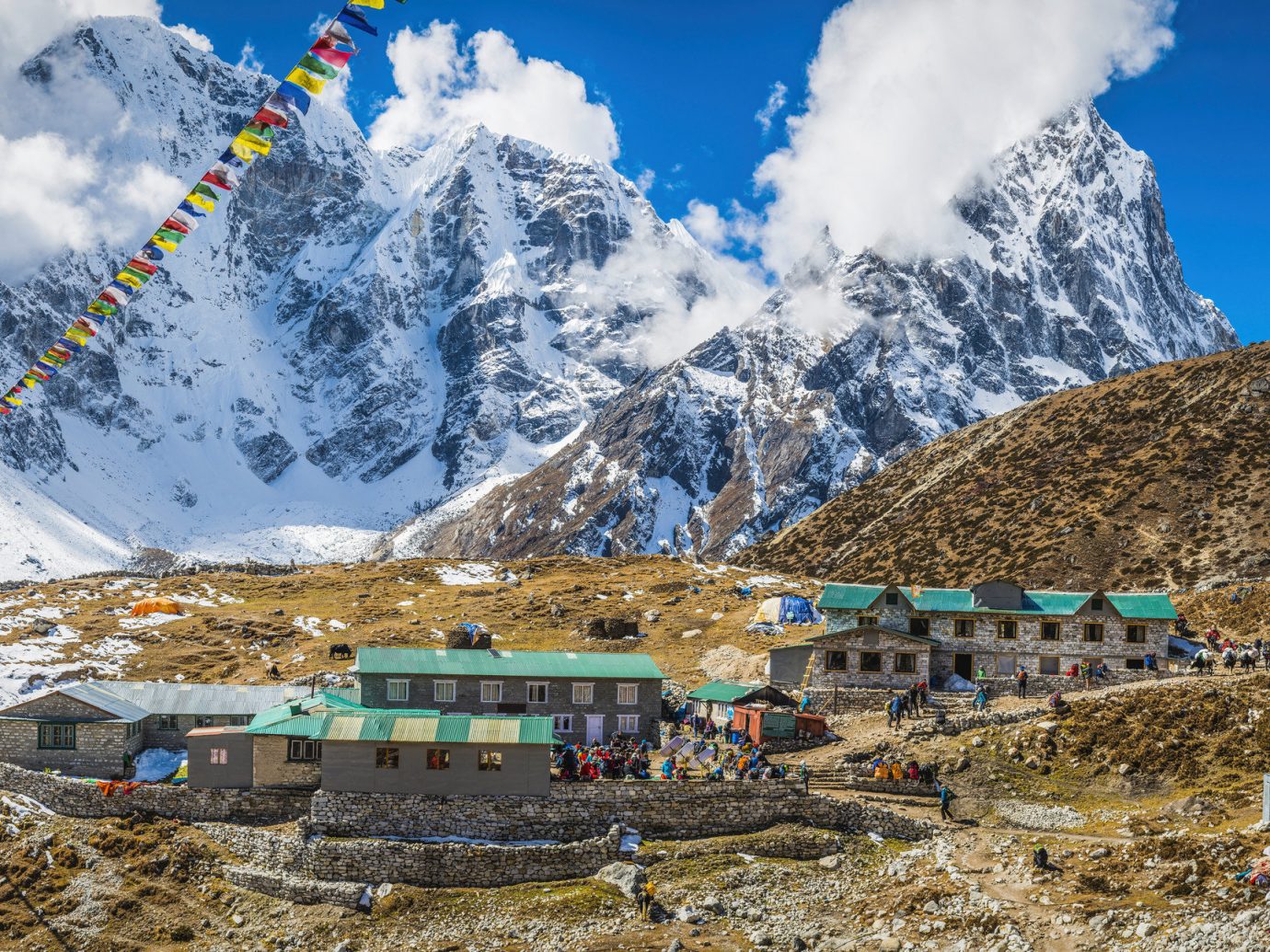
ENTJ: Mt. Everest, Nepal
“If there’s anything ENTJs love, it’s a good challenge, big or small,” writes 16Personalities. For ENTJs keen to take on a test of the physical sort, a trip to Nepal—home to Mt. Everest—is the perfect getaway. For a trek up to Everest Base Camp, we recommend booking a guided trek with a tour operator like World Expeditions , which organizes everything and puts extroverts in the company of like-minded hikers.
RELATED: 9 Transformative Trips for Inspiration and Restoration
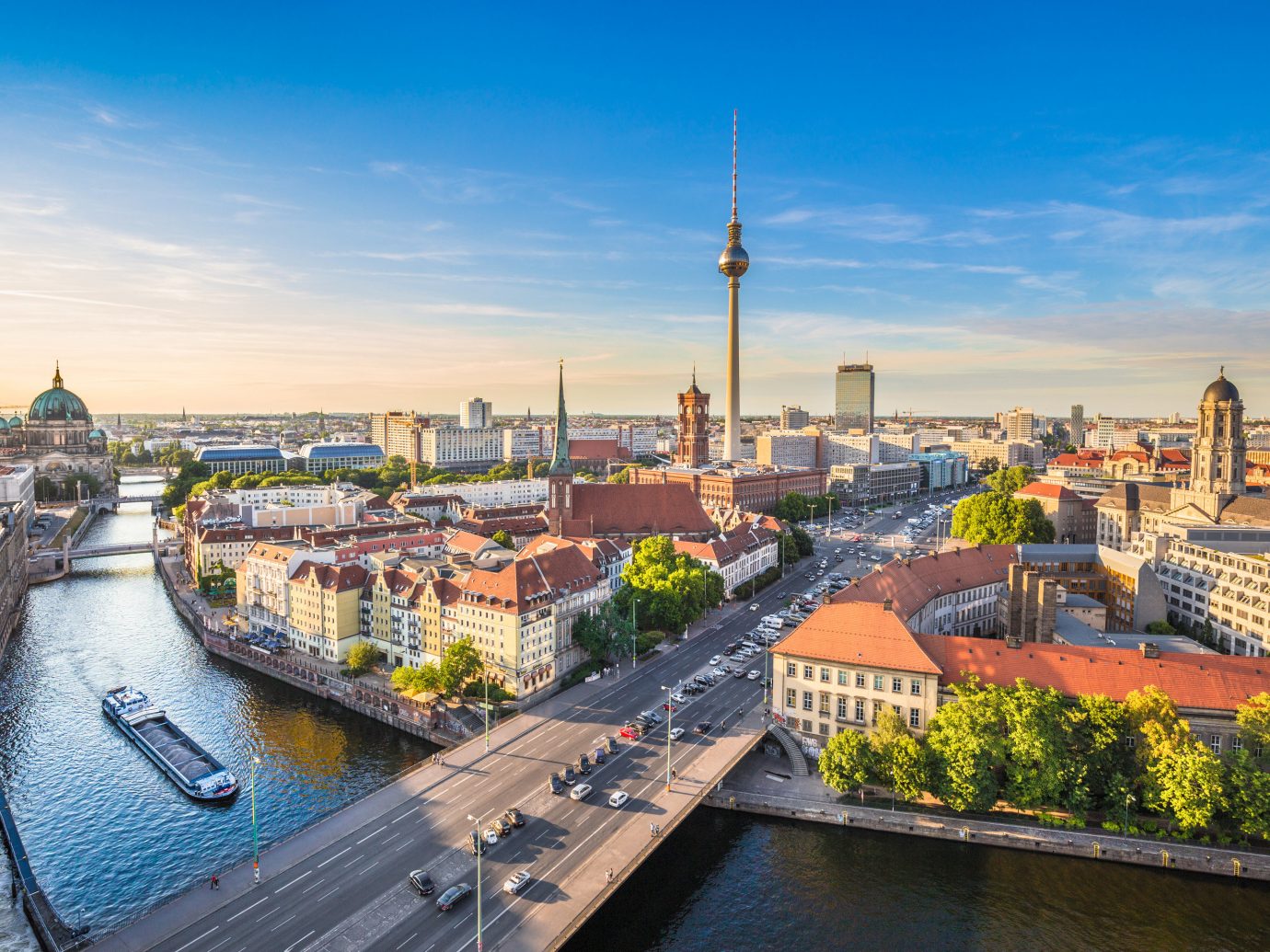
ENTP: Berlin, Germany
ENTPs value intellectual competency and curiosity; they’re smart thinkers who enjoy challenges and aren’t afraid to be blunt. This personality type is best served in a bustling city environment that hosts a variety of experiences and learning opportunities. Enter Berlin, a hub for history buffs and intellectuals, creatives and extroverts. Here, ENTPs can check out specialty museums and architectural sites, visit food markets and cool restaurants, and otherwise explore in the scene-y city where curiosity rules.
RELATED: What to Do and Where to Play in Berlin Now
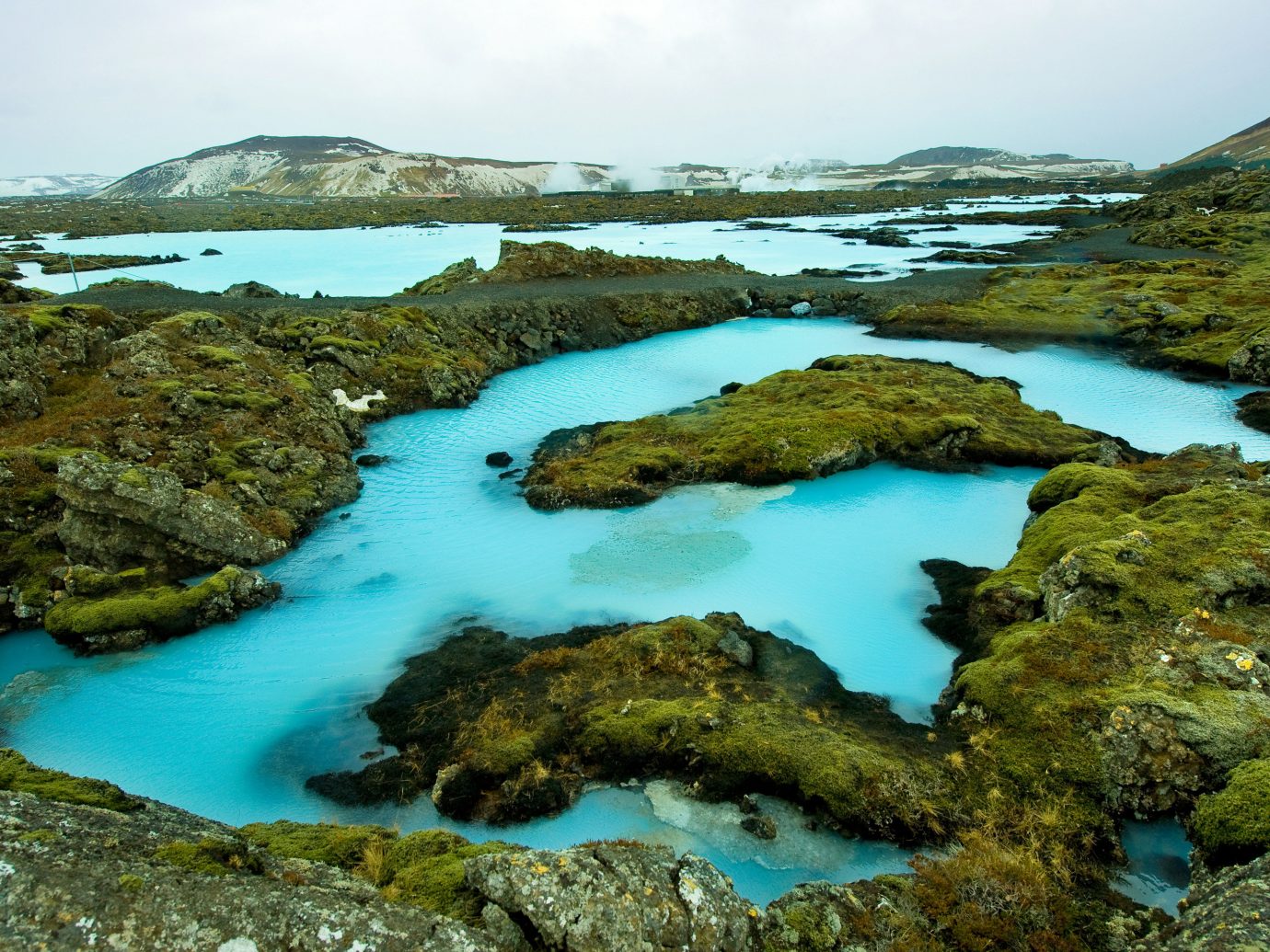
INFJ: Iceland
Idealistic INFJs often need to remember to take care of themselves. According to 16Personalities, “the passion of their convictions is perfectly capable of carrying them past their breaking point.” A vacation to Iceland would make for a relaxing retreat for INFJs, who can enjoy the country's dreamy landscapes and natural beauty and revel in the spa-like thermal springs of the Blue Lagoon .
RELATED: 13 Tours of Iceland That Will Get You Off the Tourist Trail
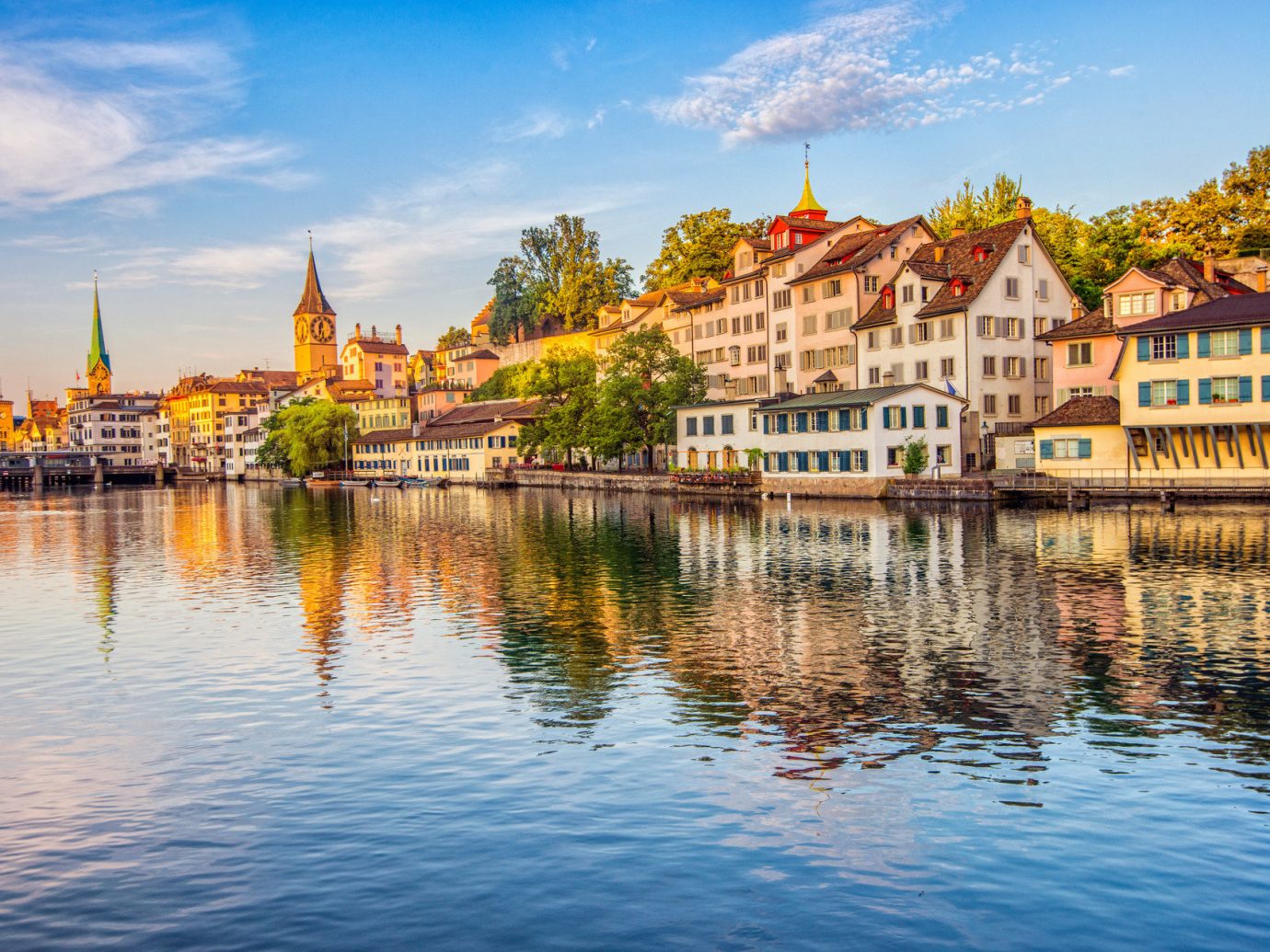
INFP: Zürich, Switzerland
INFP personality types are extremely creative and keen to understand their place in the world, often excelling at language and communication. Always striving for harmony, INFPs will feel most comfortable in a country known for introversion, like Switzerland. In particular, the charming Swiss city of Zürich is full of creative energy that will inspire INFPs—especially those who are drawn to art, since Zürich is acclaimed for its museums and galleries. We recommend Kunsthaus Zurich and Rietberg Museum to start.
RELATED: 9 European Cities You Probably Haven’t Visited Yet, But Should
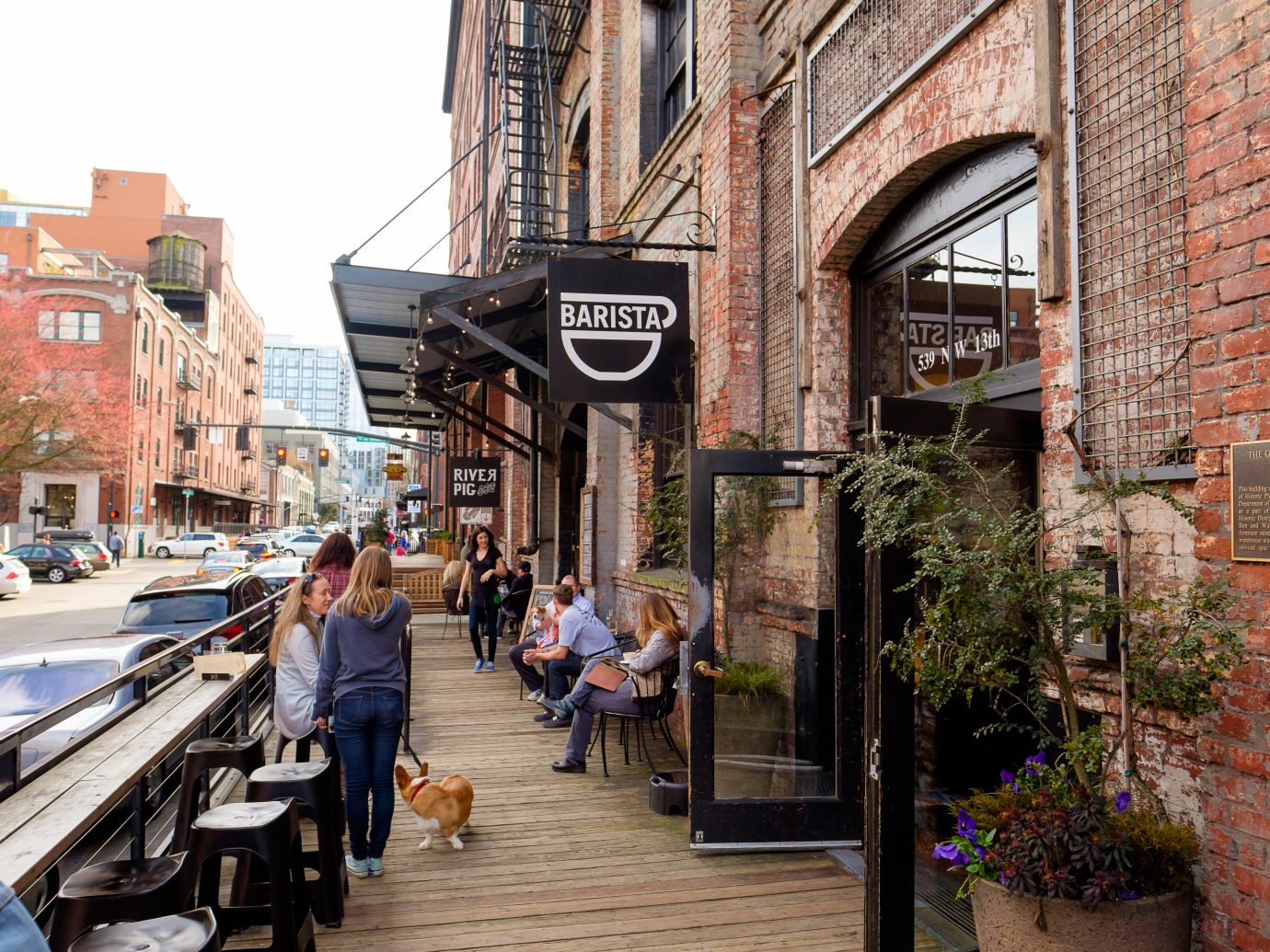
ENFJ: Portland, OR
According to 16Personalities, ENFJs are “intelligent, warm, idealistic, charismatic, creative, and social.” The best place to let all those qualities out? Portland, Oregon, a city known for its wackiness and creative locals. ENFJs will love taking in the overwhelming-but-amazing Powell's City of Books before heading out to The Elvis Room , a spunky bar and restaurant with cool décor and a sense of humor.
RELATED: 10 Cool Things to do in Portland, Oregon
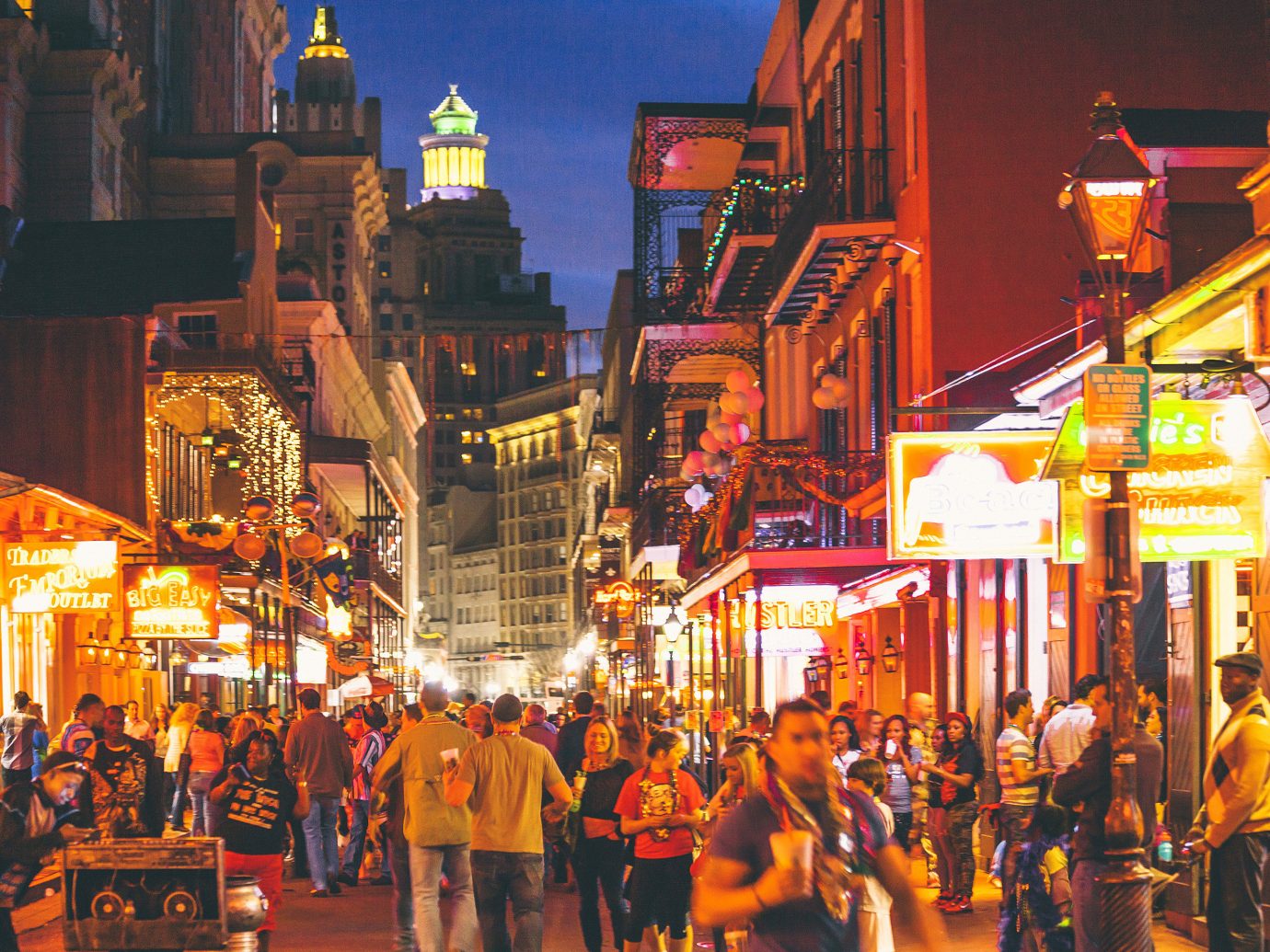
ENFP: New Orleans, LA
Often called a free spirit and the life of the party, an ENFP personality knows how to have fun. New Orleans, with its buzzy bars and jazzy beats, is one and the same. While in this wild city, ENFPs should flock to hotspots like Latitude 29 and Hot Tin for cocktails and party-hardy vibes.
RELATED: Girls’ Weekend Guide to New Orleans
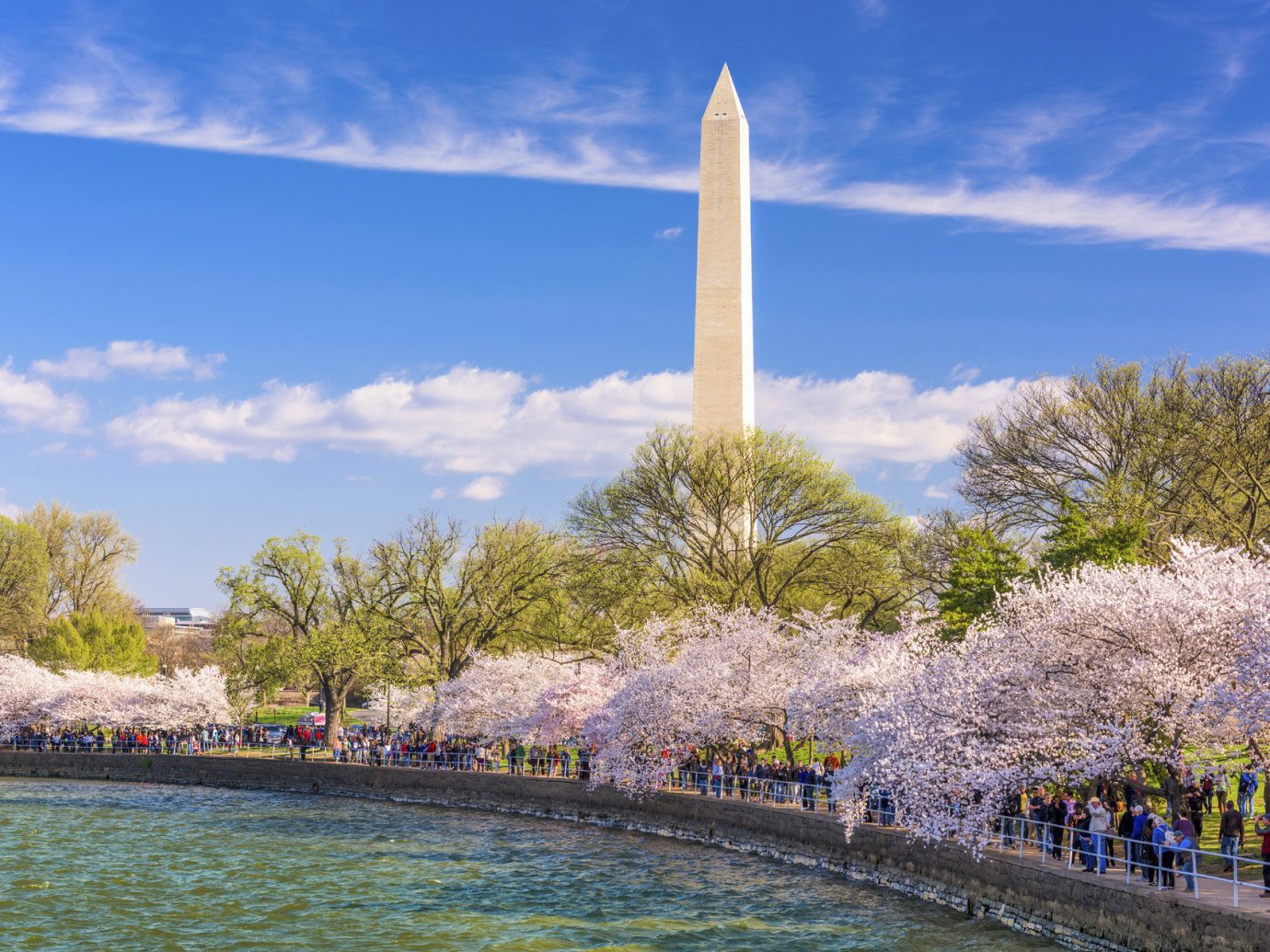
ISTJ: Washington, D.C.
“ISTJs have sharp, fact-based minds, and prefer autonomy and self-sufficiency to reliance on someone or something,” writes 16Personalities. These independent folks will enjoy a solo trip where they can learn a lot and feel comfortable doing it, and Washington, D.C. fills those requirements to a T. While there, ISTJs can spend hours browsing the myriad museums including classics like the National Archives , which is home to the Declaration of Independence and the Constitution, and modern marvels like the Newseum , which tells the story of news and the free press.
RELATED: The Best Restaurants in D.C.
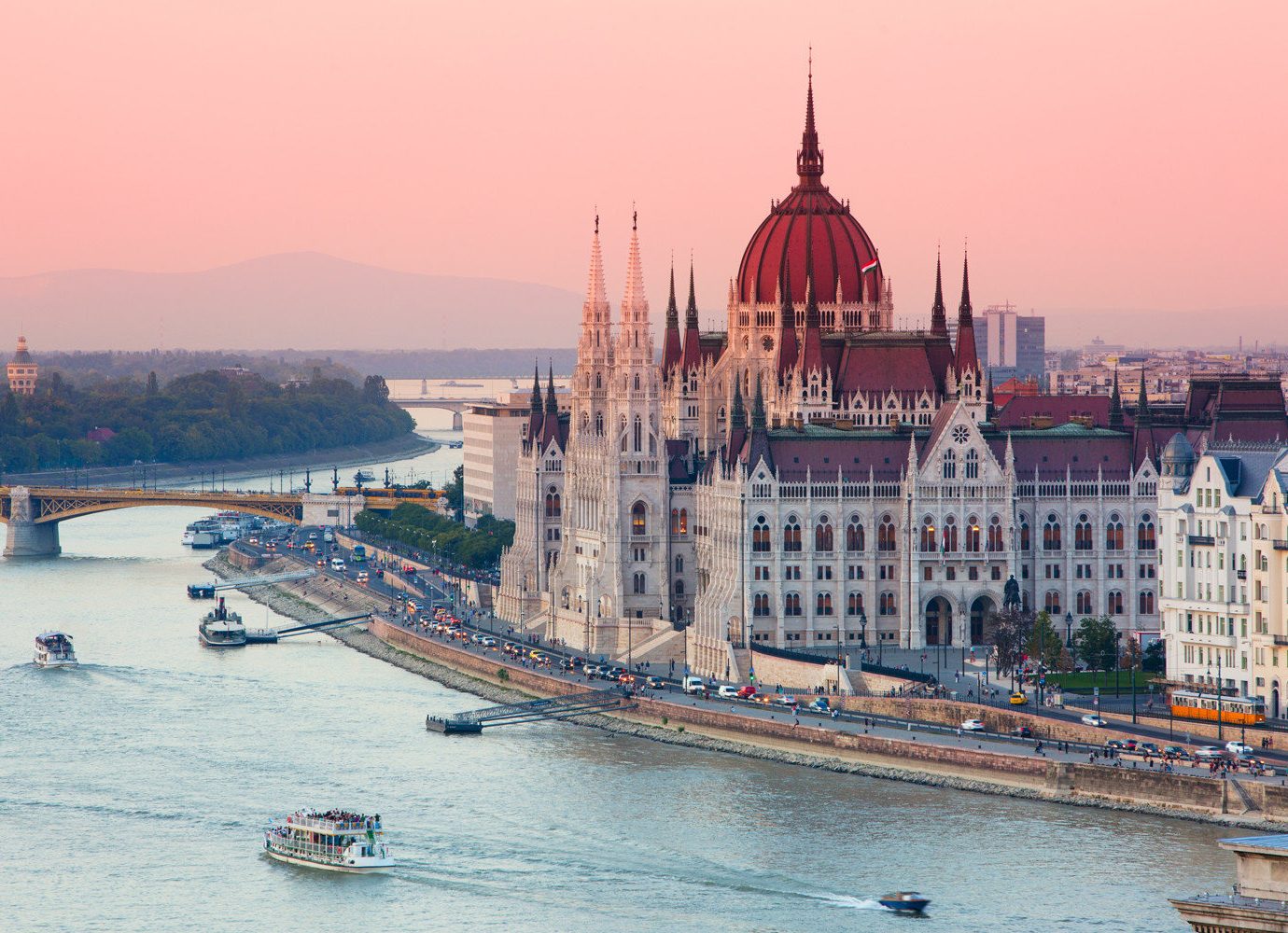
ISFJ: Budapest, Hungary
Making up a large portion of the population (nearly 13 percent), ISFJs have a unique blend of traits that, together, create highly-balanced personalities. “Though possessing the Feeling trait, ISFJs have excellent analytical abilities; though Introverted, they have well-developed people skills and robust social relationships; and though they are a Judging type, ISFJs are often receptive to change and new ideas,” 16Personalities explains. This special combination of qualities is perfect for Budapest, a unique, balanced city that offers both historic sites and new hotspots, as well as areas where these two sensibilities merge (like in the city’s many ruin bars, where old abandoned spaces have been reclaimed and made modern by artists).
RELATED: The Best Hotels in Budapest We’d Love to Check Into
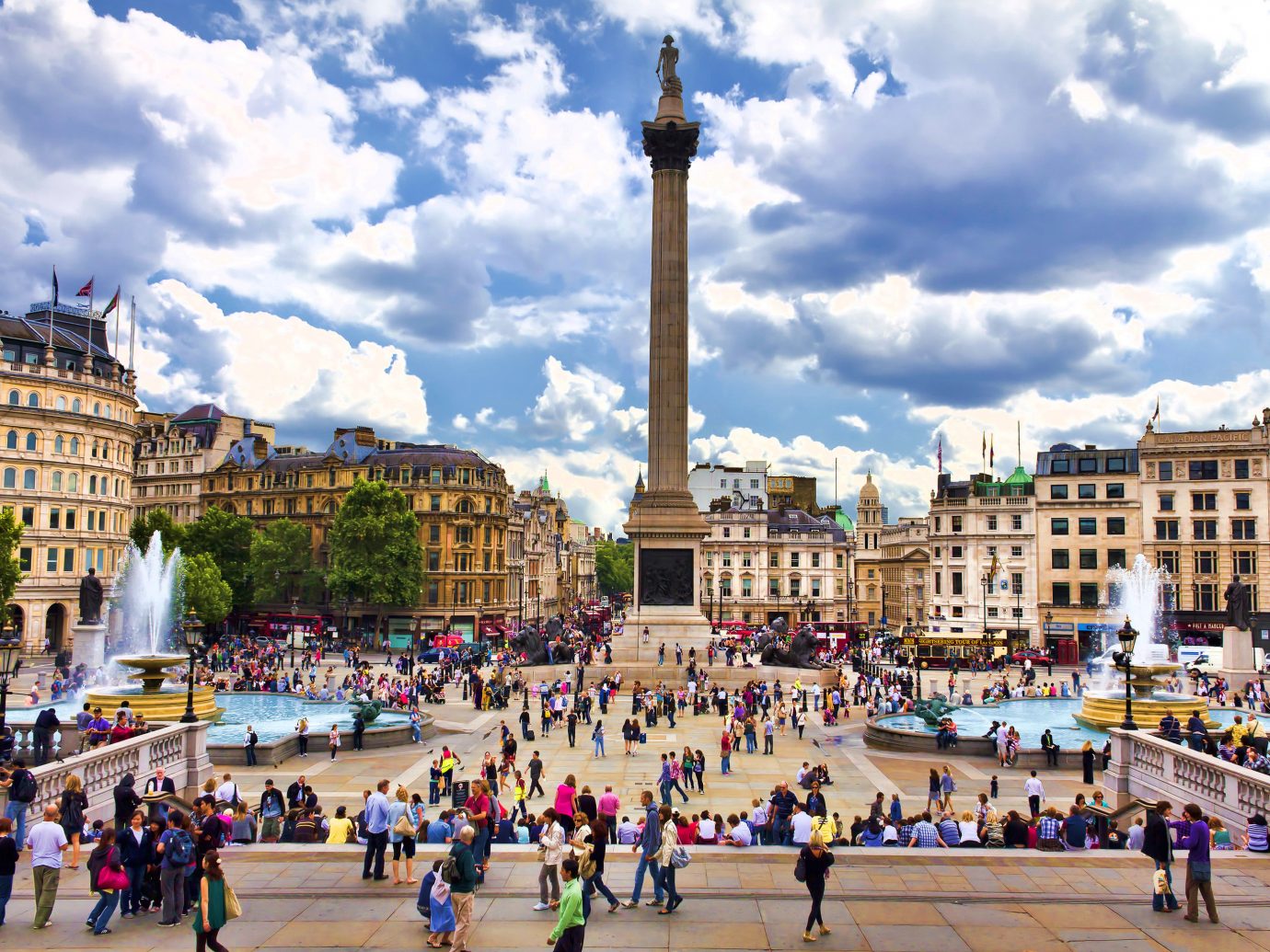
ESTJ: London, England
ESTJs love bringing people together and creating order, and they’re known for being outgoing and enthusiastic around friends. This personality type would be excellent at organizing a friends group getaway to London, where there are enough activities to keep them planning all day long. We’ll leave all the itinerary-building up to them; that’s their specialty, after all.
RELATED: Our Favorite London Attractions for a Long Weekend
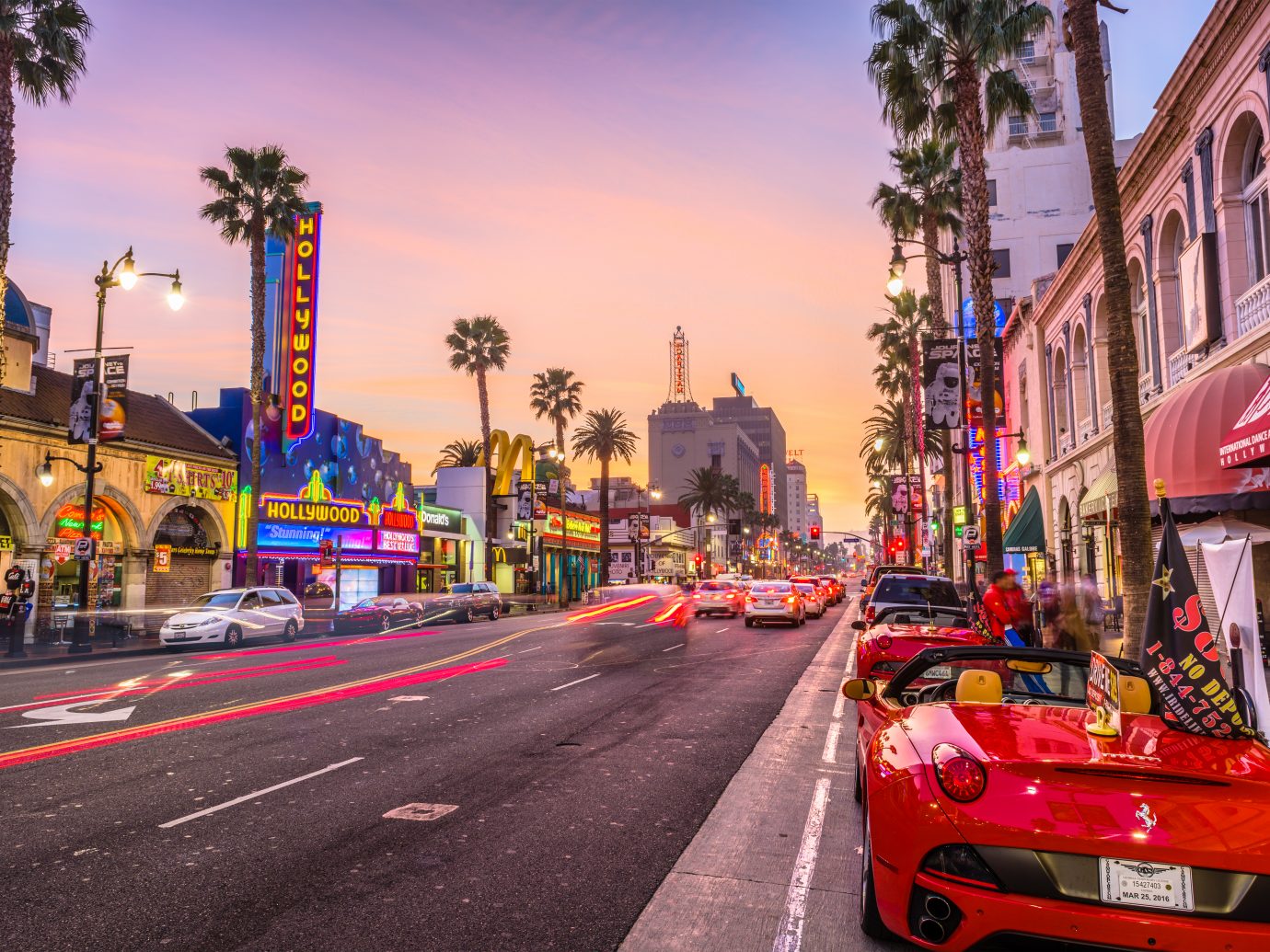
ESFJ: Los Angeles, CA
ESFJs are known for their popularity, service to others, and great fashion sense, and they often take pride in their social status. In Los Angeles, these types will enjoy seeking out the hottest places in town and making like-minded friends. A few recommended social scenes: the hyped-up party spot The Highlight Room at DREAM Hollywood and super-hip tiki bar Lono for coconut-infused sips.
RELATED: 11 Hottest Things to Do in LA Right Now
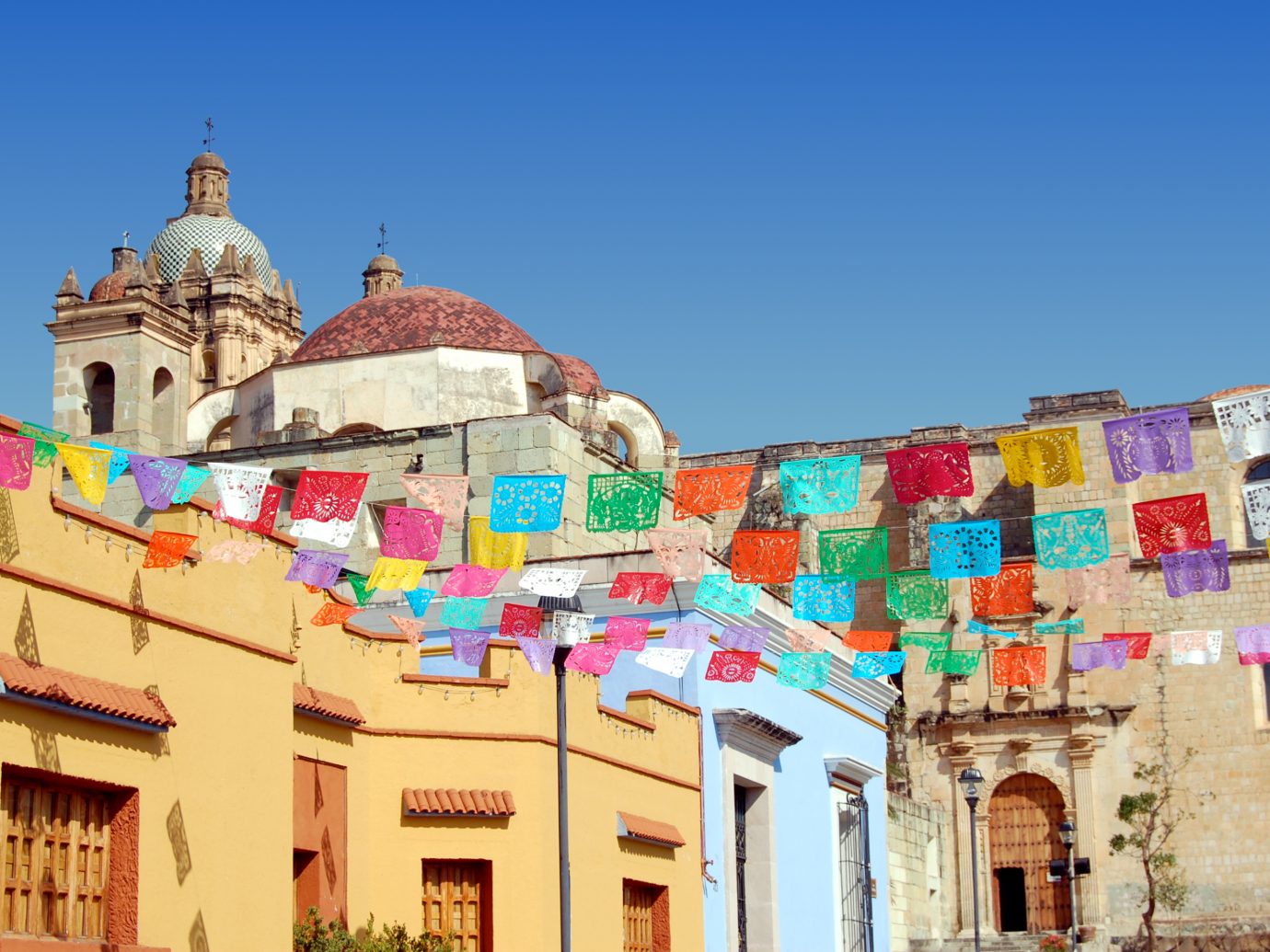
ISTP: Oaxaca, Mexico
According to 16Personalities, “ISTPs love to explore with their hands and their eyes, touching and examining the world around them with cool rationalism and spirited curiosity. People with this personality type are natural makers...learning from their environment as they go.” These makers will find their calling in artisan-filled Oaxaca, where they can craft clay ceramics and pottery with Thread Caravan and Innovando la Tradición , cook traditional dishes with El Sabor Zapoteco , or learn textile weaving at Isaac Vasquez Studio .
RELATED: 5 Creative Things to Do in Oaxaca
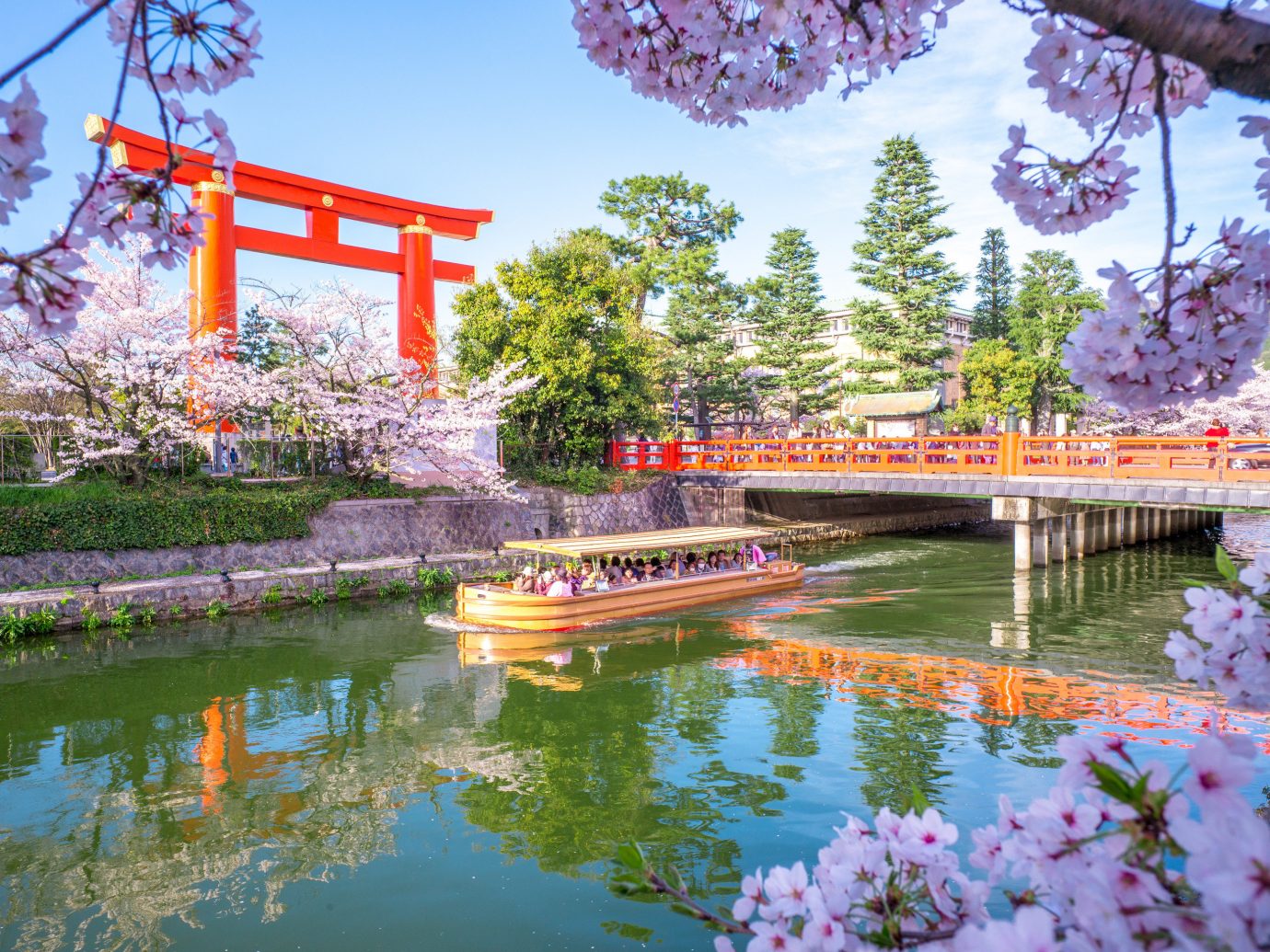
ISFP: Kyoto, Japan
“ISFPs live in a colorful, sensual world, inspired by connections with people and ideas,” writes 16Personalities. This often-spontaneous personality type revels in reinventing, experimenting, and seeking out new perspectives. While a trip around the world to Japan might seem overwhelming for some introverted types, ISFPs will uniquely appreciate this change of pace, especially in a calmer city like Kyoto. From picnicking in Maruyama Park to exploring ancient temples , there’s enough to do to inspire ISFPs for days.
RELATED: 7 Tours of Japan You Need to Take
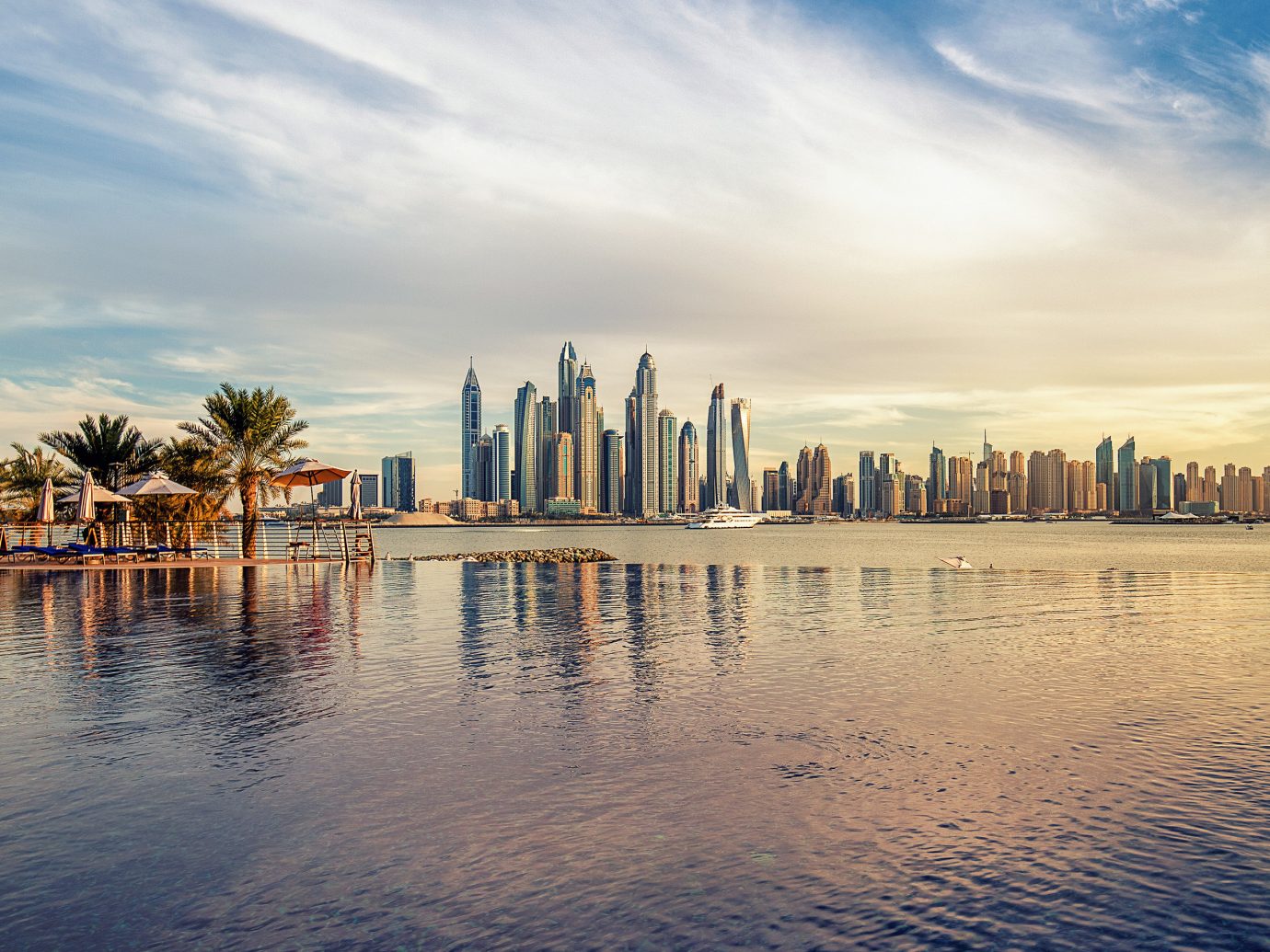
ESTP: Dubai
ESTPs live in the moment and enjoy drama and passion—just like over-the-top Dubai. The ever-changing city is full of luxury and exciting things to do, from camel rides in the desert to shopping in the artsy design district. Dubai’s top-notch restaurants , spas , and stays ( seven-star hotel , anyone?) are sure to delight an energetic ESTP.
RELATED: The Coolest Things to Do in Dubai Now
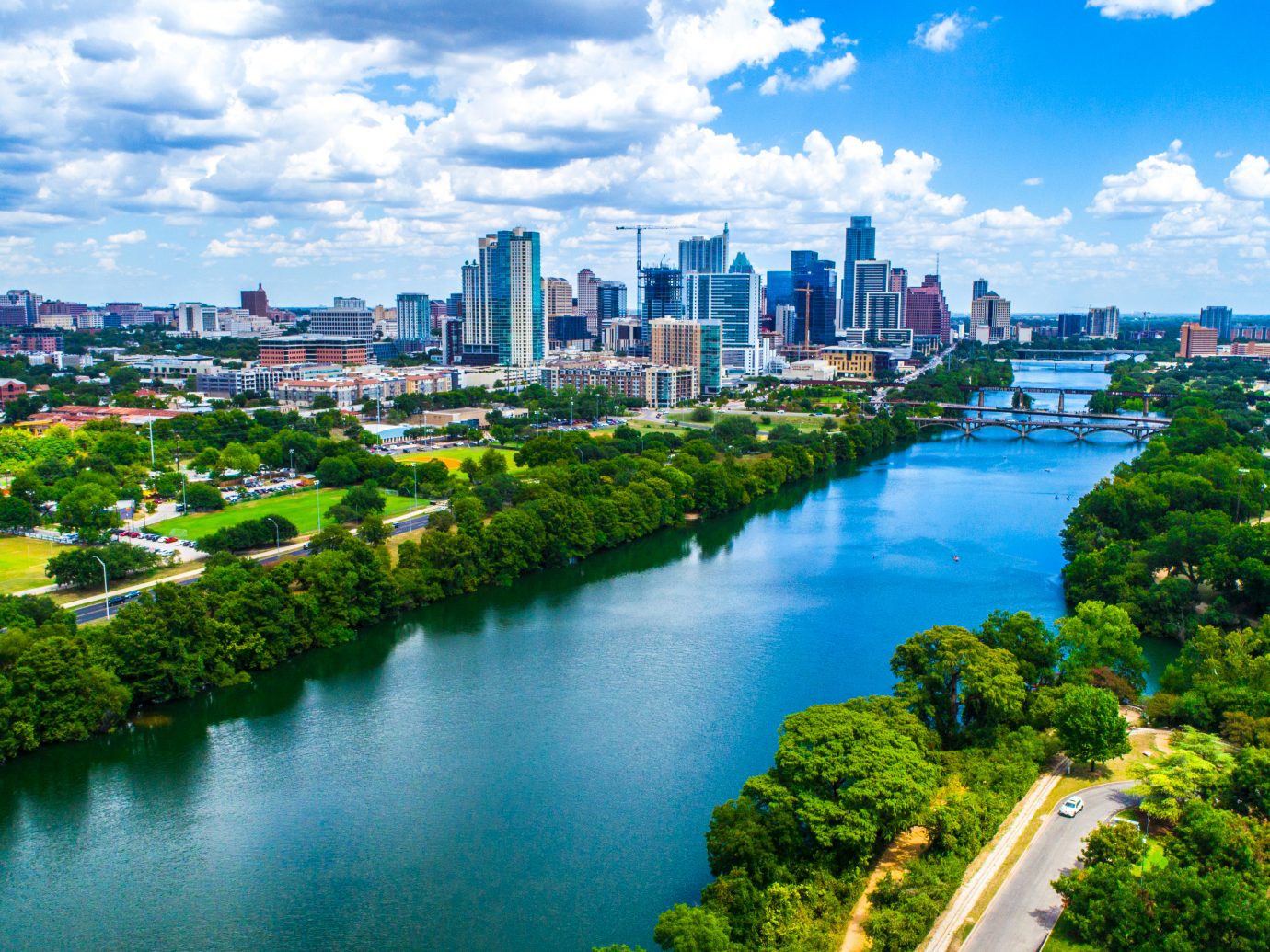
ESFP: Austin, TX
Center-of-attention ESFPs love the spotlight and make every outing feel like a party. “There’s no greater joy for them than just having fun with a good group of friends,” writes 16Personalities. ESFPs are also known for their strong aesthetics and eye for fashion. In Austin, Texas, ESFPs can revel in dynamic party vibes, trendy fashion spots, and cool music and art scenes. It’s also the perfect place for a girls’ getaway, complete with bar-hopping on Rainey Street , vintage shopping, and galleries. To be in the center of it all (as ESFPs usually prefer), we recommend a stay in the new Fairmont Austin .
RELATED: How to Plan a Girls’ Weekend Getaway to Austin, Texas

- 10 Best Trips to Take If You’re An Introvert
- These 9 Eco-Friendly Hotels Help Reduce Your Impact on the Environment
- 20 of the Most Beautiful Places in America
All products are independently selected by our writers and editors. If you buy something through our links, Jetsetter may earn an affiliate commission.
Become a Jetsetter.
Use our insider connections to know where to go and what to do.
Thanks for Signing Up!
Related Tags
Explore more.
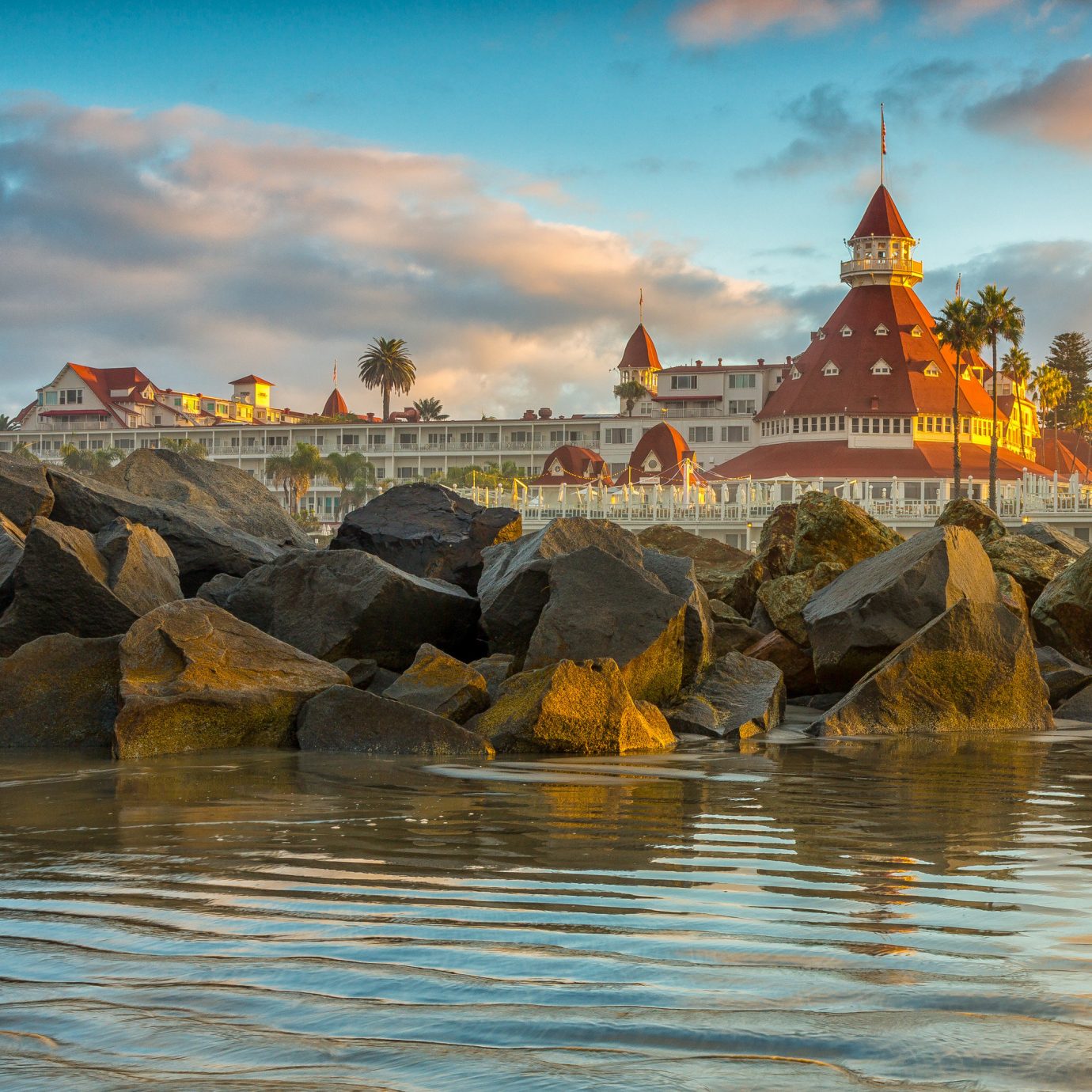
14 Haunted Hotels That Will Make Your Skin Crawl
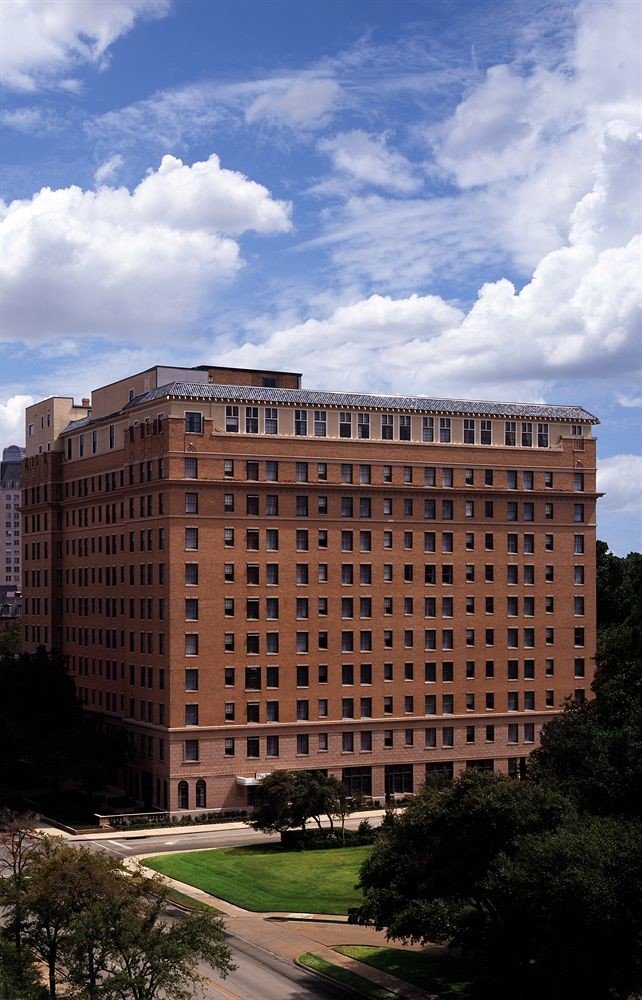
Le Méridien Dallas, The Stoneleigh
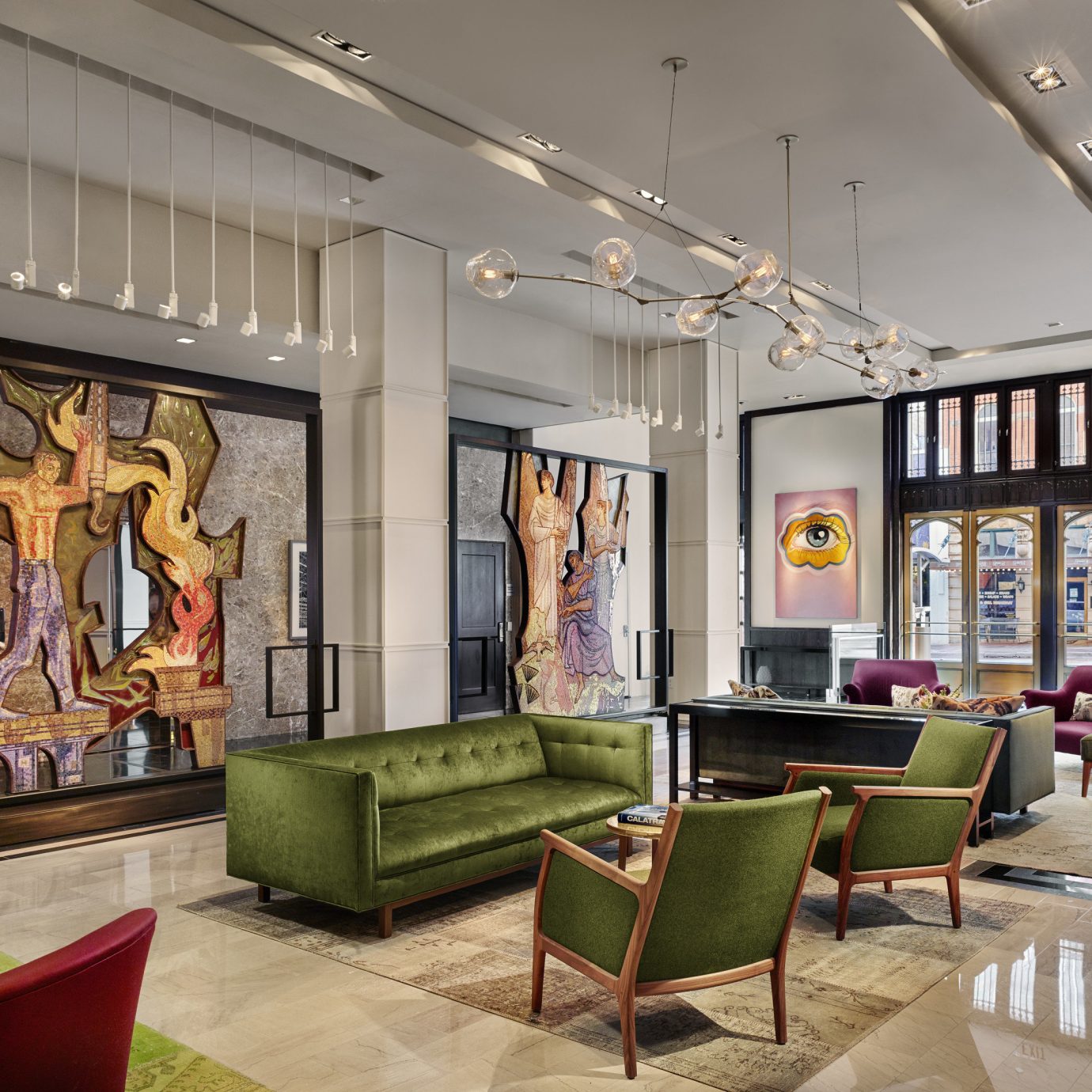
JS Travel Guide to the Big D
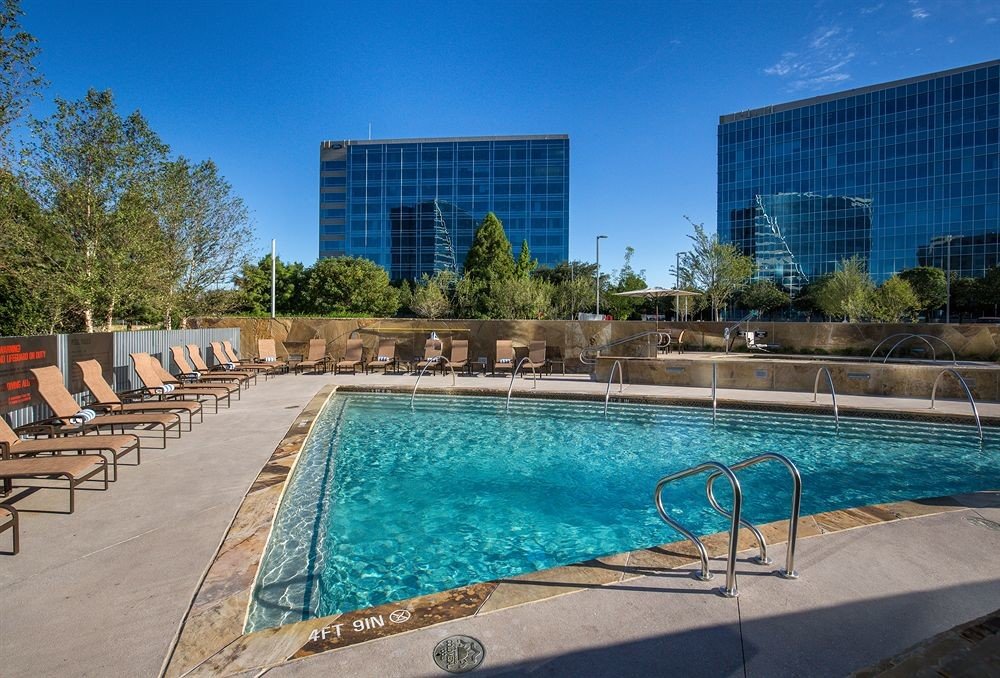
Hilton Dallas/Plano Granite Park

- Create new account
What’s Your Road Trip personality?
Discover your true travel personality with our free test, 959,793 tests taken in the last 30 days.
Are you more of a Zen Traveler or a Culture Hound? A Trip Maximizer or a Creature of Comfort? We teamed up with HearHere, the road trip storytelling app, to create this test based on the Big Five personality system – to help you find your ultimate road trip.
To take the travel personality quiz, rate each statement according to how well it describes you. Base your ratings on how you really are, not how you would like to be.

Get Our Newsletter
- Destinations

5 Types Of Travel Personalities: What Kind Of Traveler Are You?
Isn’t it interesting that different travelers have different things to tell about the same destination? There is no one-size-fits-all approach to traveling as it is a subjective experience, and so every traveler’s idea of a perfect vacation varies. Your travel personality, i.e., how you identify yourself as a traveler, defines your vacation needs and decides your travel destination.
Table of Contents
While some travelers are on a soul-searching mission, there are some others who travel to experience different cultures and a few others for whom adventure is the travel motive. We have listed here the 5 most common travel personality types.
Soul Searcher:
People with this travel personality travel not to discover the world but themselves. Traveling for them is a transformative experience, a journey of self-discovery, a means of finding themselves and the purpose of this life. They seek solace and inner peace, look at life through the lens of spirituality, and look for new experiences that teach them new lessons.
Soul searches often travel solo to secluded and serene places so as to allow themselves freedom and time for self-reflection. They travel at a slow pace, usually spending more time at their destination than typical travelers.
City Slicker:
On one side, there are city dwellers who can’t wait to escape the hustle and bustle of the cities, and on the other side, there are city slickers who prefer traveling to places like New York , Paris, London, Bangkok, Dubai, Singapore, Italy, Delhi , etc., so they don’t have to forgo the comforts of a modern metropolis.
This type of travel personality loves the idea of ‘life in big cities’. They adore everything about glamorous cities – its skyscrapers, bright lights, buzzing streets, trendy restaurants, shopping culture, vibrant nightlife, and a grand variety of entertainment and myriad recreational facilities these ‘big’ cities offer.
Culture vulture:
The prime motive of traveling for the culture vultures is immersing themselves in the cultural experience of a place. They don’t limit their trip to visiting the popular tourist attractions; instead, they intend to experience a place like a local. Their idea is to discover the real heart of a country by discovering its inhabitants.
The historical and cultural heritage of a place, its traditions, languages, festivals, art and architecture interest this type of travel personality. They like to interact with the locals (often seek their guidance as to what to see and do), taste local dishes, shop in the local markets, and go about like a local.
India, a country with rich cultural diversity, is a great destination for such travelers. If you haven’t ticked India off your bucket list, then grab this opportunity to do it now. Avail our exclusive deals on flights to India and visit this incredible country.
Adventure seeker:
Adventure seekers live by the quote, ‘Life is either a daring adventure or nothing at all.’ They crave different experiences; adrenaline-pumping adventures excite them the most! They want to hike the tallest mountains, dive in deep seas, skydive from a high altitude, jump off a cliff, cross the wild rapids on a raft, and the risk factor involved in these adventure sports is what they readily accept as a challenge. According to these daredevils, the higher the risk involved, the greater the thrill! These adventure junkies enjoy conquering challenges and the sense of achievement they get from doing so.
Typical traveler:
By typical travelers, we mean travelers who like their trips to be organized and well-planned. A travel itinerary makes them feel confident that their trip goes smoothly. In fact, they plan their trip to a T in advance and then go ahead to book international flight tickets . They swear by the tour guides and city maps and visit all the tourist places their destination is known for and indulge in typical touristy activities to make the most of their vacation. Travelers visiting a place for the first time typically fall under this type of travel personality.
RELATED ARTICLES MORE FROM AUTHOR
How to Get Cheap Business Class Flights
A Comprehensive Guide for Navigating the Kolkata Airport Integrated Terminal With Ease
Know About What Are the Do’s and Don’ts for International Travel

When is the Best Time to Book Cheap Flights to New York?
How Can Setting Up Flight Price Alerts Make Your Next Trip Affordable?
How Much Gold Can I Carry from USA to India: Guidelines and Restrictions
Leave a reply cancel reply.
Save my name, email, and website in this browser for the next time I comment.
EVEN MORE NEWS
Cathay Pacific Offers a Sneak Peek of its Boeing 777 Premium...
Everything You Need to Know about Southwest Airlines Frequent Flyer Program
Popular category.
- United States 283
- Airlines 126
- Destinations 110

- Travel Updates
The 28 Different Types Of Travellers You May Meet

Travel means something different to every traveller. For some it’s a way to spend time with friends and family, for others, it’s a way to get a taste of adventure or to explore new cultures. Each of us has our type of travel personality when we set out on a trip. While some of us enjoy being the quintessential tourist, the rest of us want to explore offbeat destinations and experiences. A lot of our likes and dislikes inform the type of traveller we eventually become. What’s really important about identifying your travel personality is that it helps you find compatible travel partners who share similar interests. There are lots of different types of travellers, but most fall into some kind of category. Here, we’ve identified 28 types of travellers – which one(s) are you?
Here Are The Different Types Of Travellers
1. the culture vulture.
The world is full of amazing cultures, and these travellers want to explore it all. Museums, art galleries and historical sites are just the tip of the iceberg. They want to understand and absorb the culture. They might do quite a bit of research beforehand, to make sure to hit up the spots that are most relevant to their interests. Culture vultures are all about immersing themselves into the history of a destination to truly understand its hidden marvels.

2. The Foodie
These types of travellers set out around the world in search of delicious food. They explore different cultures through their cuisines, and regardless of the destination, are sure to never disappoint with their choice of food or eateries.
3. The Nature Lover
These types of travellers are so fascinated by nature, they spend most of their vacations in jungles and forests observing flora and fauna. A section of them even spend lots of time on safaris, in all kinds of environments.
4. The Photographer
For them, travel is synonymous with pictures. You’ll find these types of travellers behind the lens of a camera, capturing every moment of their trip. Panoramic scenes, animals, locals, food, and themselves; nothing goes unphotographed.
5. The Social Butterfly
These people are connected to the Photographers, but whatever they do, they do it for social media. Their pictures can often be seen on their Facebook or Instagram (along with tons of hashtags). Some may even be bloggers or YouTubers.
6. The Party Animal
These are the travellers who travel just for fun and parties. Their plans revolve around the best party places and nightlife; look for them at bars or clubs. They can be tons of fun to be around (except maybe in the early hours of the morning).
7. The Planner
They are perhaps the most organised type of travellers. They like to plan out and schedule any trip to the T. Planners often have a limited amount of time and want to cram as many things in as possible to get the absolute most from the trip. They also tend to know more about a place before they travel than most people who’ve been there.
8. The Nomad
The polar opposite of the Planner, this one’s trips are sudden and totally unplanned. Whether they let other people guide them around, or just go somewhere on a whim, their vacations tend to be vague but very entertaining.
9. The Thrill Seeker
With unmatched energy, these adrenaline junkies and daredevils travel far and wide in search of their next adventure. From mountain climbing and cliff jumping to bungee jumping, they crave excitement and love to try new things. One thing’s for sure, you won’t find them relaxing at the beach or exploring the nearest museum in depth.
10. The Functional Traveller
To these travellers, travel is just a means to an end. Mostly consisting of business travellers, or those visiting an event, (whether it’s a wedding or a football match), they’re often too consumed with their task to get the most out of the destinations they’re at.
11. The Pilgrim
They follow pilgrimage trails or visit the shrines of those they worship – religious or otherwise. While you can find many at the sacred sites of gods and goddesses, you can also find them at sporting stadiums, or at places associated with favourite films and books.
12. The Shopper
They travel to different parts of the world for one thing, and one thing only – shopping. Shoppers may be either men or women, but for them, no trip is complete if their luggage isn’t much heavier on the way home. If they’re generous some of this might even be for friends and family.
13. The Backpacker
These types of travellers quite literally travel light. Independently exploring different places on a low budget. You may think it’s obvious that they carry their signature backpack, some may even use a duffel bag (gasp!). They’re often found at hostels and are up for any kind of adventure.
14. The Gap Years
While this group is often associated with backpacking, they are generally well-off young people (usually just having graduated school or college) who want to experience something entirely new, with the added bonus of being away from home for a long period. They may also be found volunteering or working abroad.
15. The Complainer
This one has a problem with just about everything during your vacation. While some may be legit – like a shower not working, or dirty bed sheets – most may not. A demanding type of traveller, they tend to want everything just so (and tend to favour places that closely resemble home).
16. The Gang
Typically found travelling in groups, these travellers like to travel with friends and family and are rarely found alone. Whether it’s sightseeing or partying, it is all done together either quietly or (more often) loudly.
17. The Weekender
These travellers go away on vacation at every single available opportunity, especially on weekends. They may visit places close to home, or even go on short trips further away. Often financially stable, they can afford such luxuries and enjoy seeing as much of the world as possible.
18. The Chatter Box
This one seems to befriend anyone and everyone they meet on their trip, from taxi drivers to waiters. They can’t resist chatting with all kinds of people, which often means that they also often have the best stories to tell.
19. The Luxury Traveller
Nothing less than a 5-star hotel is enough for this traveller. No matter where they go, luxury is a top priority. From personal cabs to classy restaurants, they like to do things in style (and of course, comfort).
20. The Escapee
A fugitive of all that is mundane and familiar, these travellers are often quite lost. Whether they’re running away from boredom or heartbreak, guilt, failure, conflict, or themselves, they’re sure to be looking for some sort of escape at a faraway destination.
21. The Solo Artist
A growing section, the solo traveller chooses to venture into the world alone, and on their own terms. Their trips may be planned to the last detail, or delightfully vague, but it doesn’t matter because they answer to no one but themselves.
22. The Soul Searcher
This one is quite different to the Escapee. They use travel as a means to find themselves or find some spiritual meaning in life. Often travelling alone, they want holidays that teach them something, whether that is meditation or cookery.
23. The Budget Tripper
While they may want to travel everywhere, these travellers are constrained by tighter budgets. With the aim of saving money on their trips, they may prefer walking to cabs and hostels to hotels.
24. The Collector
They never leave a new place without a memento. Whether these are physical objects like a souvenir, seashells, or even sand, or uncommon experiences, like meteor showers or balloon rides, these items are often proudly displayed later.
25. The Pioneer
They’re seekers of mostly unexplored or offbeat destinations, whether it’s living with native tribes or exploring an unusual museum, they want non-mainstream experiences that are truly unique.
26. The Rejuvenator
Looking to get away from the hustle-bustle of everyday life, these types of travellers want to relax. Whether they go to a luxury spa or a yoga retreat, they holiday to get away and unwind from their troubles and to have a much-needed pampering experience.
27. The Clueless One
In life, there are leaders and there are followers. This group is most definitely the latter. They rely on others to plan their vacation and to then get around the destination, wanting to be (almost literally) swept away by the experience of travel.
28. The Tourist
Most people you meet are simply tourists – travellers who prefer sticking to well-known destinations and touristy activities, often during established holiday seasons. They may partake in organised tours and events or be entirely guided by travel guides and books.
So what type of traveller are you? Do you fall neatly into one category or do you see yourself in many? Or, are you someone who is something completely different? Let us know in the comments below! And tag your friends if they belong to any of these categories!
Every Type Of Traveller Has Their Own Set Of Quirks
Once you discover what type of traveller you are, I’m sure you’re going to identify quirks that are unique just to you. These defining features make a traveller who they are and it’s something you should embrace wholeheartedly and set off on your next trip!
Typically found travelling in groups, these travellers like to travel with friends and family and are rarely found alone. Whether its sightseeing or partying, its all done together either quietly or (more often) loudly.
Thanks for including the travelers in your excellent article.
LEAVE A REPLY Cancel reply
Save my name, email, and website in this browser for the next time I comment.

Dive into the world of flavors, aromas and recipes, you’ll immediately wish you knew by heart! The best online cooking experiences for you to experience the best of cooking and food. Because the love for food and cooking is one of the most sincerest forms and love,

- For tour guides
- For tourists

- Articles ―
- Tour guides' manual on various tourists' psycho...
- Tips for tourists
- Tips for tour guides
- Crafting non-traditional excursions
- Children's tour
- Culture and History tour
- Scuba diving & snorkeling tour
- Eco and Wildlife tour
- Fishing tour
- Gourmet & Cooking tour
- Hiking/Trekking/Cycling tour
- Local private tour
- African safari
- Shopping tour
- Sightseeing tours and excursions
- Walking tour
- Wine tasting tour
- Railway trip
- Bird watching tours
- Shore excursion in the port city
- Adventure tour
- Arts and Crafts tour
Tour guides' manual on various tourists' psycho types

Navigating the Mindscape: Understanding Psycho Types of Tourists and Tailoring Experiences
Embarking on a journey is not merely a physical exploration but also an intricate journey through the varied psycho types of tourists. This guide delves into the fascinating realm of tourist psychology, focusing on the sophisticated traveler. We aim to equip tour guides with insights into understanding and adapting to different psycho types during personal excursions.
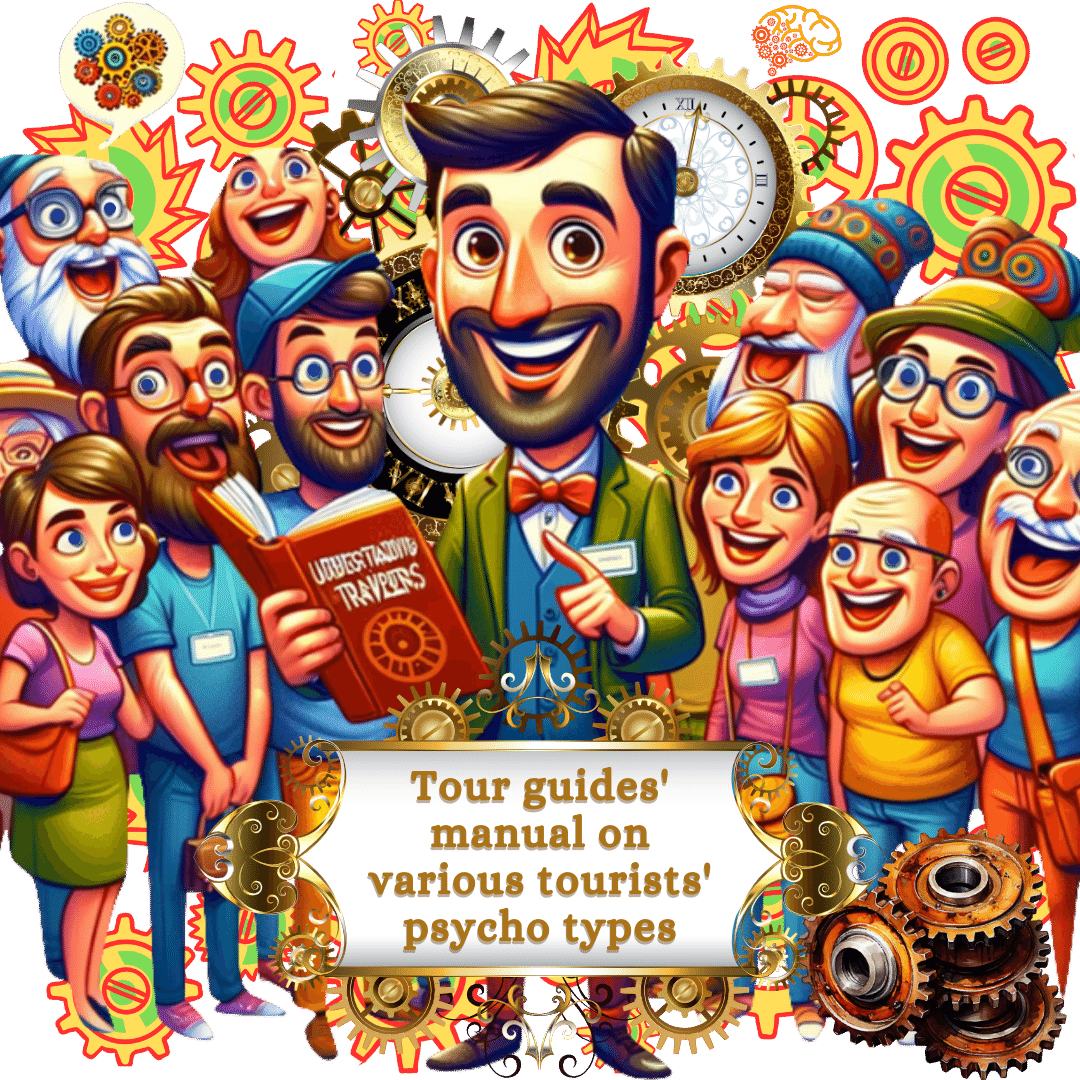
We aim to equip tour guides with insights into understanding and adapting to different psycho types during personal excursions.
The term "psycho type" refers to a classification or categorization of individuals based on their psychological traits, characteristics, and behaviors. It involves identifying patterns in an individual's personality, preferences, and cognitive processes. Psycho types are often used to describe and understand variations in how people perceive and interact with the world around them.
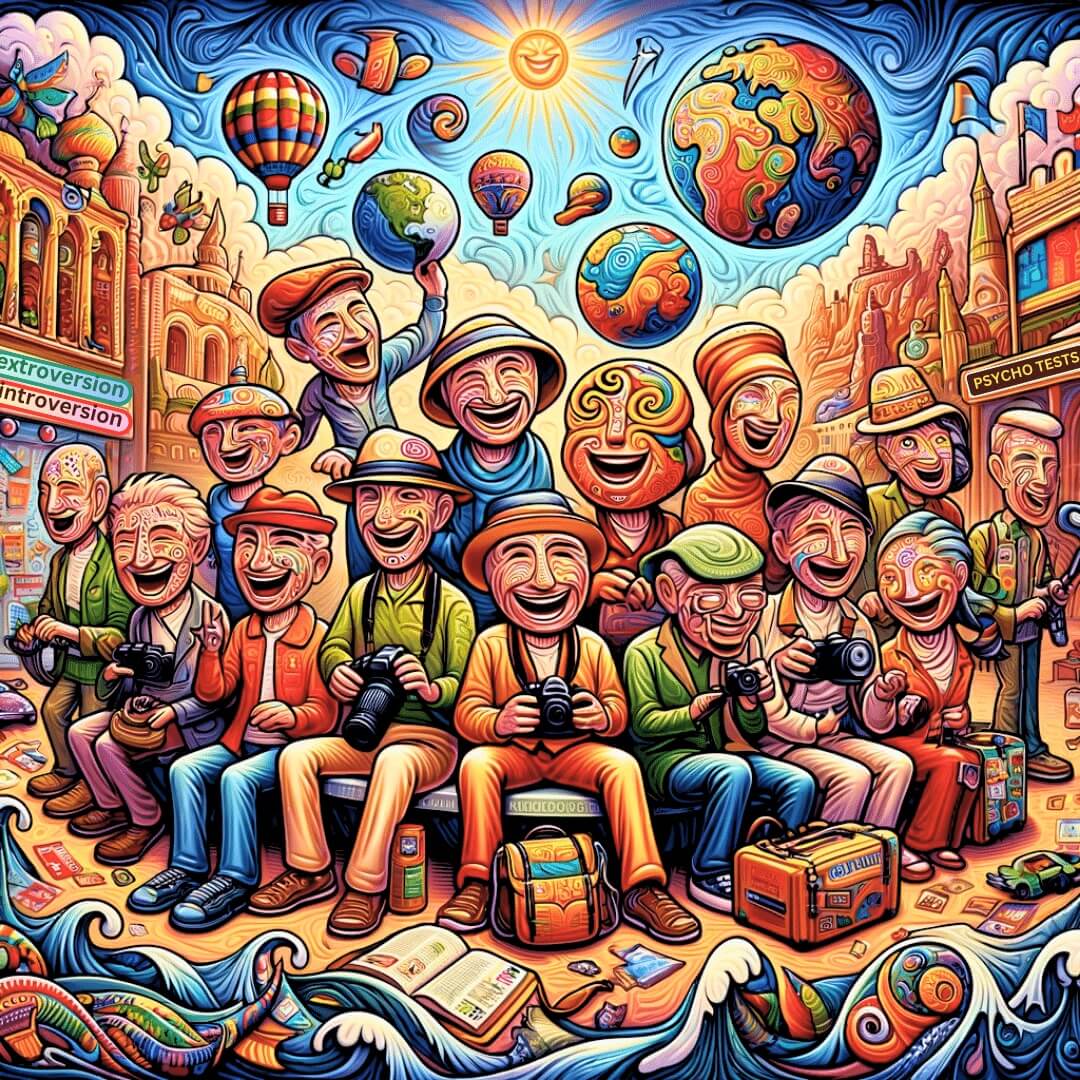
Each person has a unique combination of characteristics that influence how they approach new experiences.
In the context of tourism and travel, understanding the psycho type of a tourist is crucial for tour guides. It enables guides to tailor their approach, communication style, and itinerary to meet each traveler's specific needs and preferences. Here's a more detailed exploration of psycho types:
- Psycho types are closely linked to personality traits. Each person has a unique combination of characteristics that influence how they approach new experiences, interact with others, and make decisions.
- Standard personality dimensions, such as extroversion, introversion, openness, conscientiousness, agreeableness, and neuroticism, contribute to forming psycho types.

Psycho types are often used to describe and understand variations in how people perceive and interact with the world around them.
- Psycho types encompass individual preferences, values, and priorities. These can include preferences for certain activities, cultural experiences, adventure, relaxation, or intellectual pursuits.
Understanding a tourist's values helps the tour guide create a more meaningful and enjoyable experience.

- Cognitive styles refer to the diverse ways individuals process information, solve problems, and make decisions. Some people may be more analytical and detail-oriented, while others may focus on the bigger picture and overall experience.
Recognizing the cognitive styles of the tourists aids tour guides in presenting information that resonates with the tourist's preferred processing mode.

- Psycho types also consider emotional needs and reactions. Some tourists may seek excitement and stimulation, while others prioritize comfort and relaxation.
- Attuning to the emotional needs of tourists helps tour guides provide the right level of support and engagement during the tour.
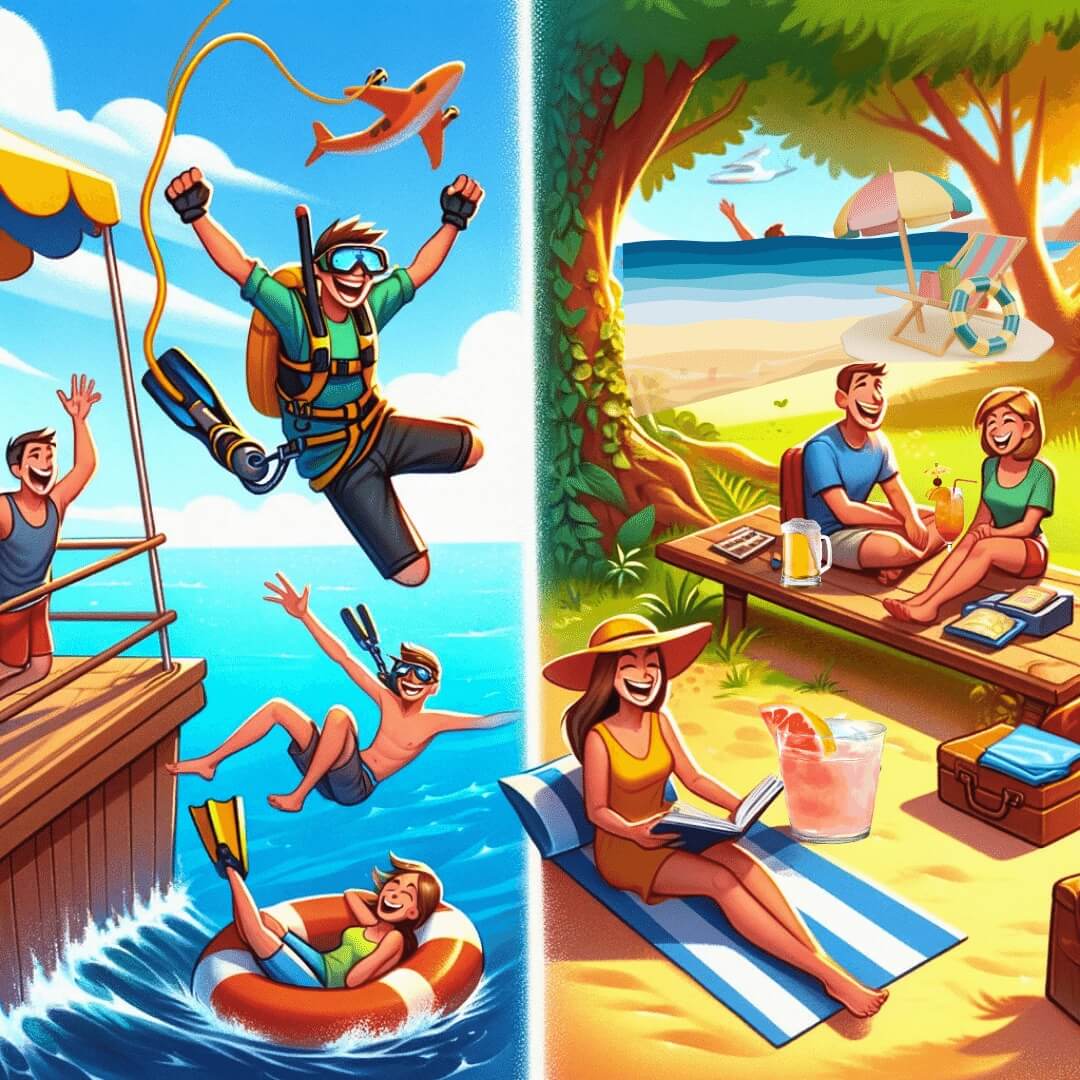
Some tourists may seek excitement and stimulation, while others prioritize comfort and relaxation.
- The essence of psycho types in tourism lies in adapting and tailoring experiences. Tour guides who can identify and understand the psycho type of their clients can customize the itinerary, communication style, and activities to create a more personalized and satisfying journey.

Customized itineraries, communication styles, and activities can create a more personalized and satisfying journey.
In summary, psycho types offer a framework for understanding how individuals approach travel and tourism. By recognizing and adapting to these psycho types, tour guides can enhance the overall experience for their clients, making the journey more enjoyable, memorable, and fulfilling.
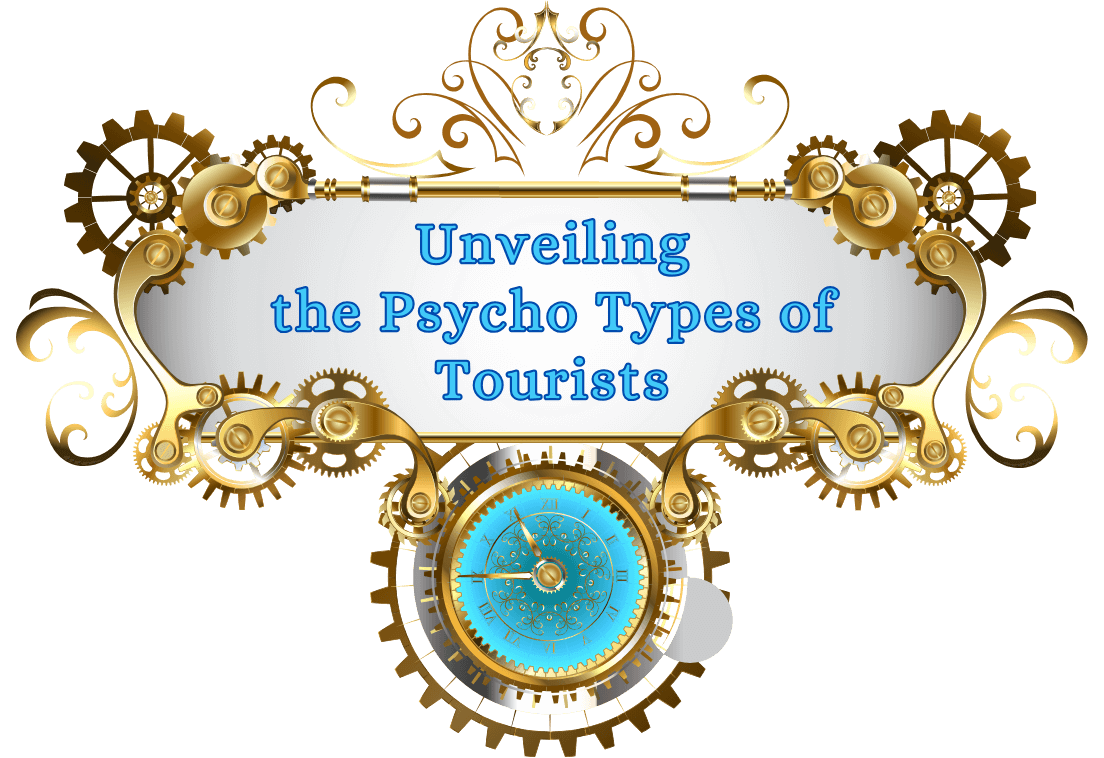
Unveiling the psycho types of Tourists
Let's delve deeper into each psycho type of tourist, exploring their traits, preferences, and adaptation tips:
- Values authenticity and seeks genuine local experiences.
- Appreciates historical and cultural significance.
- Enjoys exploring historical landmarks, museums, and cultural events.
- Prefers interacting with local communities to understand traditions.

The Culture Connoisseur.
- Provide in-depth historical insights and cultural context.
- Foster connections with local communities for immersive experiences.
- Highlight the authenticity of destinations and cultural practices.
- Thrill-seeker who values adrenaline-pumping activities.
- Enjoys off-the-beaten-path and unconventional experiences.
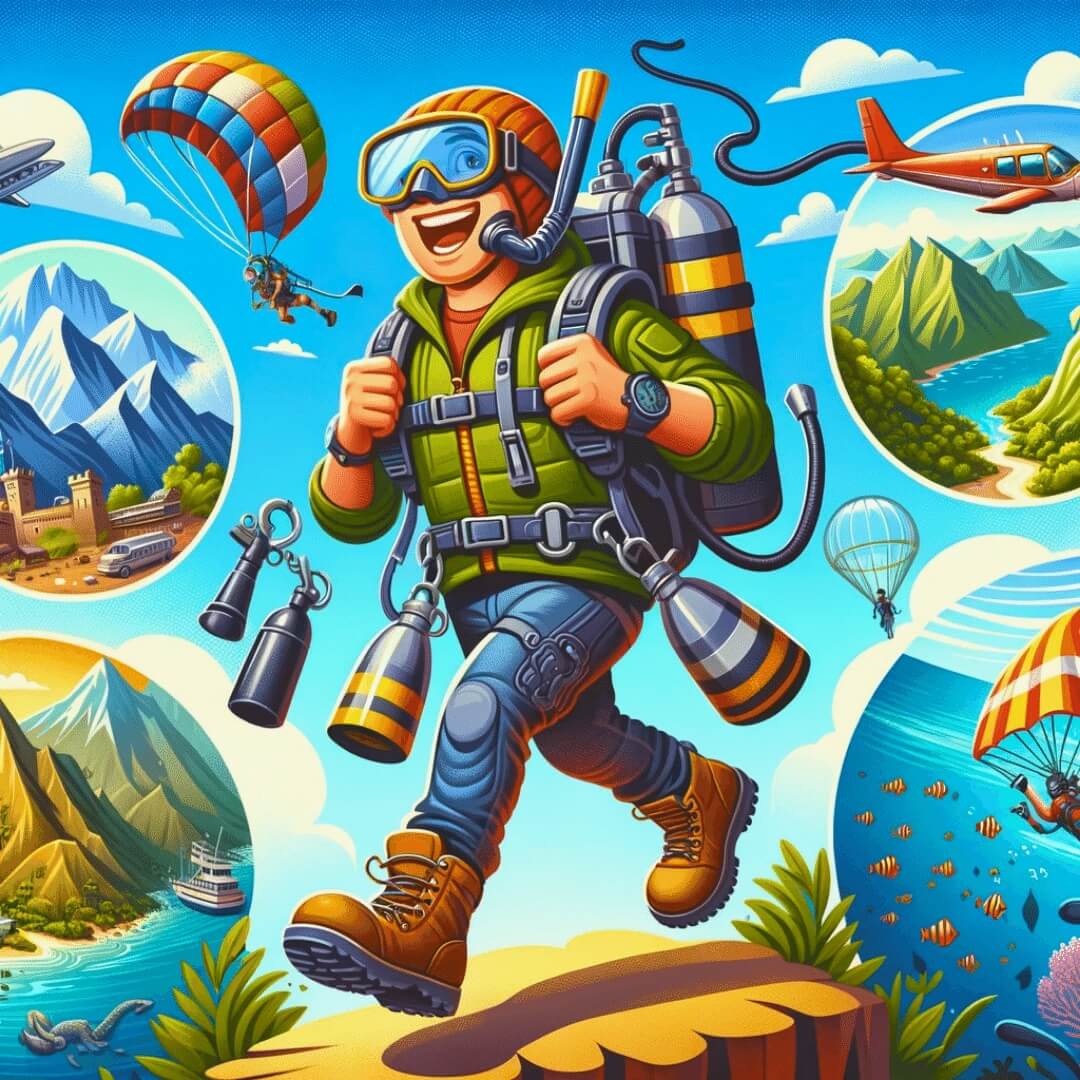
Adventure Aficionado.
- Seeks adventurous activities such as hiking, water sports, or extreme sports.
- Prefers exploring lesser-known destinations and hidden gems.
- Craft itineraries with adventurous activities and unique experiences.
- Highlight offbeat destinations and unconventional attractions.
- Emphasize the thrill and excitement associated with the tour.
- Prefers tranquility and values comfort during travel.
- Seeks leisurely experiences and a laid-back atmosphere.
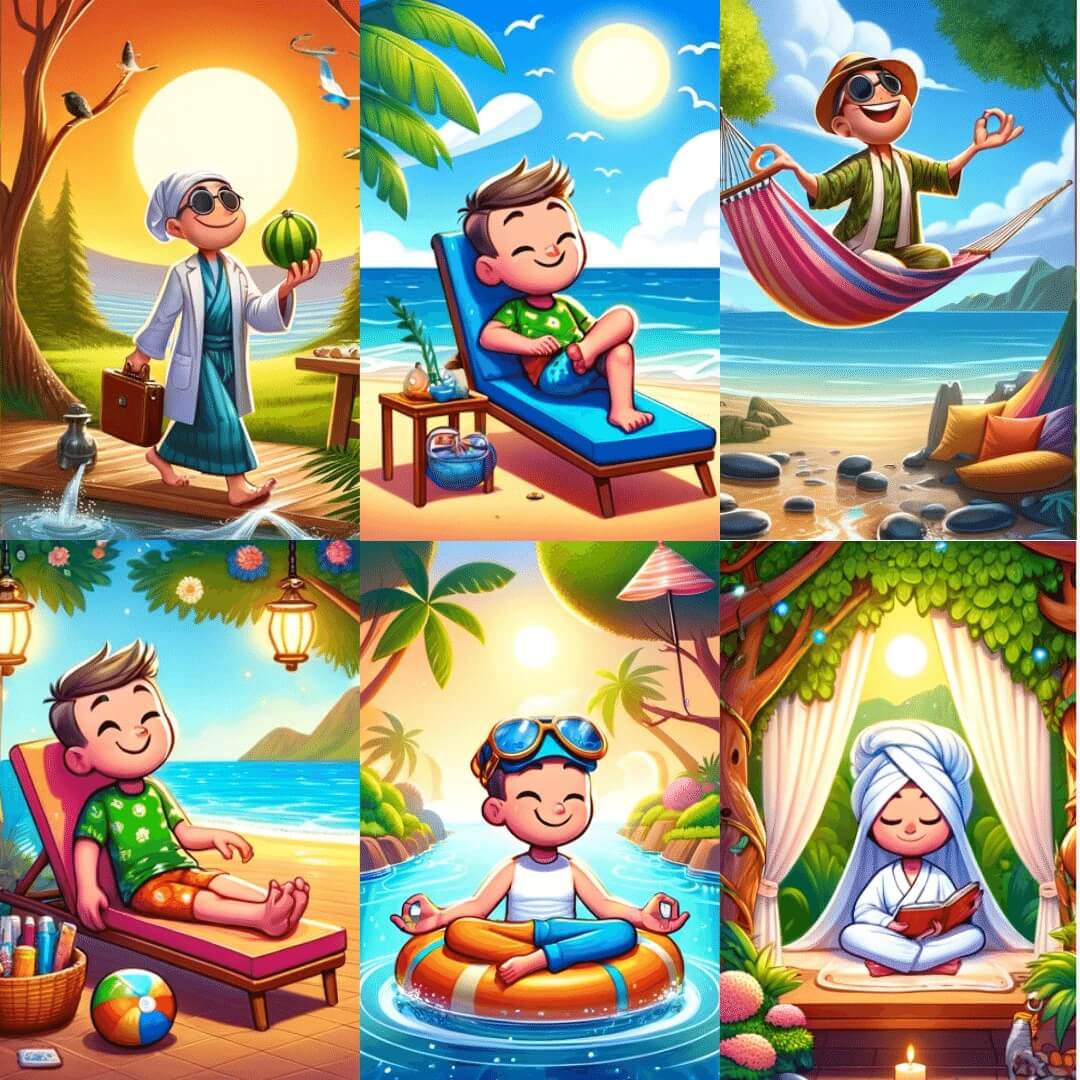
Relaxation Seeker.
- Enjoys spa treatments, scenic landscapes, and peaceful environments.
- Prefers comfortable accommodations and relaxed pacing.
- Choose serene locations with scenic views.
- Include spa and wellness activities in the itinerary.
- Create a laid-back and unhurried atmosphere during the tour.
- Curious and enjoys learning new things.
- Values in-depth information and intellectual stimulation.
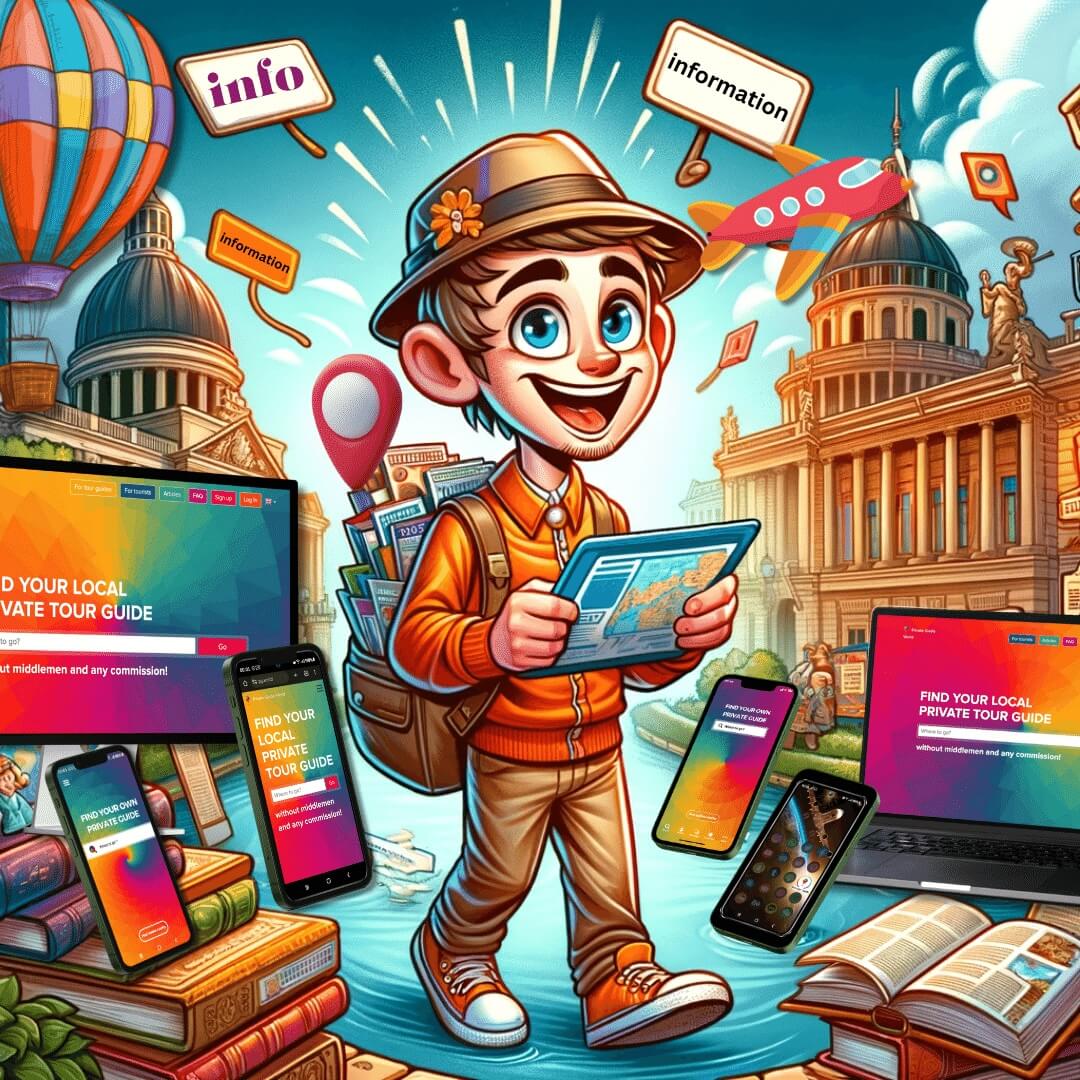
Information Enthusiast.
- Interested in historical facts, cultural insights, and local knowledge.
- Enjoys engaging in intellectually stimulating conversations.
- Provide detailed and informative commentary.
- Share exciting stories and historical background.
- Encourage discussions and answer questions thoroughly.
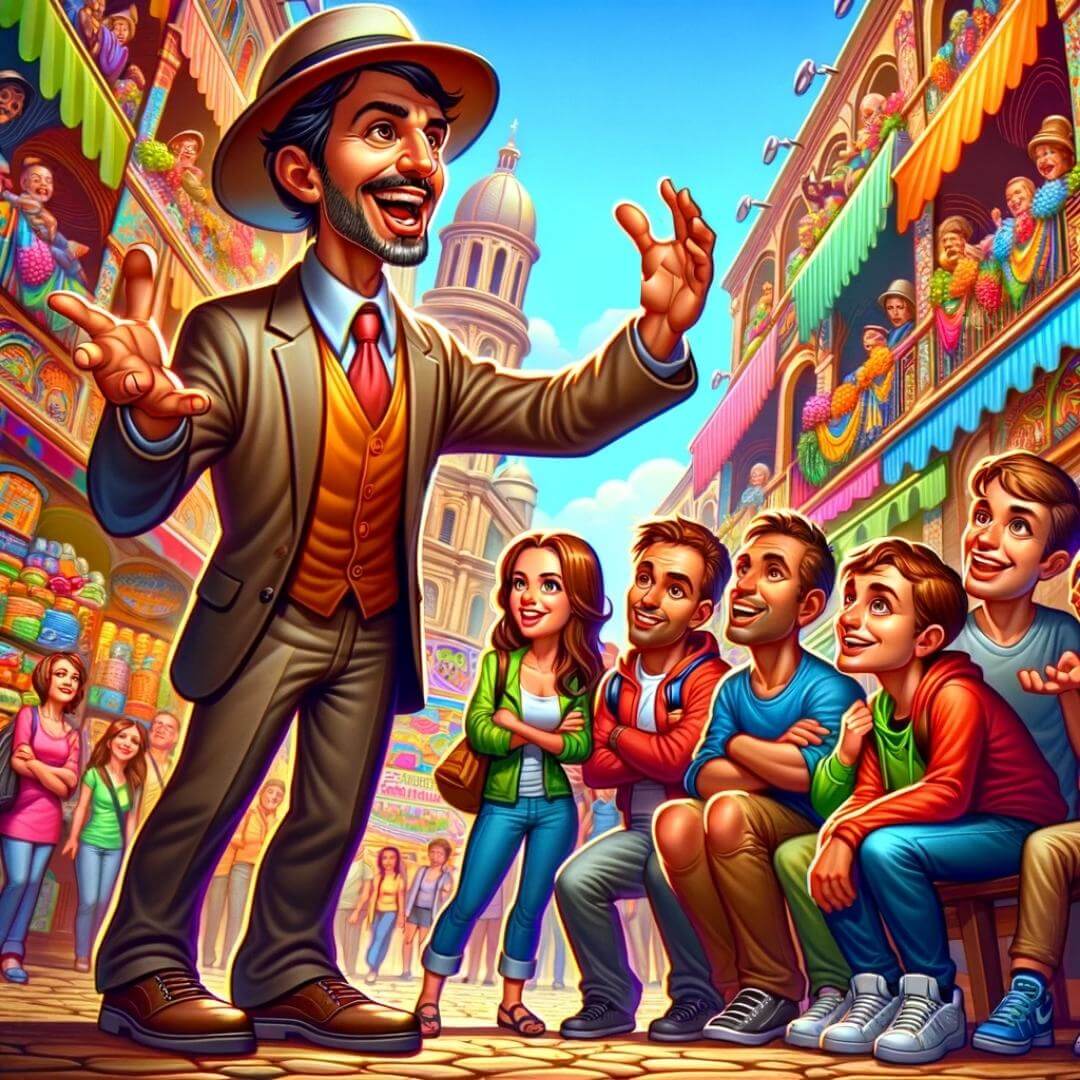
A tour guide can tell exciting stories!
Understanding and adapting to these psycho types allows tour guides to create personalized and enriching experiences, ensuring that each tourist's unique preferences and expectations are met during the journey.

Deciphering psycho types from Initial Correspondence
Determining the psycho type of future tourists based on correspondence requires keen observation, active listening, and strategic questioning. Here are some techniques that tour guides can employ to identify psycho types during the initial correspondence:
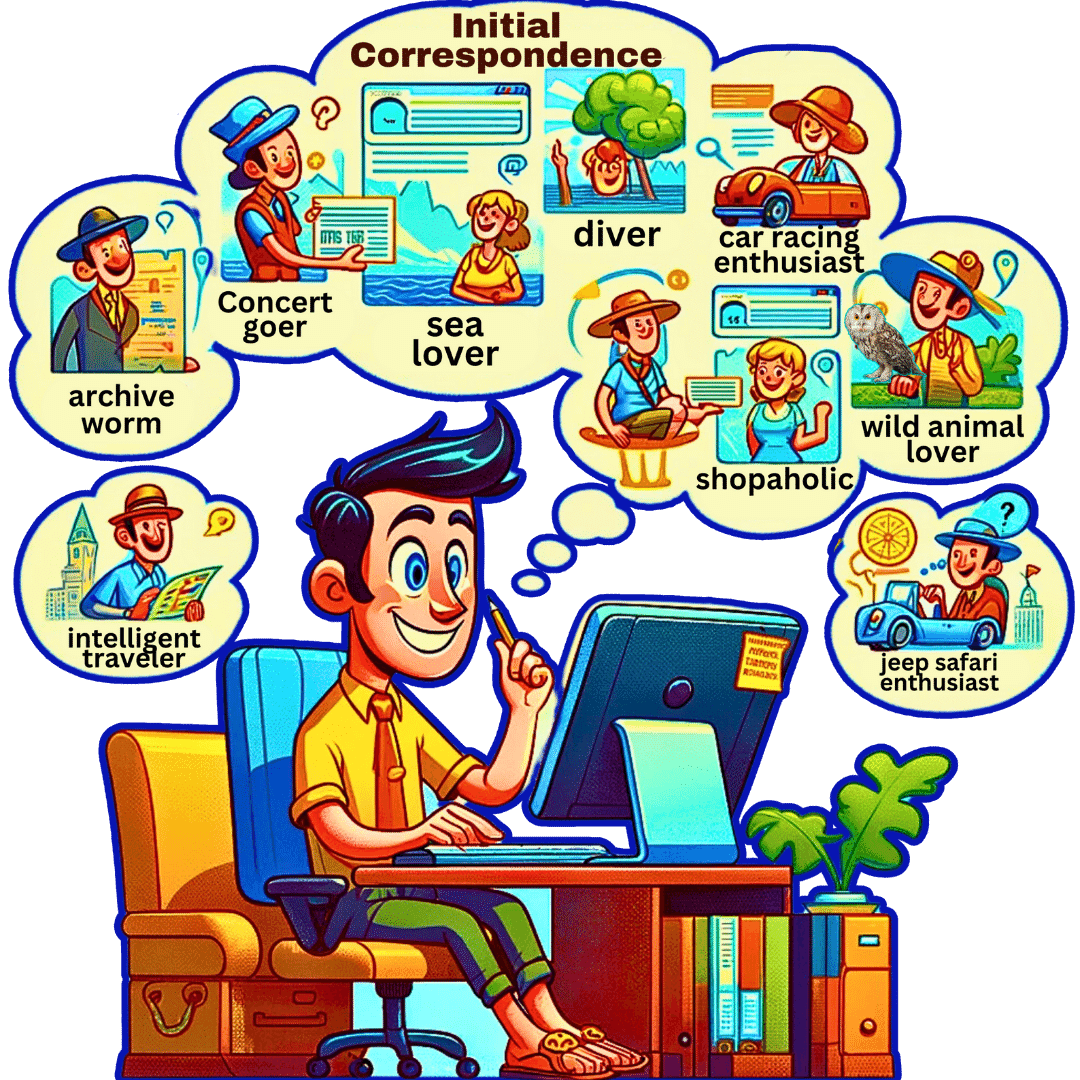
Here are some techniques that tour guides can employ to identify psycho types during the initial correspondence.
Pay attention to the tone, language, and communication style in emails or messages.
- Formal language and detailed inquiries may suggest an Information Enthusiast.
- Expressions of excitement and enthusiasm for new experiences may indicate an Adventure Aficionado.

Develop a pre-tour questionnaire to gather information about preferences, interests, and expectations.
- Inquire about preferred activities, willingness to explore offbeat destinations, interest in historical or cultural experiences, etc.
- Ask about comfort preferences, such as preferred accommodation type and tour pacing.

Explore the tourist's social media profiles to understand their interests, hobbies, and travel history.
- Photos or posts about adventure activities may suggest an Adventure Aficionado.
- Posts focusing on cultural events or historical sites may indicate a Culture Connoisseur.

- Pay attention to the nuances in their conversations or messages.
- Expressions of excitement about learning new things may indicate an Information Enthusiast.
- Emphasis on the need for relaxation and tranquility may suggest a Relaxation Seeker.

Tour Guide must Pay attention to the nuances
- Analyze the content of their emails or messages for specific keywords or repeated themes.
- Expressions like "adventure," "authentic experiences," "relaxation," or "learning" can provide insights into their psycho type.

Tour Guide must ask tourists about dietary restrictions
- Include questions about cultural preferences and sensitivities.
- Ask about dietary restrictions, preferences for interacting with locals, or interest in cultural events.

Explore the tourist's social media profiles and observe the speed and level of detail in their responses.
- Observe the speed and level of detail in their responses.
- Quick responses with specific details may suggest an Information Enthusiast.
- Deliberate and thoughtful responses may indicate a Culture Connoisseur.
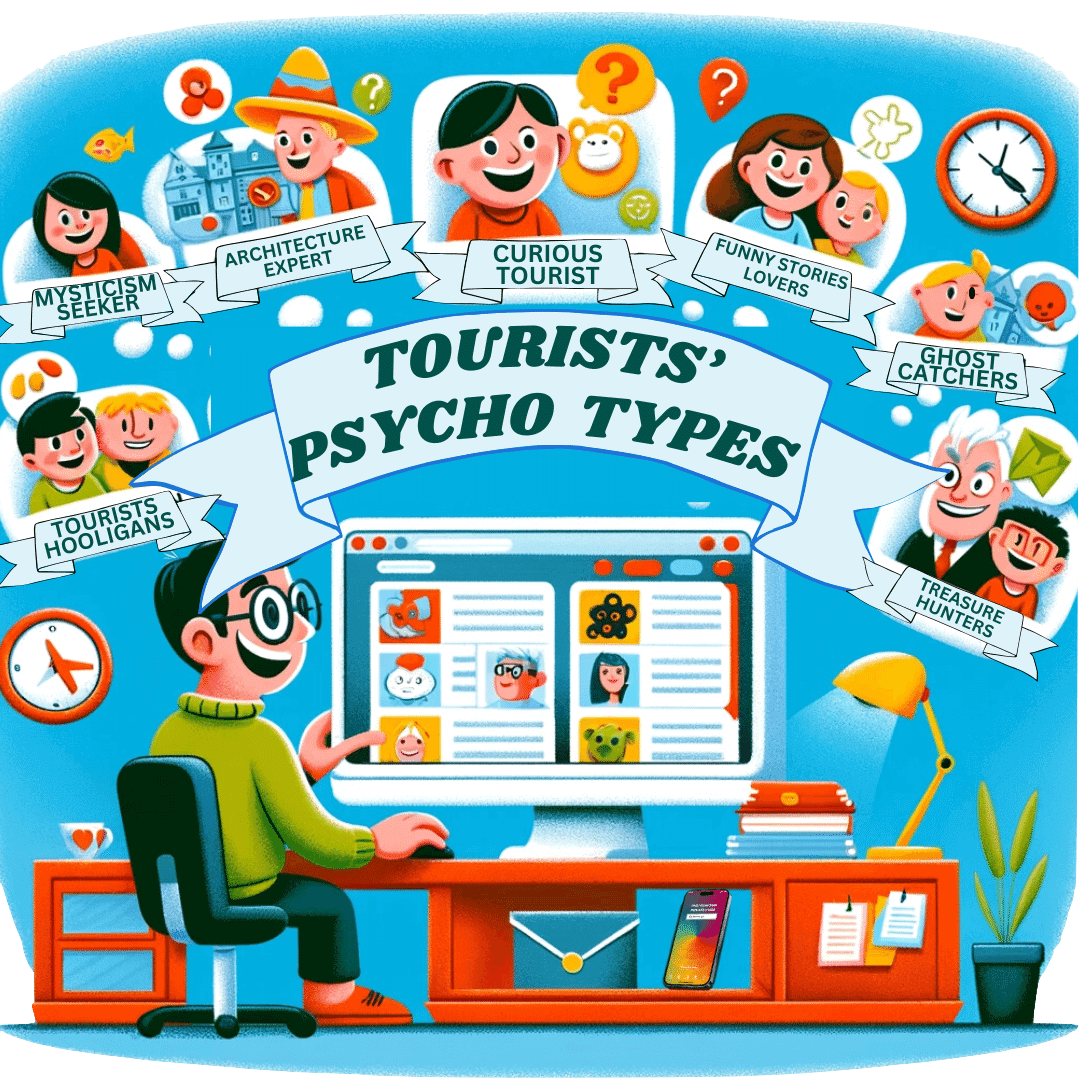
The psycho types of your future tourists.
By employing these techniques, tour guides can gather valuable information about the psycho types of their future tourists during the correspondence phase. This early understanding enables tour guides to tailor the tour more effectively, providing each traveler with a more personalized and satisfying experience.
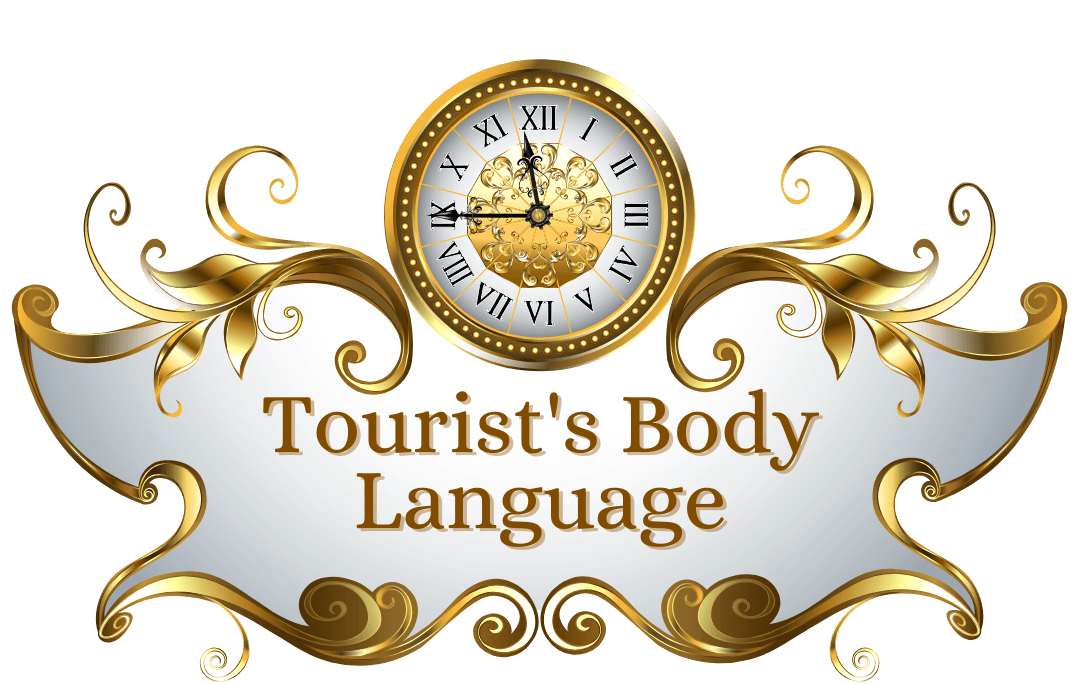
Tourist's Body Language
A tourist's body language can provide valuable insights for a tour guide, helping them gauge the tourist's comfort, engagement level, and overall satisfaction. Here are some critical aspects of body language that tour guides should pay attention to and how they can interpret these cues:
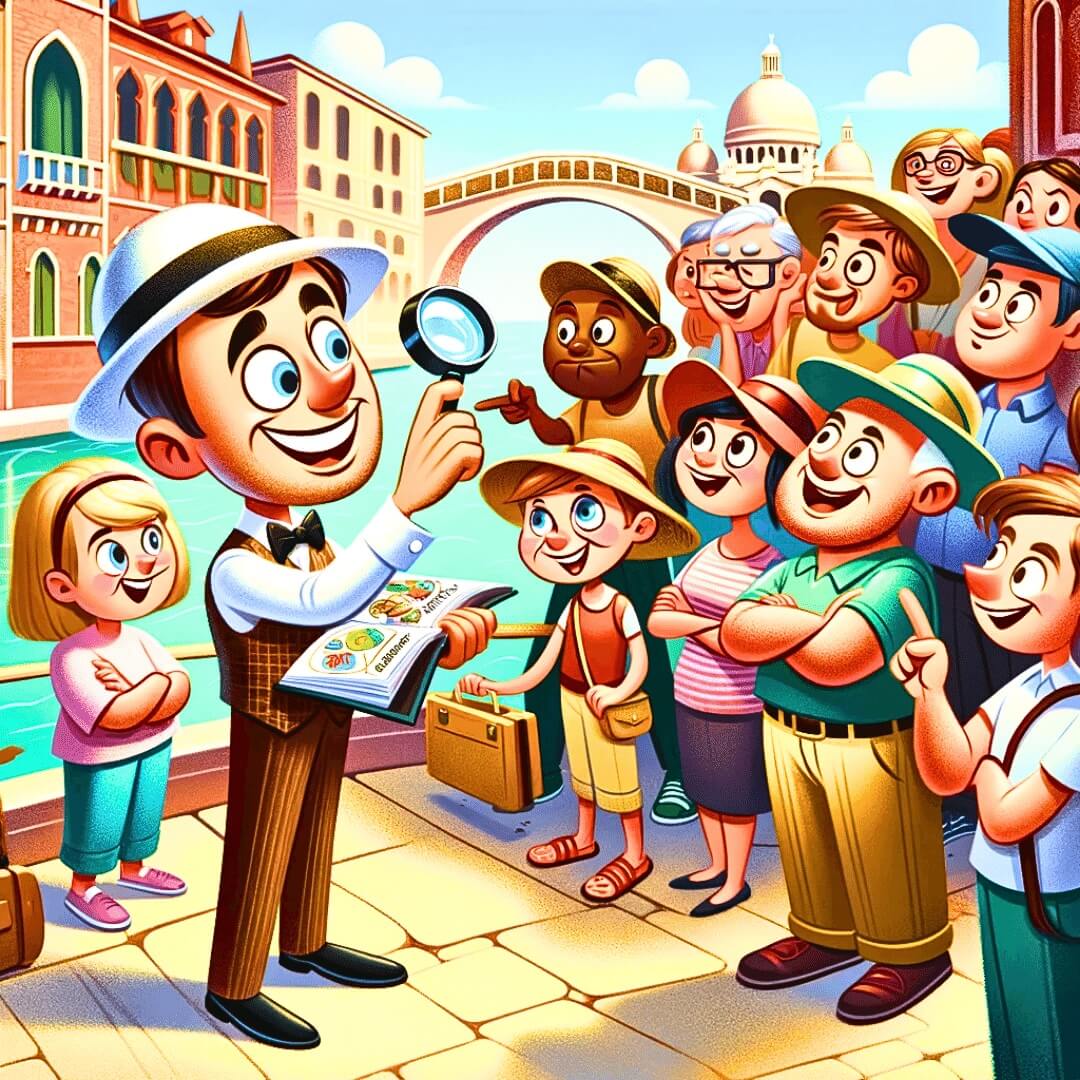
Tourist's Body Language.
- Smiles, frowns, raised eyebrows, or other facial expressions.
- Smiles generally indicate satisfaction and enjoyment.
- Frowns or furrowed brows may suggest confusion or displeasure.

Facial Expressions.
- Upright posture, relaxed stance, or tense and closed-off body language.
- Upright and relaxed posture usually signifies interest and engagement.
- A tense or closed-off posture may indicate discomfort or disinterest.
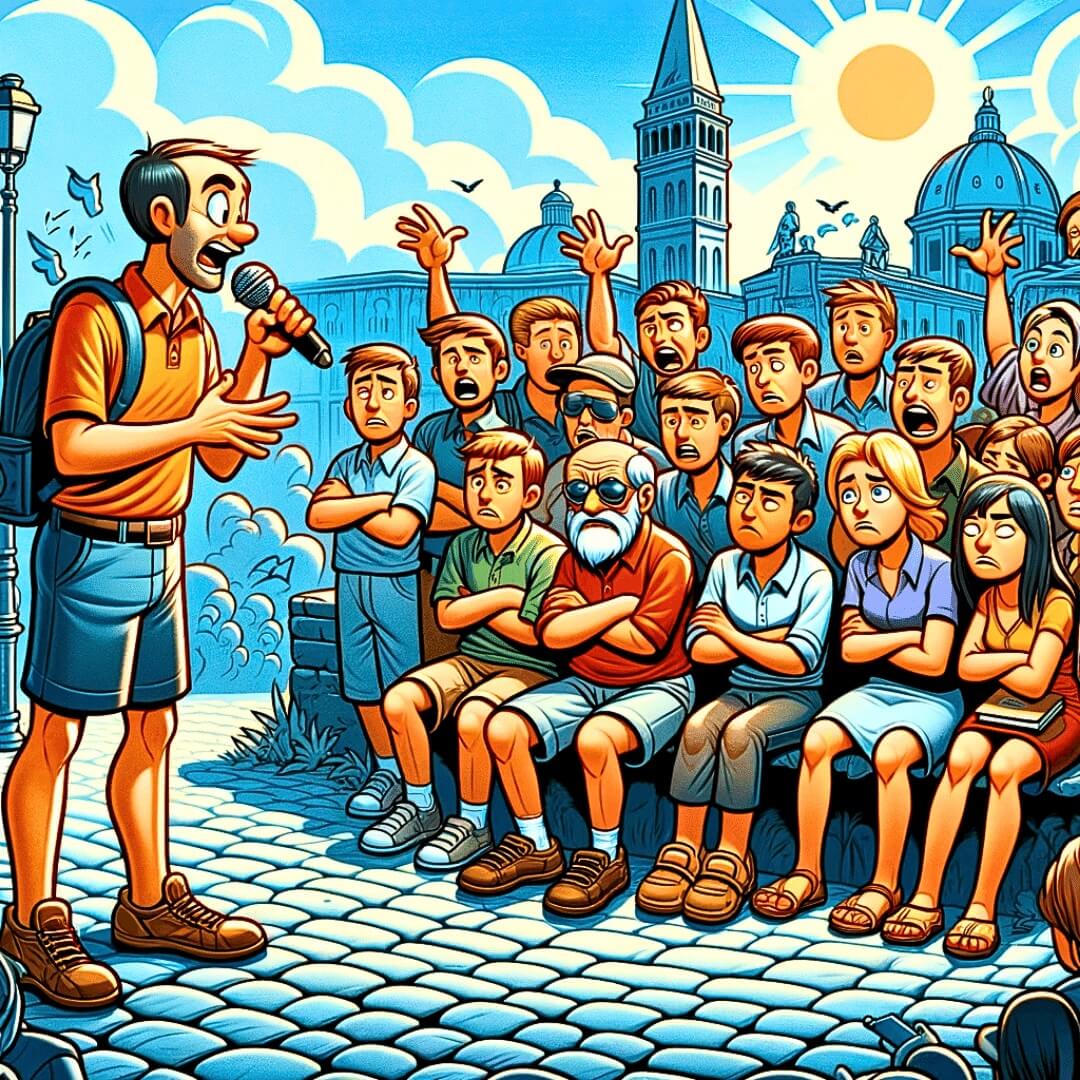
Tense or closed-off tourist postures may indicate discomfort or disinterest in a tour guide's story.
- Direct eye contact, avoidance, or wandering gaze.
- Direct eye contact often indicates interest and attentiveness.
- Avoidance or wandering gaze may suggest distraction or discomfort.
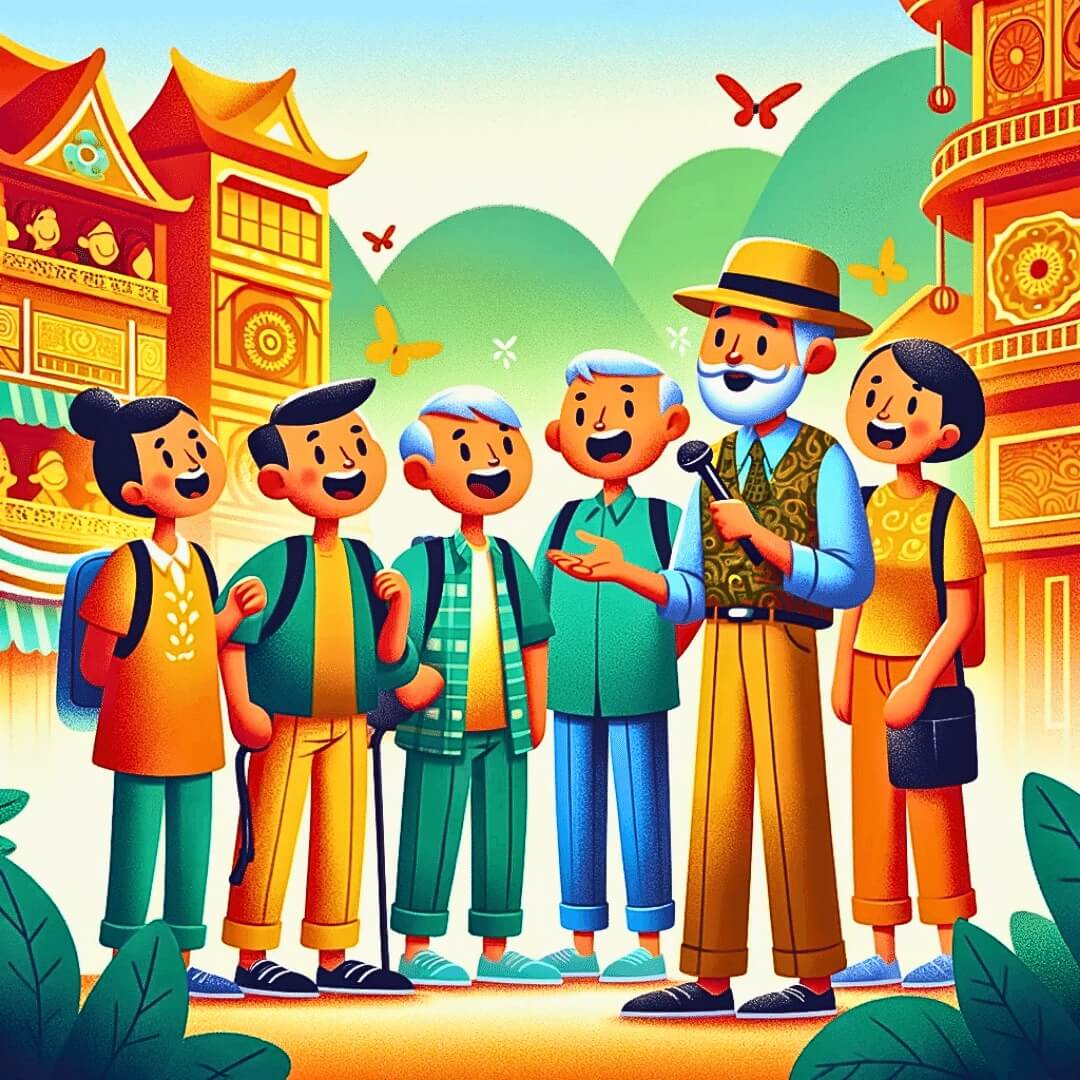
Eye Contact is significant.
- Engaging gestures, pointing, or crossed arms.
Engaging gestures demonstrate enthusiasm and involvement.
- Crossed arms can signal defensiveness or discomfort.

- Tourists' proximity to the guide, whether they stay close or keep a distance.
Proximity can indicate comfort and a desire for engagement.
- Keeping a distance may suggest a need for personal space.
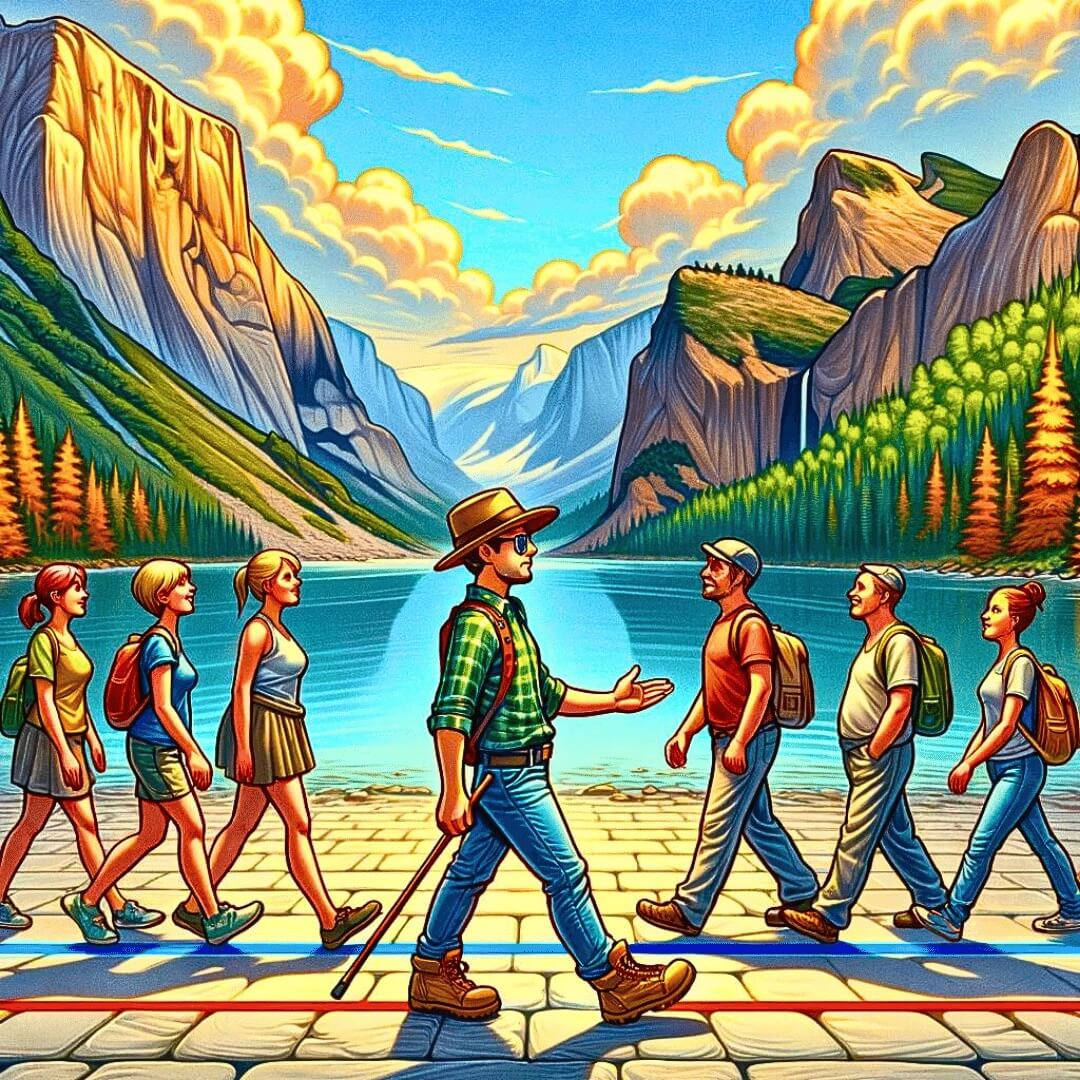
- Subconscious imitation of the guide's body language.
- Mirroring can indicate a positive connection and rapport between the guide and the tourist.

Subconscious imitation of the guide's body language means a lot!
- Fidgeting, constant movement, or restlessness.
Restlessness may indicate boredom or discomfort.
- Engage the tourist with interactive elements to alleviate restlessness.
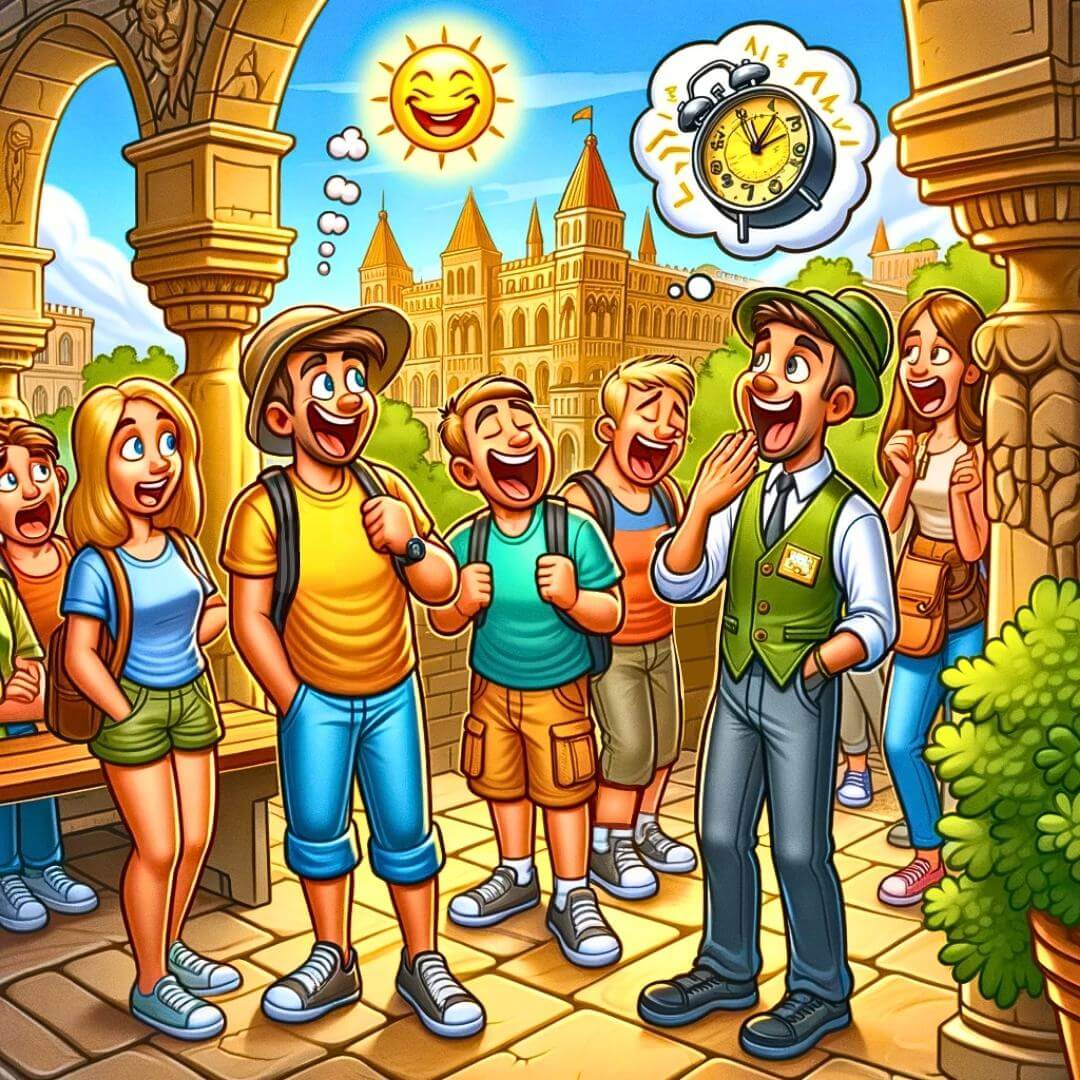
- The tone of voice, the pace of speech, and vocal expressions.
- Enthusiastic tone and varied expressions indicate interest.
- Monotone or hesitant speech may suggest disinterest or confusion.

A talkative tour guide and a group of tourists attentively listening to him.
- Willingness or aversion to physical contact (e.g., handshakes, pats on the back).
- Willingness for physical contact may indicate comfort and positive rapport.
- Aversion may suggest discomfort with physical interaction.

A tour guide's aversion may suggest discomfort with physical interaction with tourists.
- Constant smartphone use, taking photos, or disengagement with the surroundings.
- Excessive smartphone use may suggest distraction or disinterest.
- Taking photos can indicate interest in capturing memories.
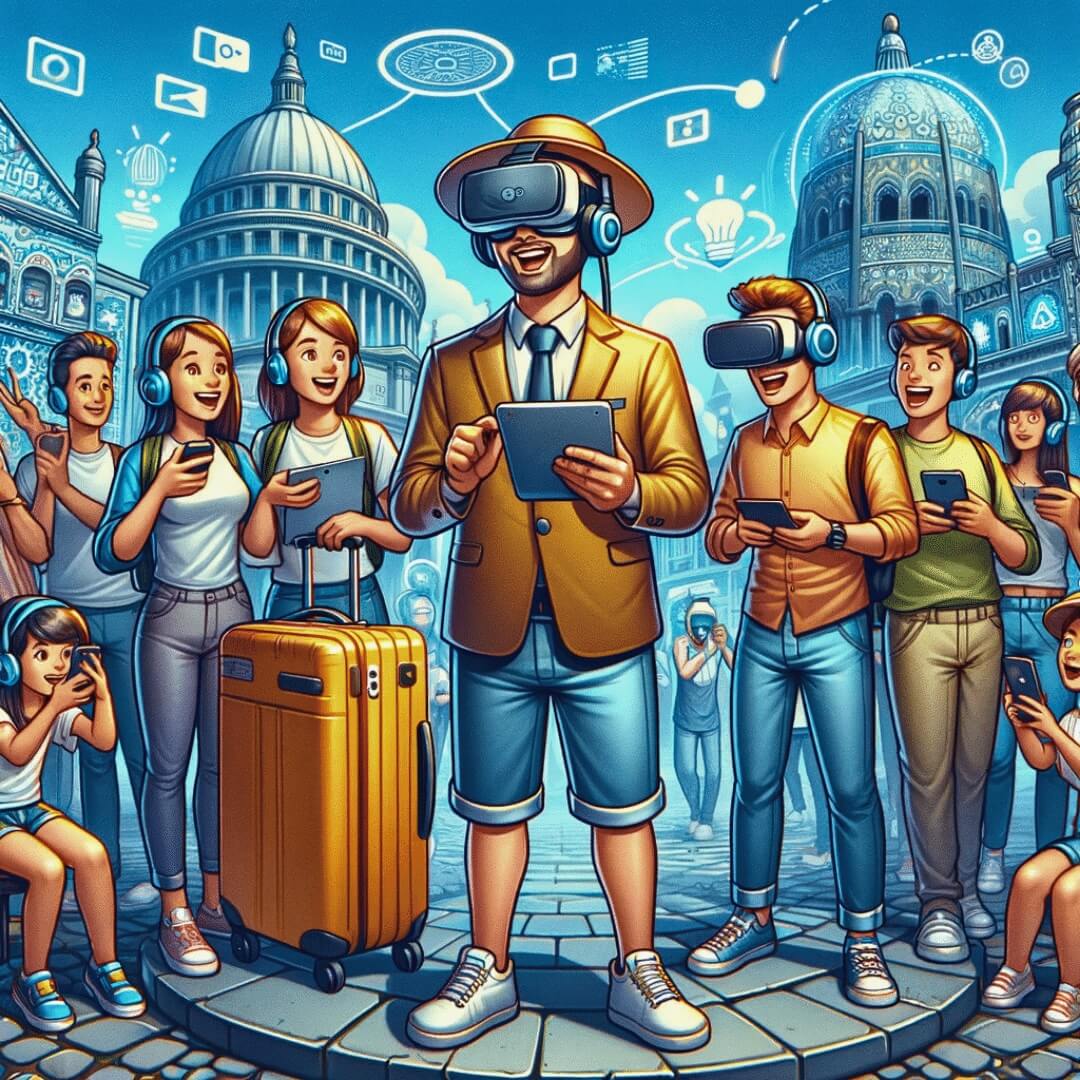
The use of Technology could be either a positive or negative sign.
Tour guides should be attentive to these body language cues throughout the tour, adapting their approach accordingly.
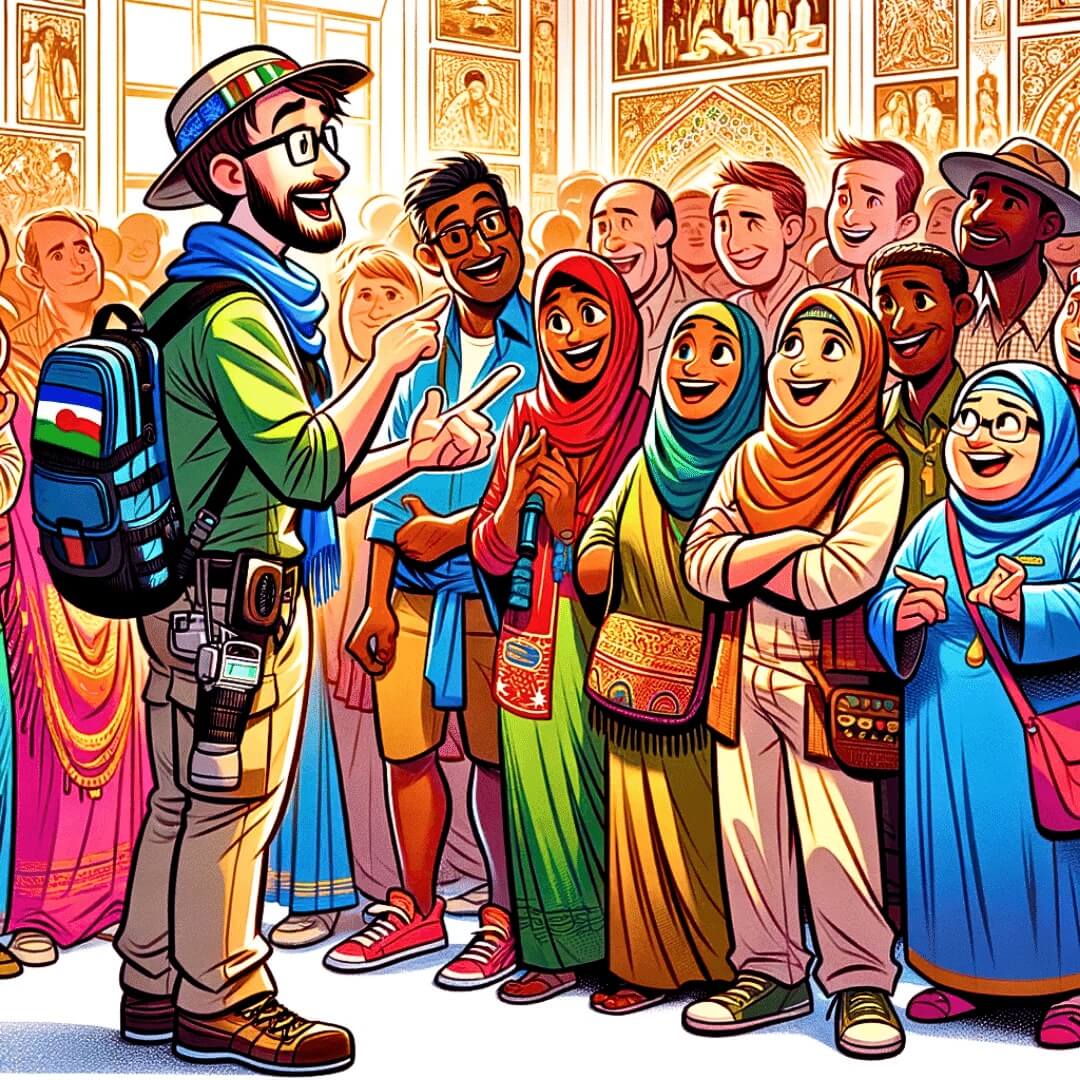
It's essential for tour guides to consider cultural differences and individual variations when leading guided tours for tourists.
It's essential to consider cultural differences and individual variations when interpreting body language. Additionally, open communication allows guides to address any concerns and ensure a positive and enjoyable experience for the tourist.

Adaptation Lesson
Balancing adaptation to the psycho type of the tourist with consistent professional conduct is essential for a successful and enjoyable excursion.
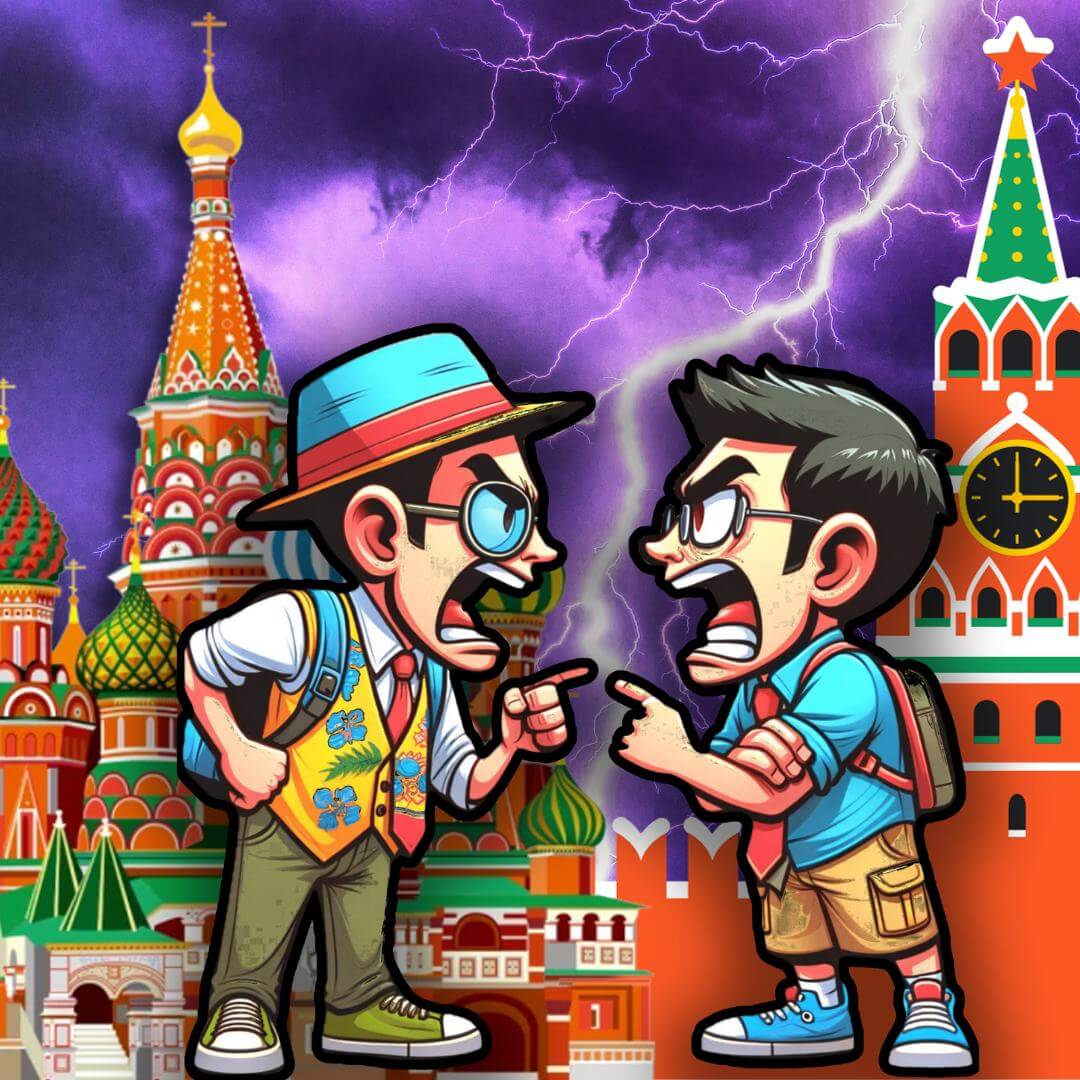
Completely unacceptable conflict situation in tour guides' activities.
Here are some considerations:

Tour Guides' Adaptation to Tourist psycho types
- Adapting to the psycho type of the tourist enhances the overall experience by catering to their preferences and expectations.
- A personalized approach can make the tour more memorable and satisfying for the tourist.
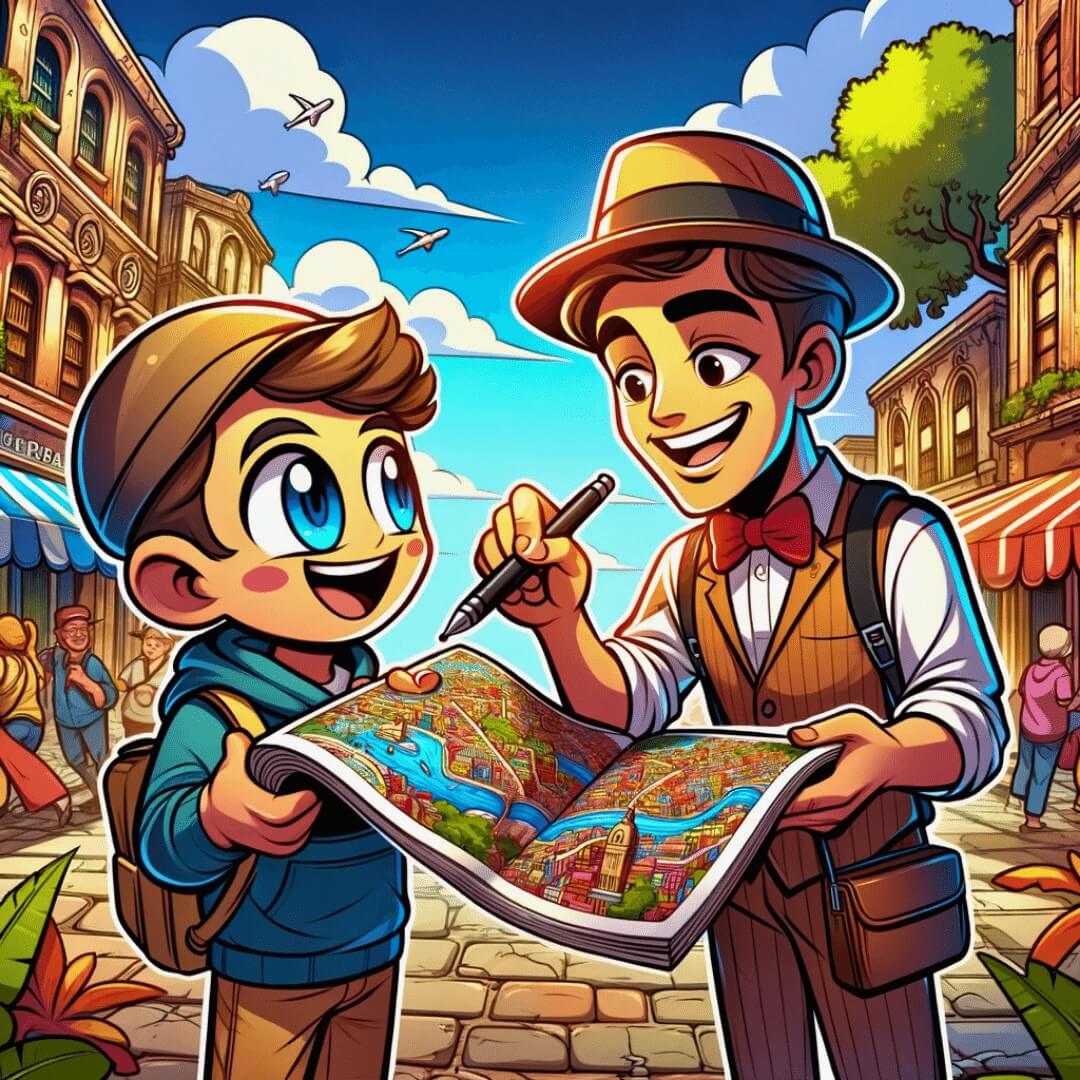
A personalized tour guide approach can make the tour more memorable and satisfying for the tourist.
- Responding to the psycho type positively often results in favorable Feedback and increased satisfaction.
- Adapting to their needs shows that the tour guide values and respects their individual preferences.

Positive Feedback is the goal!
- Adjusting to the psycho type helps build a stronger connection and rapport with the tourist.
- Understanding their personality type fosters a sense of trust and comfort.
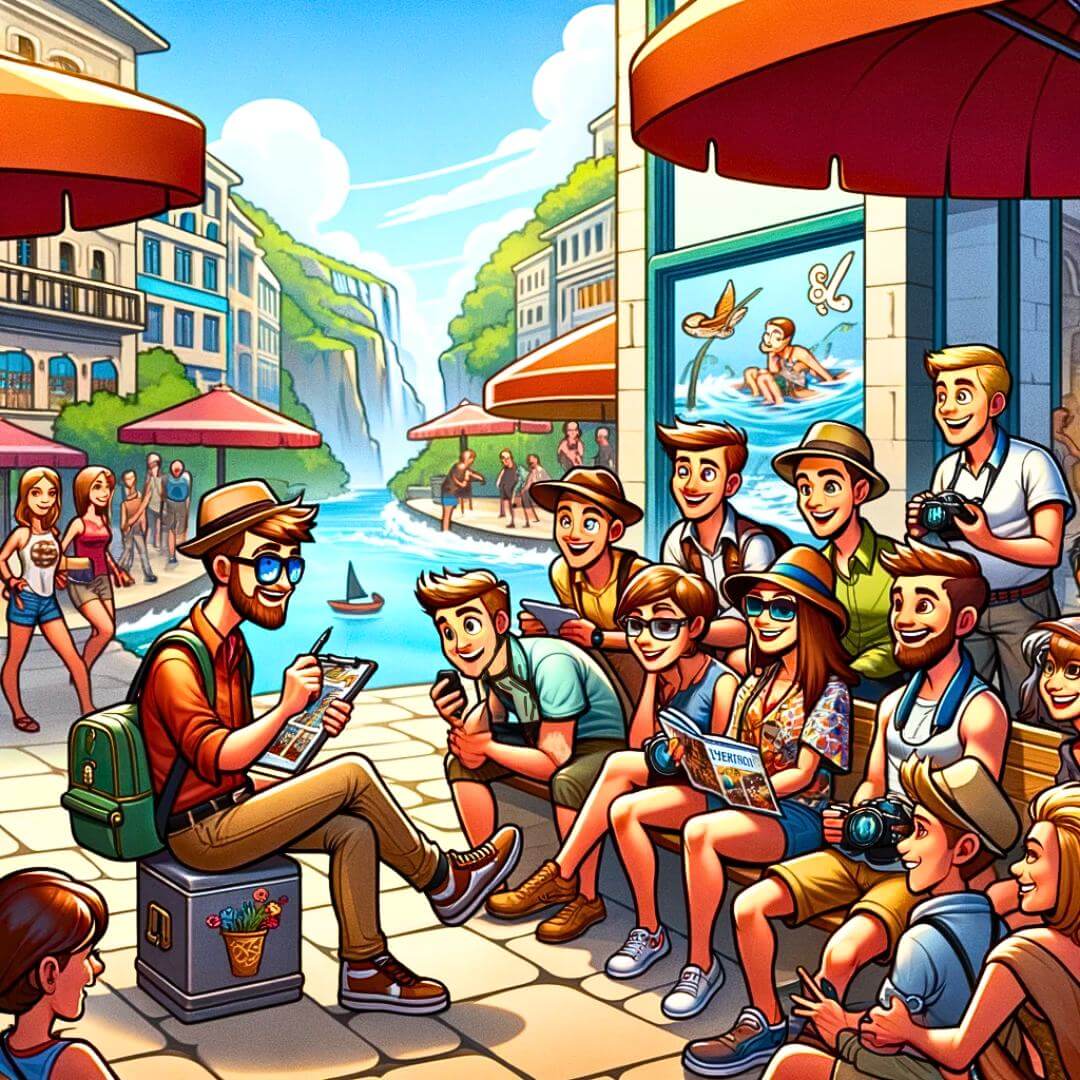
Understanding tourists' personality types fosters a sense of trust and comfort between tour guides and tourists.
- Tourism is diverse, and a flexible approach allows the guide to navigate various preferences.
- Being adaptable ensures the tour is enjoyable for a broader range of tourists.
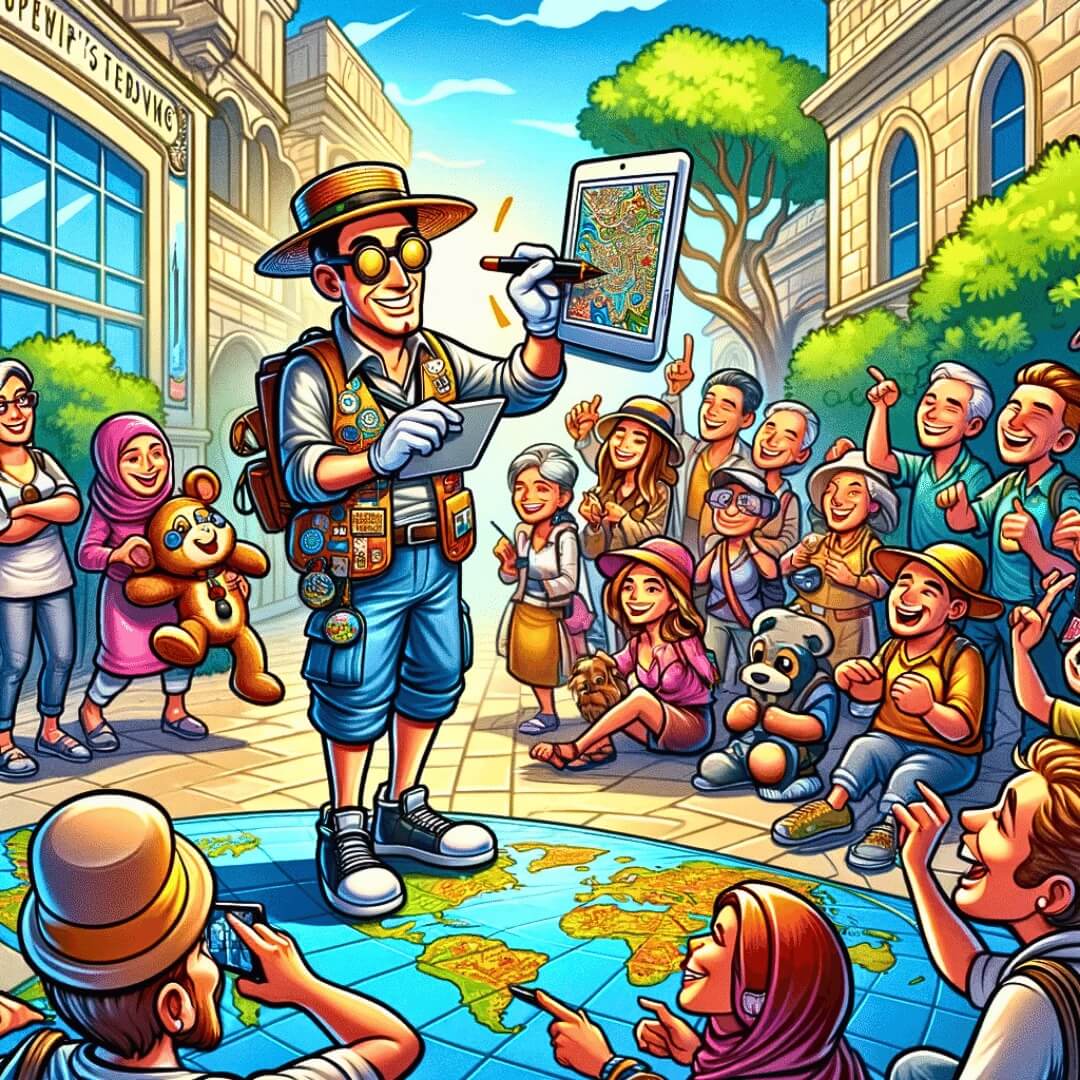
A tour guide's adaptivity ensures the tour remains enjoyable for a broader range of tourists.
Consistent Professional Conduct:
- The tour guide is an expert in their field, possessing knowledge and skills contributing to a comprehensive and enriching experience.
- Maintaining professional conduct ensures that tourists benefit from the guide's expertise.

The tour guides are the experts in their field!
- Adhering to professional standards preserves the integrity of the tour and the guide's reputation.
- Consistency in behavior demonstrates reliability and professionalism.
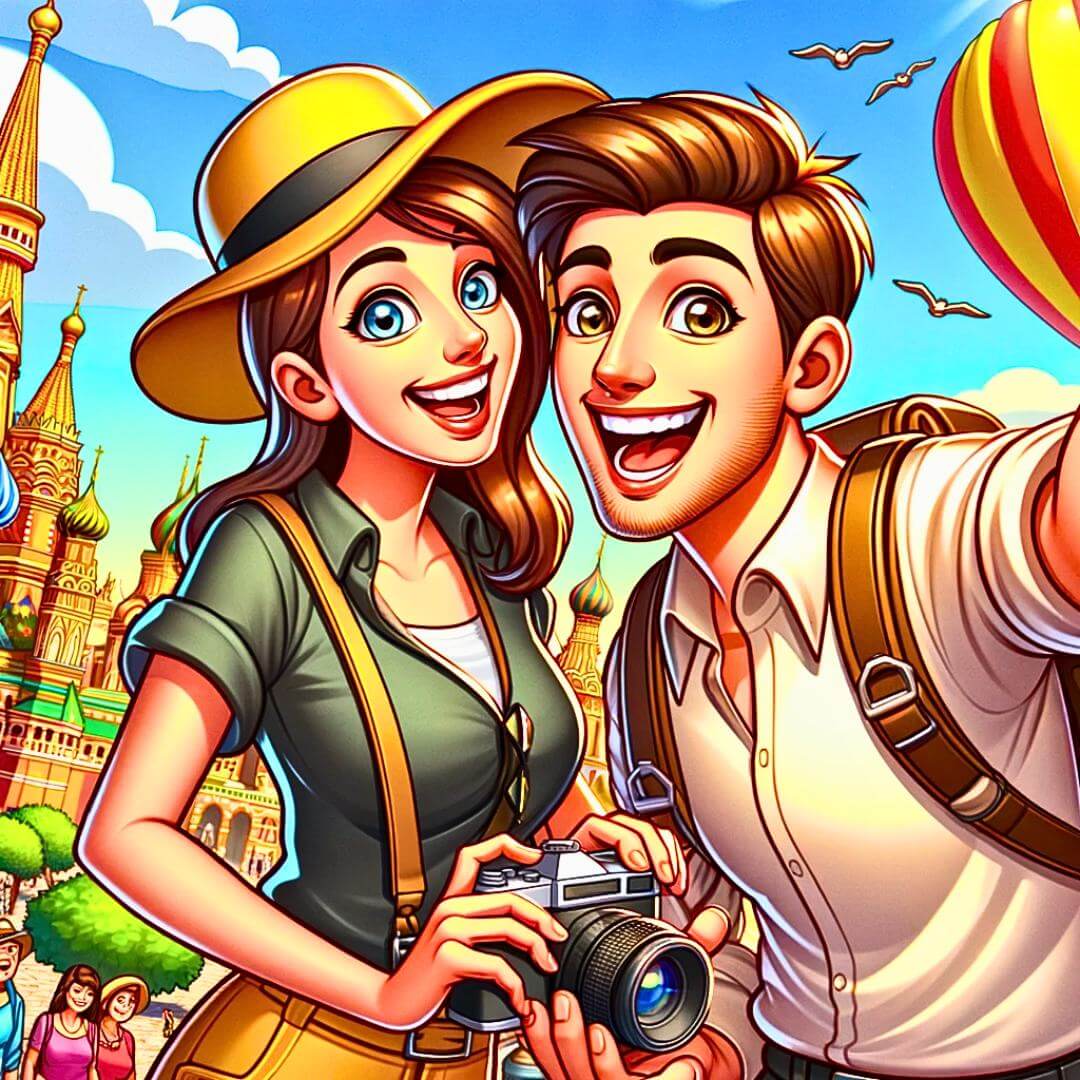
No matter how charming this situation may look, a tour guide must never forget about professional ethics.
- While adapting to psycho types is valuable, there may be situations where certain behaviors are inappropriate or against ethical guidelines.
- The guide should be prepared to handle such situations diplomatically and professionally.
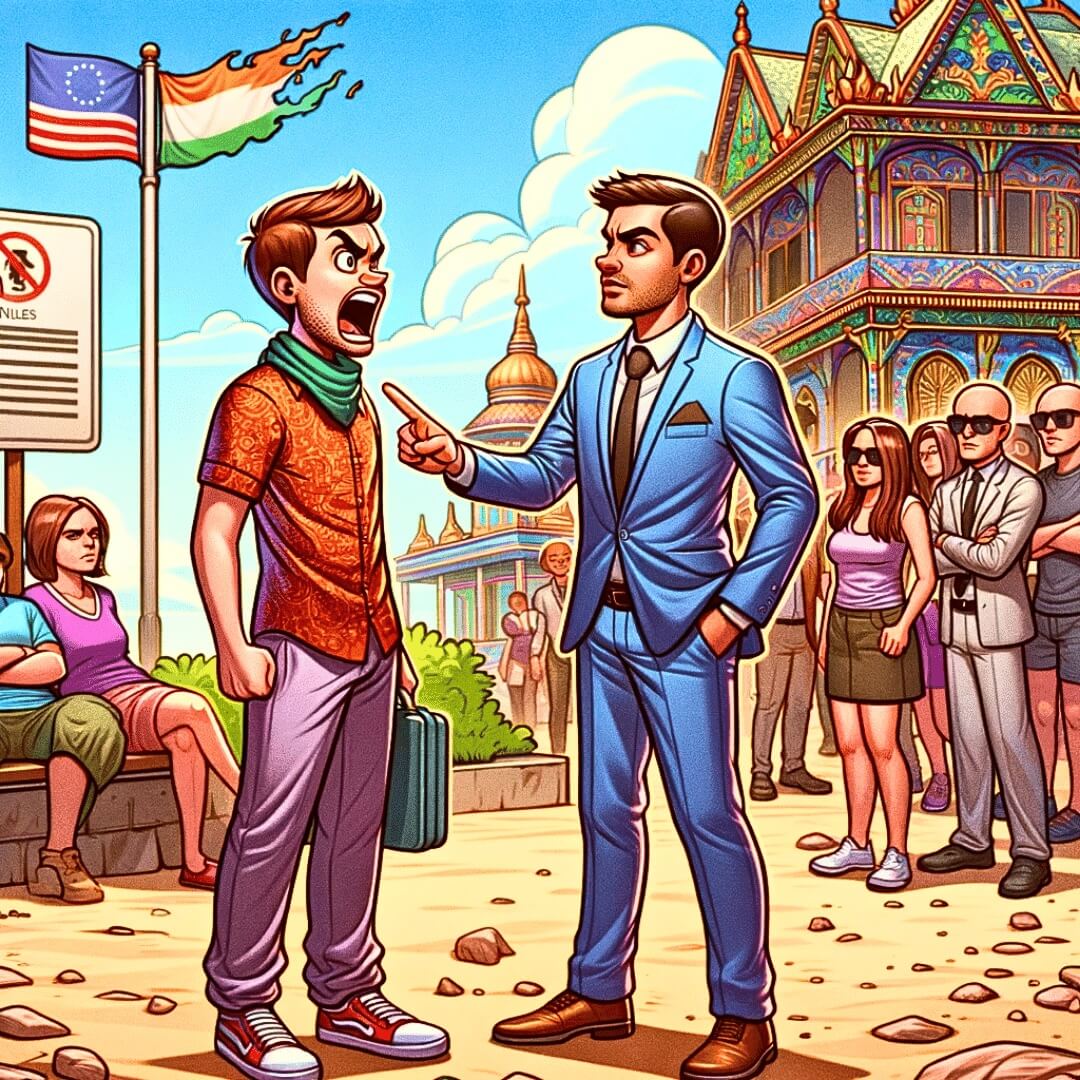
Handling Inappropriate Reactions is a crucial skill for a tour guide.
- Striking a balance between adaptation and consistent conduct is crucial.
- The guide can modify aspects of the tour while ensuring the core experience aligns with their professional standards.

Recommendations
- Assess the situation during the initial stages of the tour to understand the tourist's psycho type.
Gauge the level of adaptability required while considering the tour's objectives.
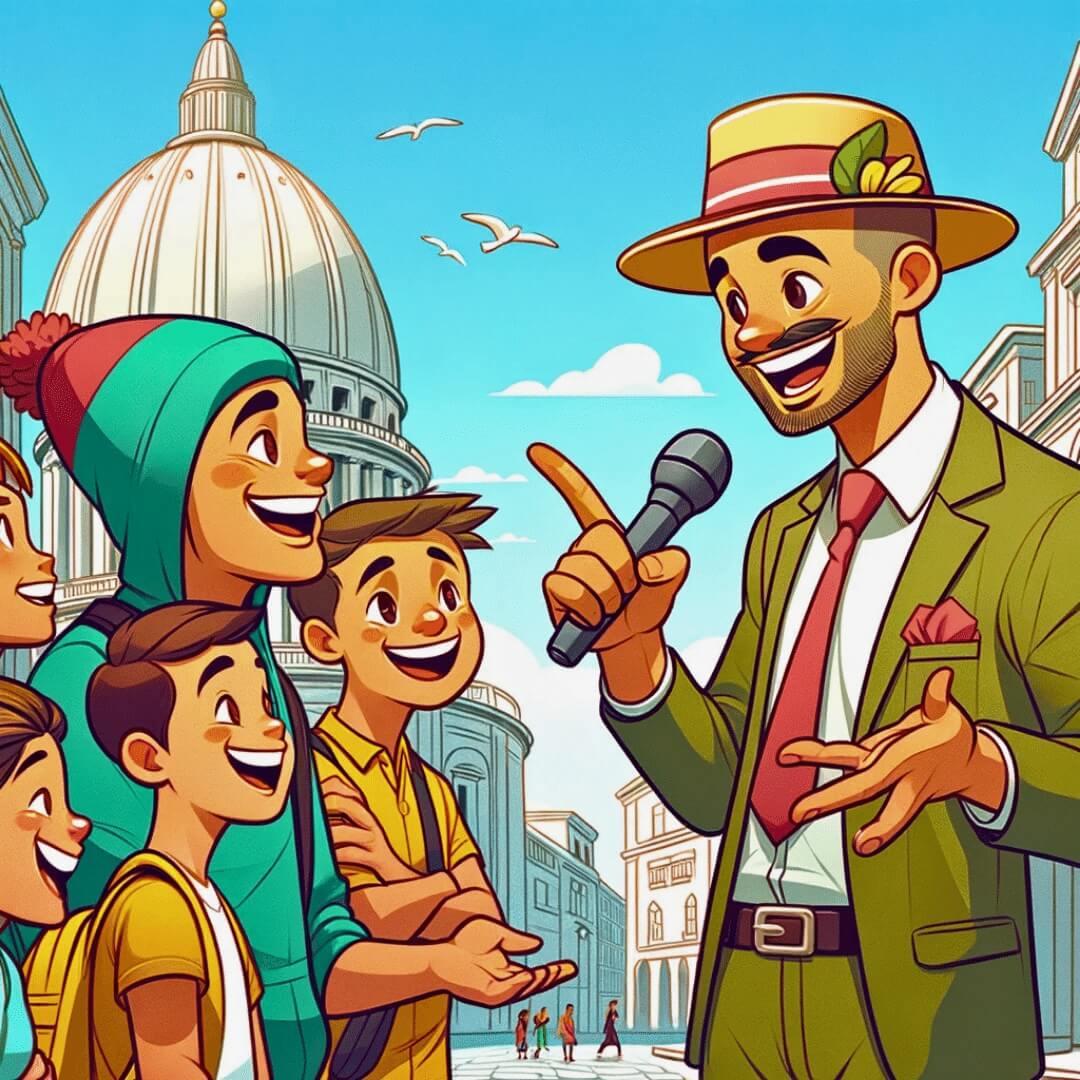
- Maintain open communication with the tourists throughout the tour.
- Address concerns, seek Feedback, and clarify expectations to ensure a positive experience.

A tour guide must maintain open communication with the tourists throughout the tour.
- Develop strategies for handling situations where inappropriate reactions may arise.
- Prioritize safety, professionalism, and the overall well-being of the tourist.
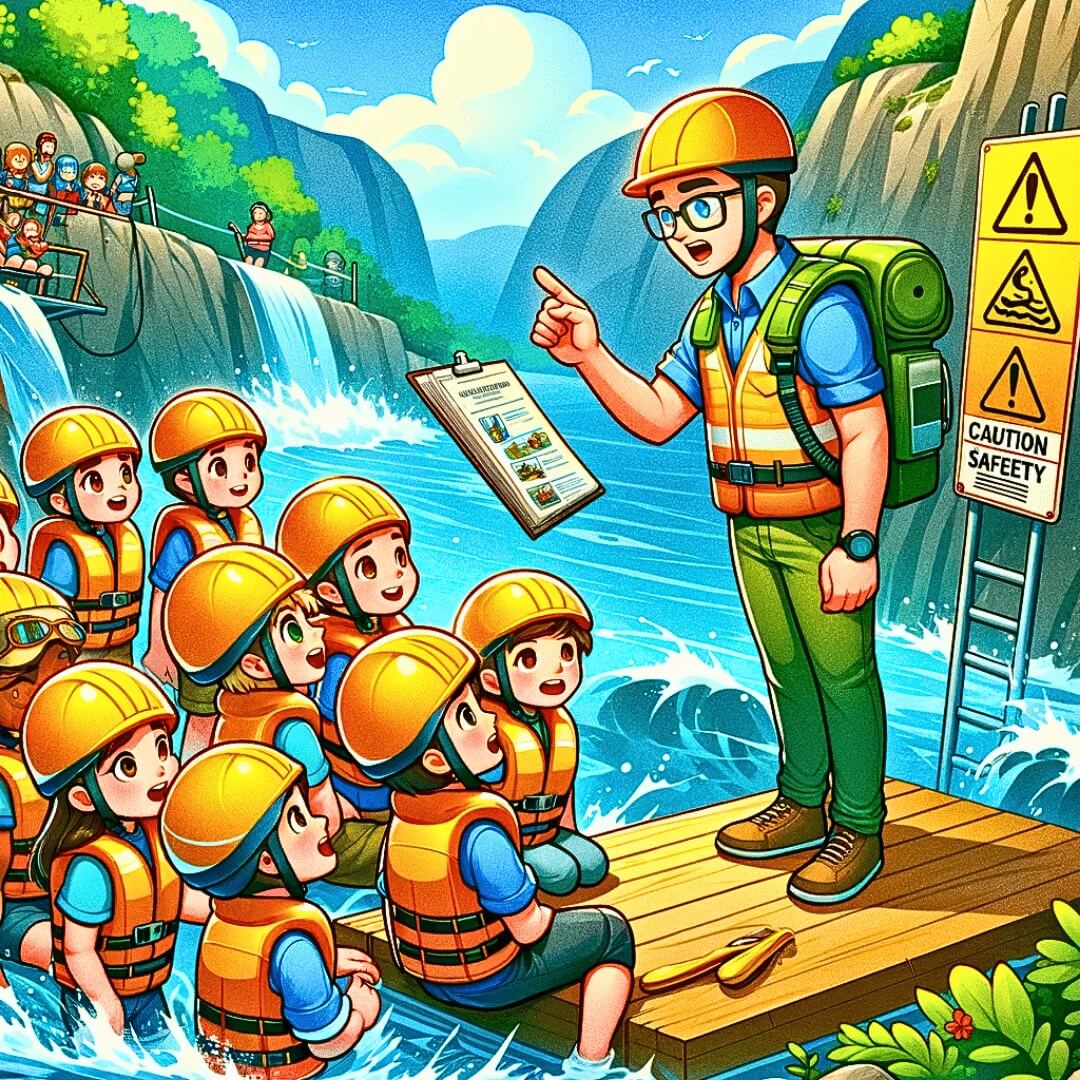
Prioritize safety for the tourists throughout the tour.
A skilled tour guide should balance adapting to the psycho type of the tourist and maintaining consistent professional conduct. The ability to navigate these dynamics ensures a positive and enriching experience for tourists while upholding the guide's expertise and integrity.
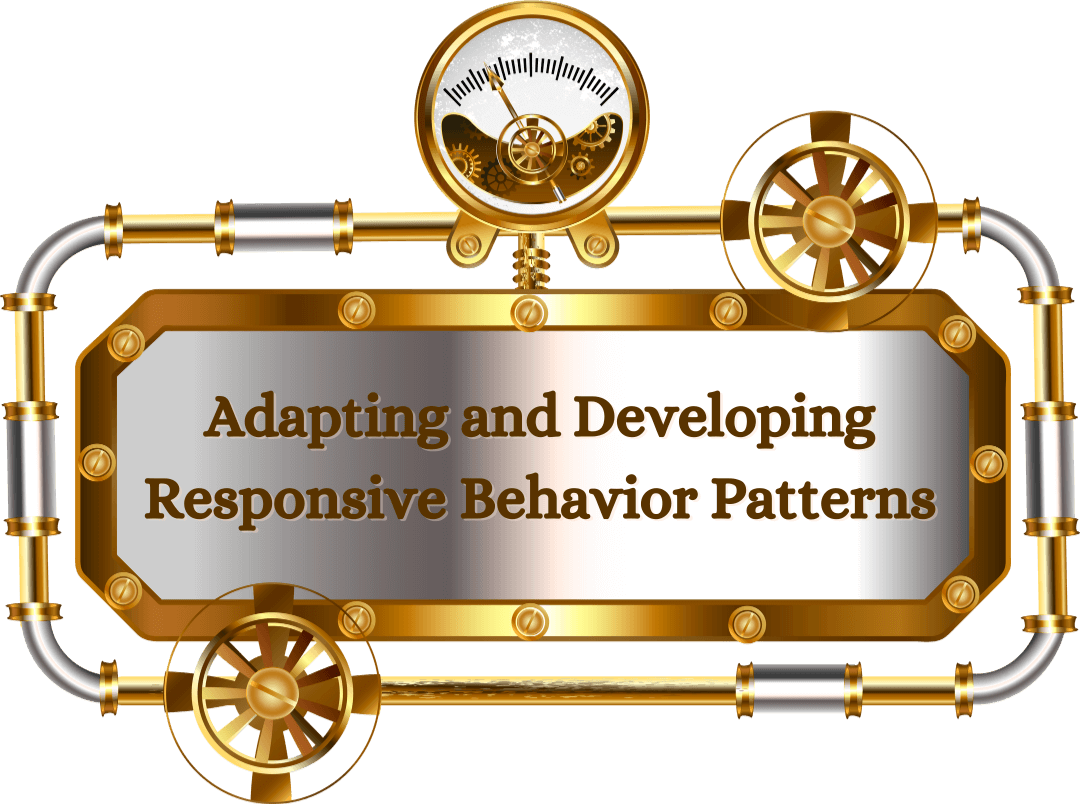
Adapting and Developing Responsive Behavior Patterns
- Be adaptable to changing preferences and modify the itinerary accordingly.
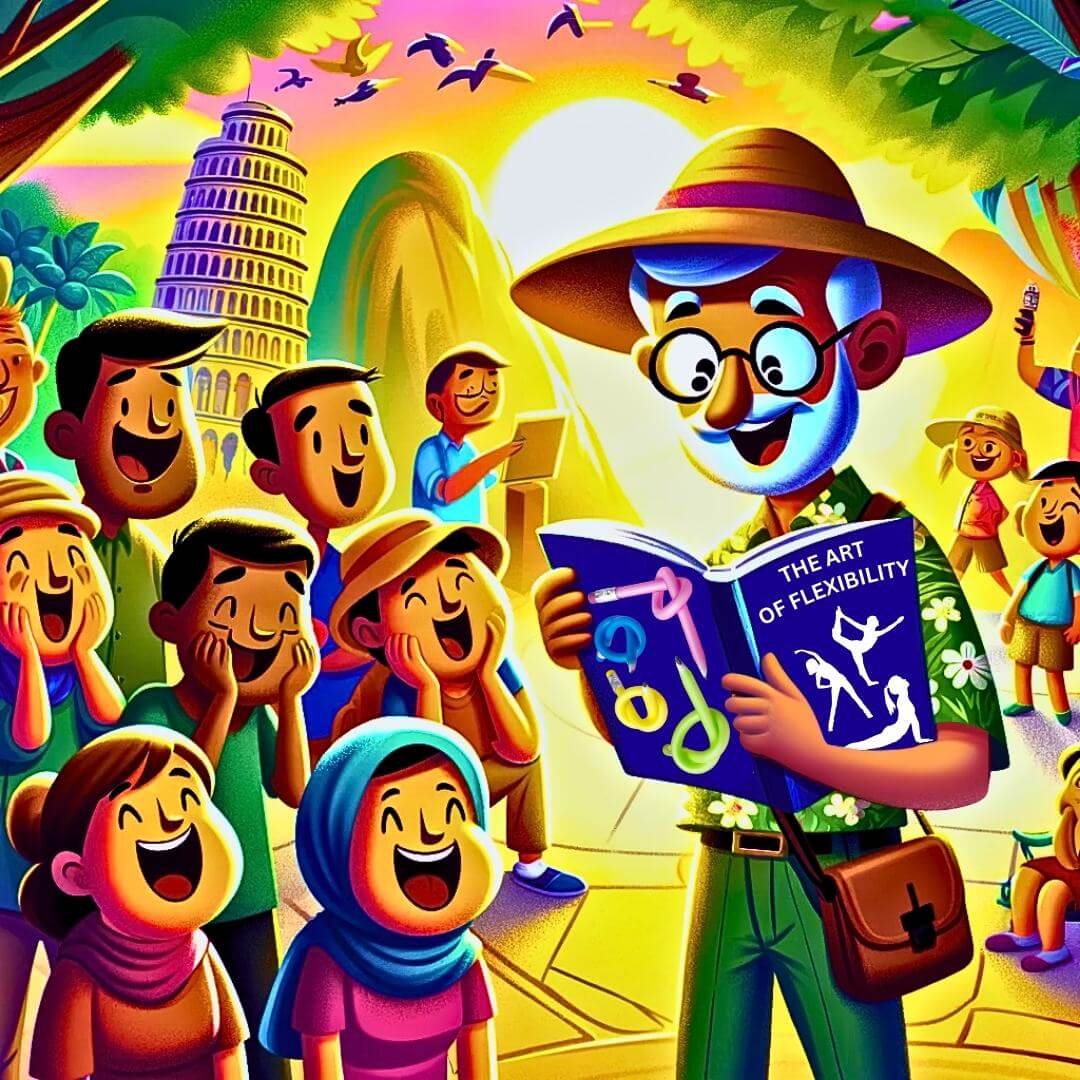
The Art of Flexibility.
Tailor the tour by incorporating personalized touches based on the identified psycho type.
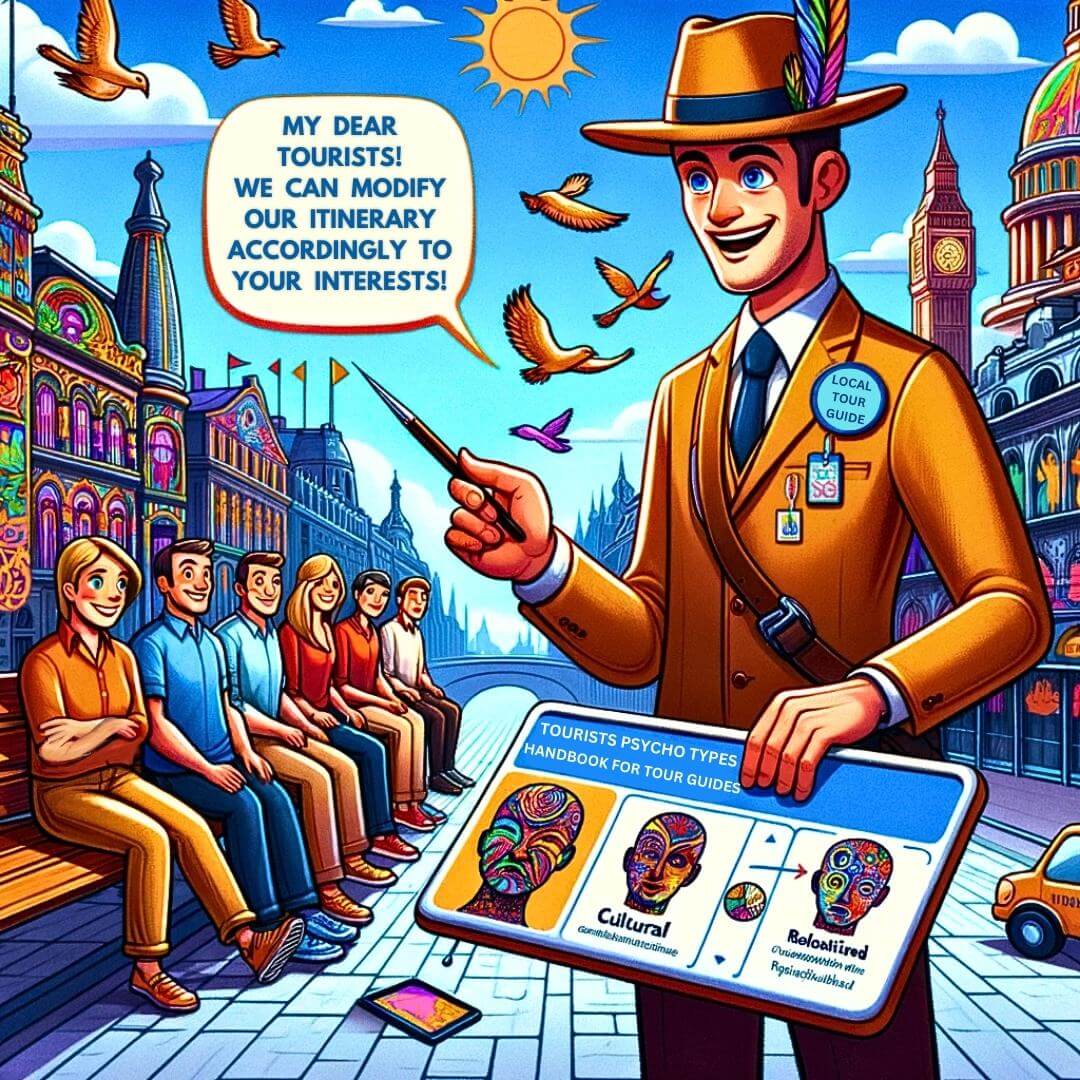
Tune in to the emotional needs of the tourist, adjusting your approach to ensure a comfortable experience.

Respect diverse cultural backgrounds and adapt your communication and activities accordingly.
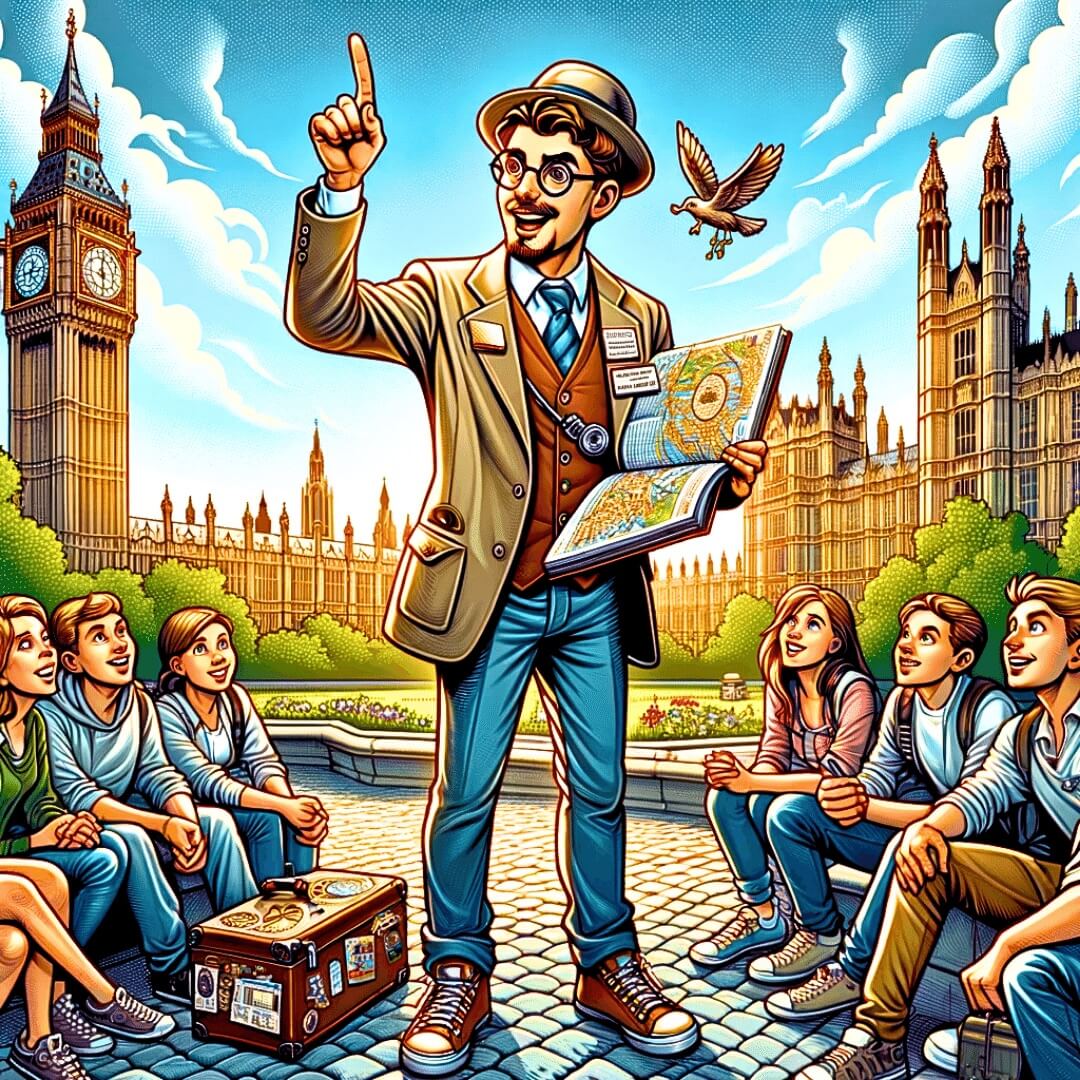
- Encourage open communication to receive Feedback, ensuring continuous improvement in adapting to different psycho types.

Get a Feedback Loop!
In the diverse landscape of tourism, understanding and adapting to the psycho types of tourists is an invaluable skill for any private tour guide. By mastering the art of identifying, interpreting, and responding to different psycho types, tour guides can elevate the travel experience, creating memories that resonate deeply with each individual traveler.
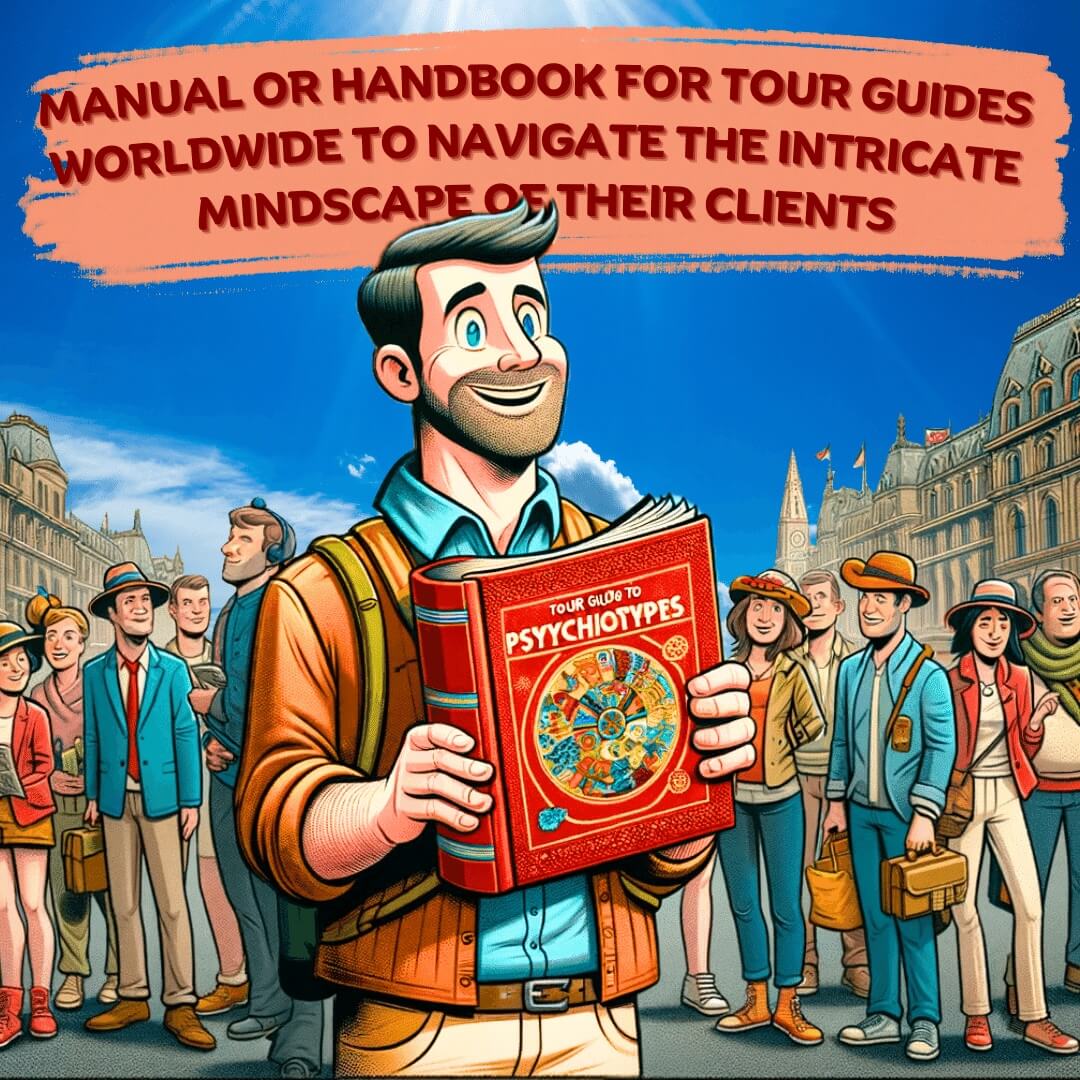
Through this guide, we hope to empower tour guides worldwide to navigate the intricate mindscape of their clients.
Through this guide, we hope to empower tour guides worldwide to navigate the intricate mindscape of their clients, ensuring unforgettable and tailored excursions for every psycho type.
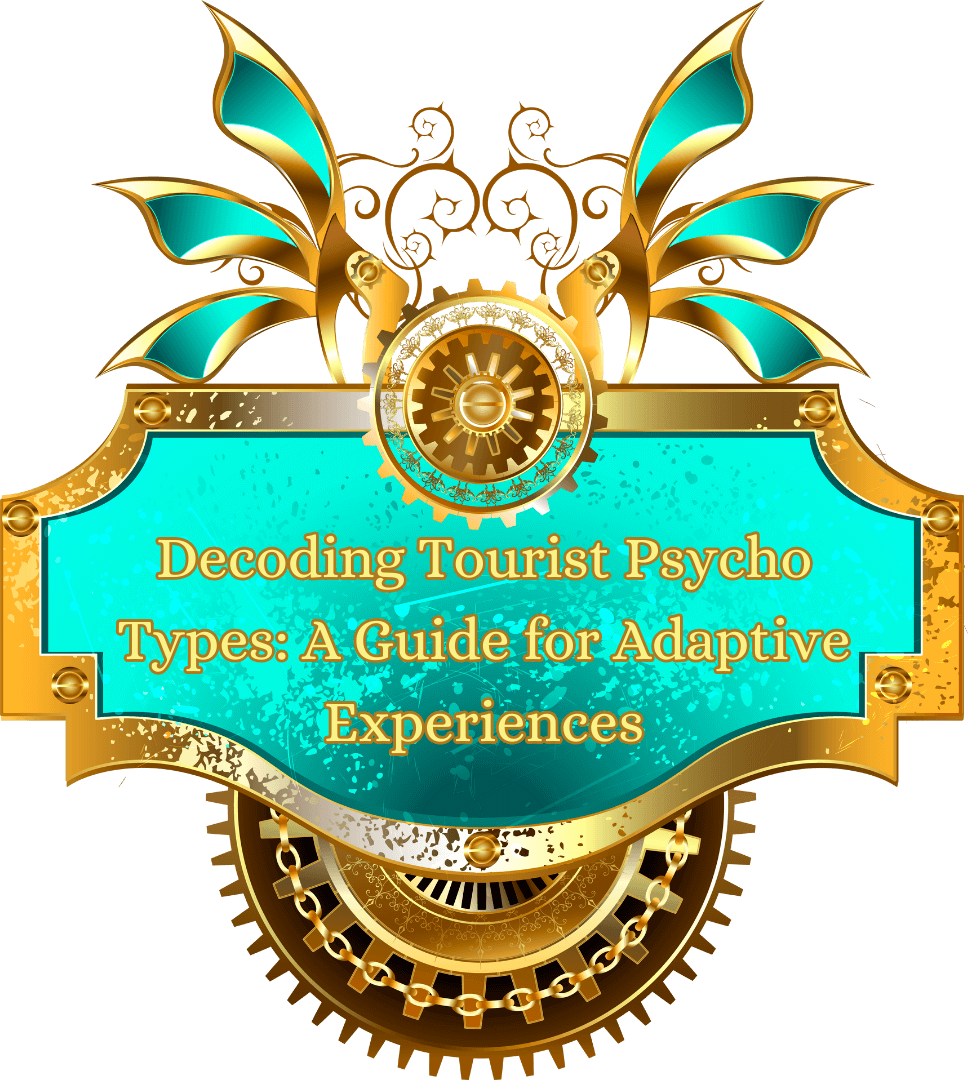
Decoding Tourist psycho types: A Guide for Adaptive Experiences
In our exploration of "Navigating the Mindscape: Understanding and Adapting to Tourists' psycho types," we delved into the intricate relationship between tour guides and travelers, recognizing that each tourist brings unique preferences and expectations to their journey. This article is a comprehensive guide for tour guides seeking to decode and adapt to the diverse psycho types that shape the landscape of modern tourism.
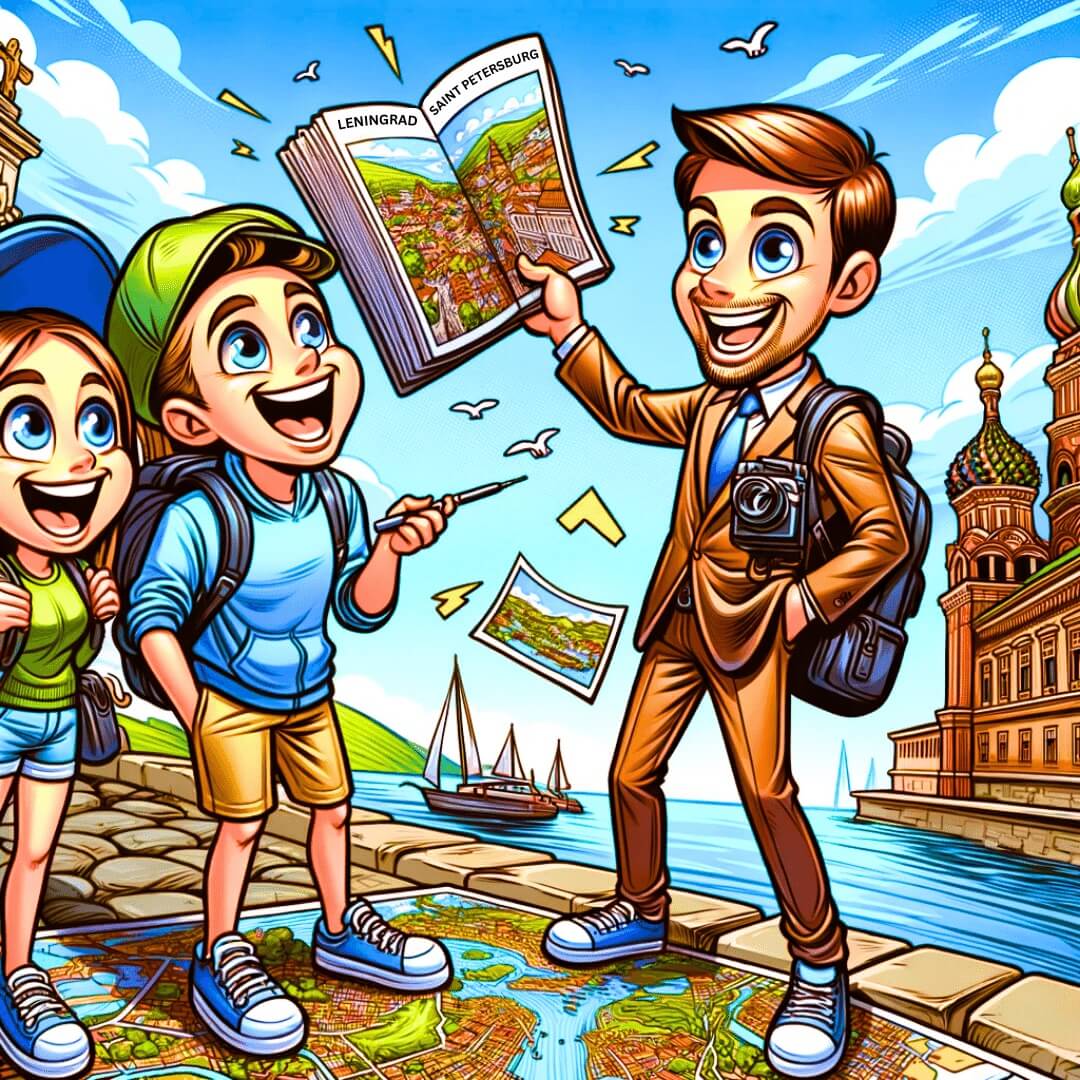
Try to avoid Intricating relationships between tour guides and travelers.
The journey begins with an in-depth exploration of psycho types, uncovering the traits and preferences of archetypes such as the Culture Connoisseur, Adventure Aficionado, Relaxation Seeker, and Information Enthusiast. Understanding these psycho types is the foundation for crafting personalized and enriching travel experiences.
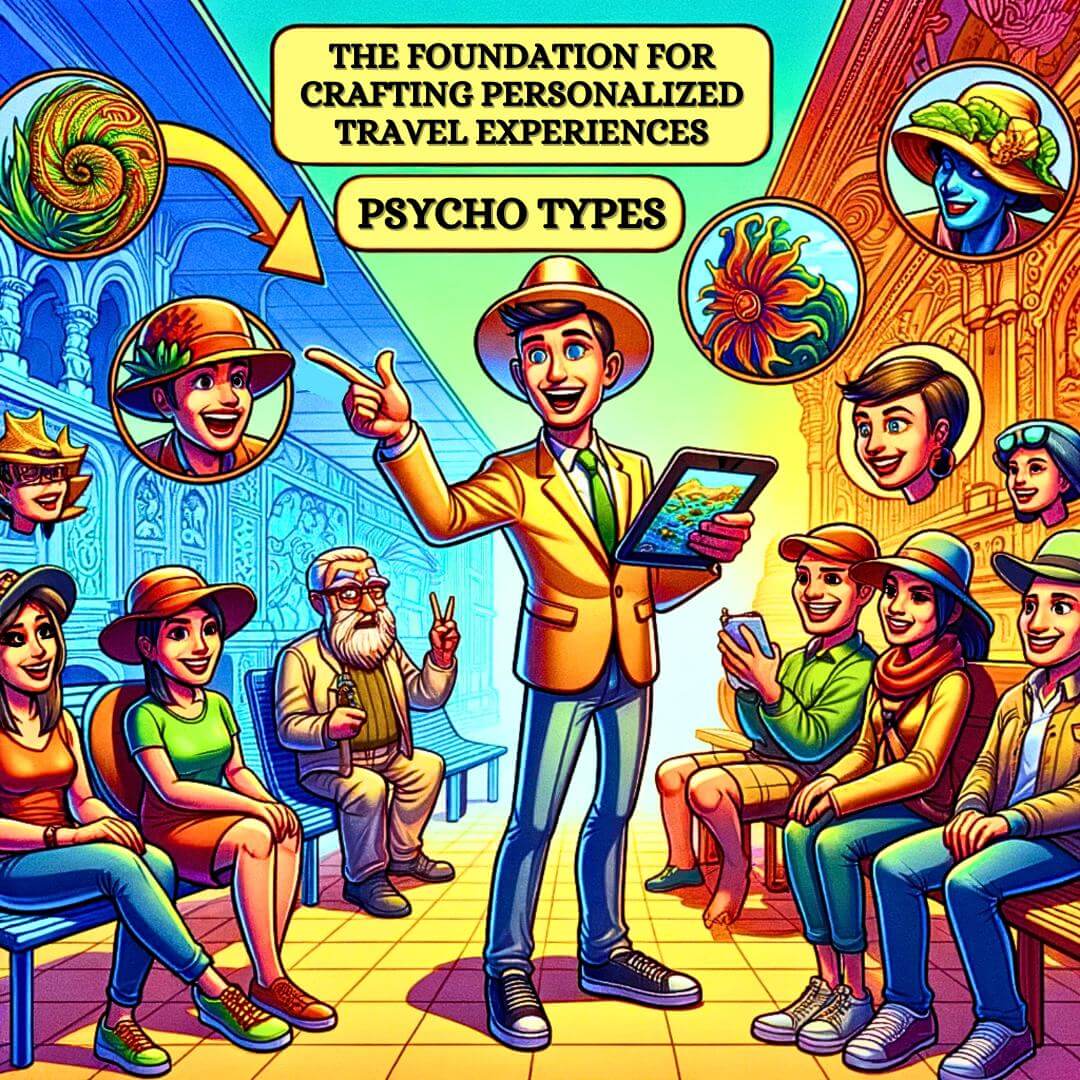
Now, you have a foundation for crafting personalized and enriching travel experiences!
Our guide then navigates through the art of deciphering psycho types during initial correspondence. Tour guides are equipped with perceptive techniques, such as analyzing communication styles, utilizing questionnaires, interpreting social media insights, practicing active listening, and identifying cultural sensitivity cues. This stage is crucial in laying the groundwork for a tailored and engaging tour.
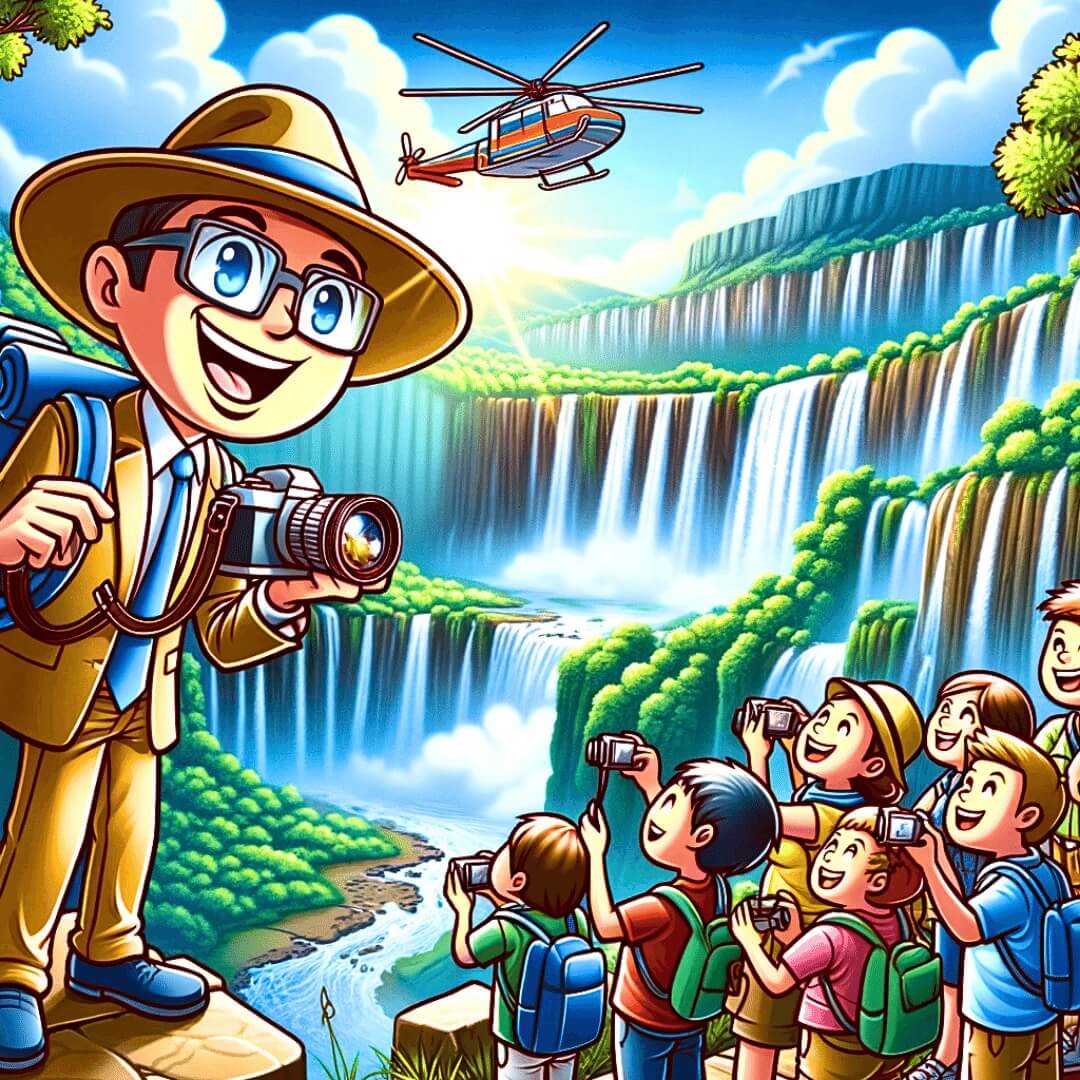
A tour guide can create memories that transcend the ordinary!
The article concludes by providing practical strategies for adapting to the psycho types of tourists during excursions. Tour guides are encouraged to maintain flexibility, foster cultural connections, tailor itineraries, and develop responsive behaviors. The goal is to enhance the overall travel experience, ensuring that each journey is a unique exploration that resonates with the individual psycho type of the tourist.
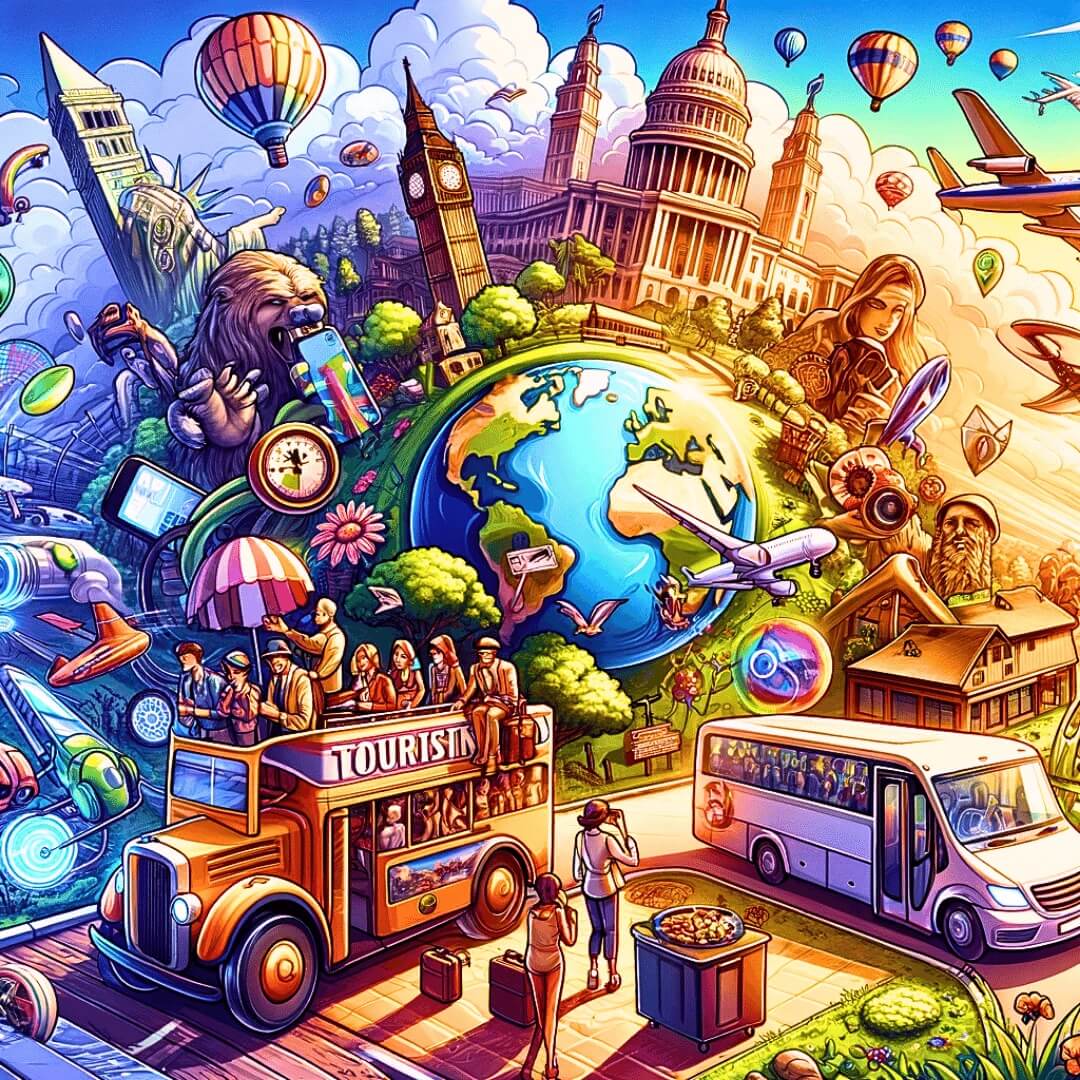
The tourism landscape continues to evolve.
As the tourism landscape continues to evolve, the ability to understand and adapt to diverse psycho types emerges as a hallmark of exceptional tour guiding. By mastering the art of identifying, interpreting, and responding to these psycho types, tour guides can elevate the travel experience, creating memories that transcend the ordinary. Join us on this enlightening journey through the mindscape of tourists and discover the keys to unlocking personalized and enriching excursions.
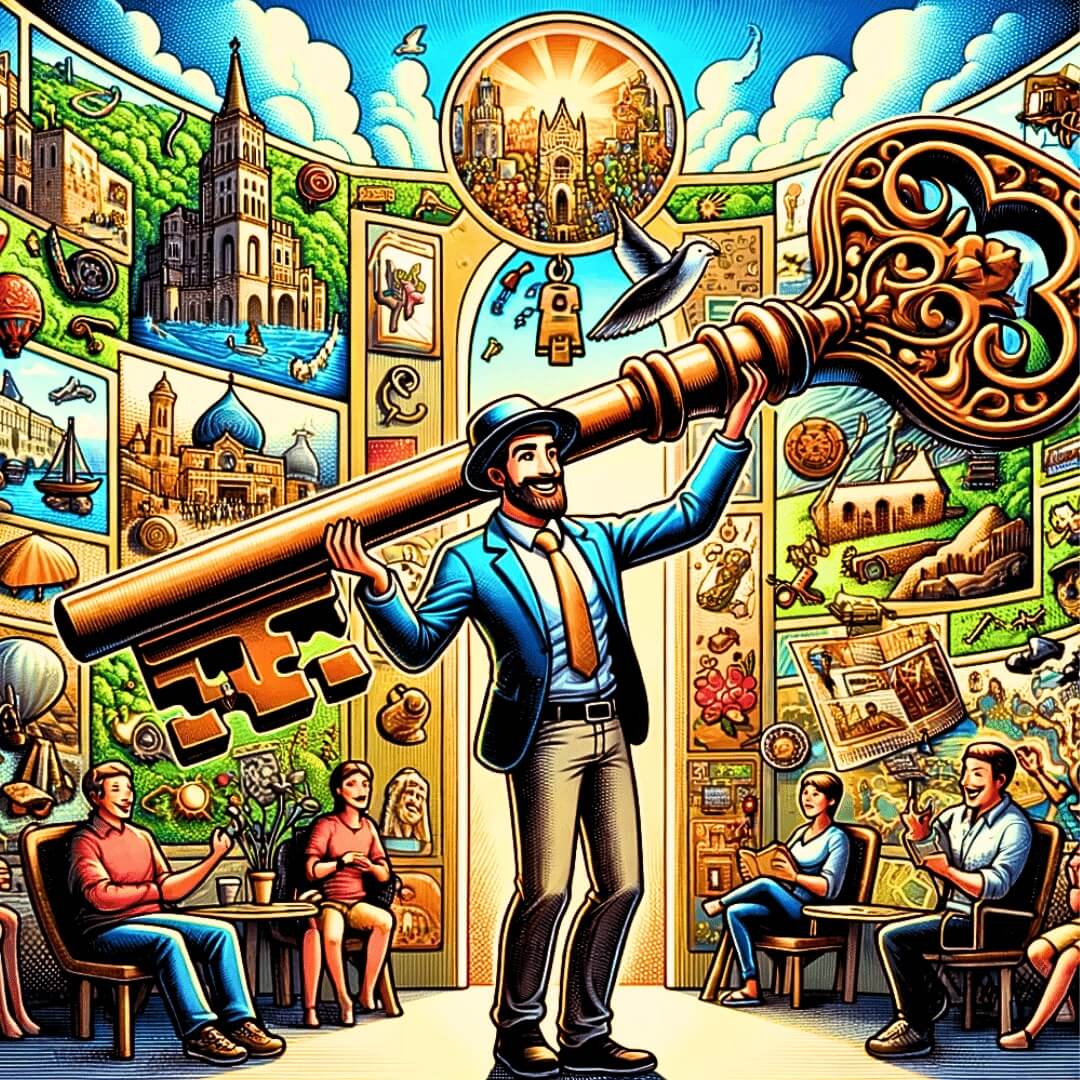
The key to unlocking personalized and enriching excursions is in your hands!
Read our previous article - Riding the Rails: A Symphony of Scenery in the World's Top Train Journeys
Read our next article - Rapa Nui Revealed: Journey into the Heart of the Pacific

New GENERIC REQUEST
Please add some text to the message. The tour guide will answer you in a private message
- Already have an account? Log in
- Don’t you have an account? Sign up
The Trip Doctor
Travel Intelligently

Travel destination types and your traveler personality
As a traveler, you have a huge number of options (barring budget or time constraints) in terms of the places you could travel. Learning about different destination types can help you decide where and when you want to travel. How and why a tourism destination develops over time has important implications for the type of experience you’ll get there, the type of traveler who will find it appealing, and the potential impacts that travelers could have on the community. Knowing your traveler type will help your understanding of this post – Head on over to take the Traveler Personality Quiz before you read on!
One of the best ways to understand how destinations develop over time is through a model called the Tourism Area Life Cycle (TALC), that was developed by a guy named Richard Butler in 1980. The TALC essentially says that destinations develop on a curve, and as the number of visitors increases over time, local control over development slowly regresses. This model runs in unison with another old-school tourism model called Doxey’s Irridex . Doxey’s Irridex says that as the number of tourists visiting a destination increases over time, residents of that community react increasingly negatively as a result of impacts in the community.
Exploration stage
Tourism destinations at the beginning of their life cycle usually have little in the way of tourism infrastructure (things like airports) or superstructure (things like hotels), but usually have some unique natural or cultural attraction that people may find interesting and want to see. At this stage in the destination life cycle, usually the only travelers to a destination will be trendsetters , as it is likely difficult to get to the destination, stay in the destination, and communicate with those living in the destination. Impacts on the community are usually positive at this point, as the little money that travelers spend stays in the community, venturers socioculturally sensitive and inquisitive – meaning their interactions with locals in the community are usually positive, and a small number of tourist visits doesn’t usually lead to environmental degradation. An example of a destination in the exploration stage would be something like a small village in rural Laos, like Vieng Phou Kha .
Involvement stage
Once a few travelers visit a destination, people living in the community begin to realize that there is money to be made. At this point in the destination life cycle, locals often begin to start tourism related businesses, opening guesthouses, restaurants, tour guiding services, and even some attractions. This means that the destination begins to be a little bit more comfortable, so explorers might be willing to travel to the destination as they hear about it from trendsetters who return from their travels. At this point, positive economic impacts tend to grow a little bit, sociocultural impacts stay relatively the same, and both positive and negative environmental impacts tend to increase slightly. The environment is impacted positively as the community realizes that any natural resource based attractions need to be preserved in order to keep tourists coming. The environment is impacted negatively as tourism development begins to tax resources like the water supply, and new construction leads to resource use and runoff. An example of a destination in the involvement phase would be any of the Maasai communities around Maasai Mara National Reserve in Kenya.
Development/Consolidation
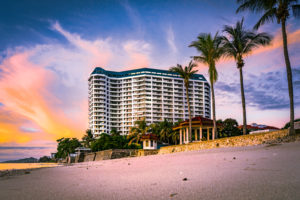
Stagnation, Rejuvenation, and decline
As the destination reaches full development (nearing carrying capacity), eventually stagnation will occur. At this point, relaxers travelers join the party, as the destination has likely gained a reputation and has all of the comforts of home. Once the destination reaches this point, it can either go into decline or become rejuvenated. Which of those occurs depends on the destination. If the destination innovates and adjusts its products and services to the ever changing tourism market, it will rejuvenate. If the destination does not adjust, it will go into a slow decline and lose market share to other destinations. An example of a destination that stagnated and then rejuvenated is Las Vegas, Nevada , which is constantly rebranding itself. An example of a destination that stagnated and has gone into decline is Myrtle Beach, South Carolina .
The bottom line
First, I want to point out that just because a destination has reached the stagnation stage does NOT mean that you cannot find locally owned and operated tourism businesses. While not all destinations follow these development steps exactly, this process should give you some idea of how it often happens. When you are thinking about your travel destination, you can consider where it may be in terms of its destination life cycle, why or why not it might be appealing to you, and the potential impacts you may have traveling to the destination.
If you’re interested in exploring tourism destinations that might be appealing to you, I recommend heading over to my travel planning strategy guide – I’ve provided a lot of great resources there for you to explore new and exciting destinations.
Please wait while your request is being verified...
What is the “Personality” of a tourism destination?
- Original Research
- Open access
- Published: 10 December 2018
- Volume 21 , pages 105–133, ( 2019 )
Cite this article
You have full access to this open access article
- Mete Sertkan ORCID: orcid.org/0000-0003-0984-5221 1 ,
- Julia Neidhardt ORCID: orcid.org/0000-0001-7184-1841 1 &
- Hannes Werthner 1
11k Accesses
16 Citations
Explore all metrics
Researching online before booking a vacation can be seen as a common habit of customers nowadays. In this context, Recommender Systems (RSs) are aiming to support the customers to find the right products, but they face domain specific challenges since tourism products are typically very complex and related to emotional experiences. To counteract these challenges, comprehensive user models for capturing the preferences and personality of travellers have been introduced. One of these models is the so-called Seven-Factor Model. This paper introduces an automated way for determining the Seven-Factor representation of tourism destinations to enable a matchmaking for RSs. In particular, exploratory data analysis, cluster analysis, and regression analysis are conducted not only to find a mapping of destinations onto the Seven-Factors, but also to foster a better understanding of the relationship between destination attributes and the Seven-Factors. This work provides clear evidence that a tourism destination’s Seven-Factor representation can be determined by taking its attributes into account. This is an extended version of a conference paper entitled “Mapping of tourism destinations to travel behavioural patterns” previously published in the proceedings of Information and Communication Technologies in Tourism 2018 Conference (ENTER 2018) held in Jönköping, Sweden, January 24–26, 2018.
Similar content being viewed by others
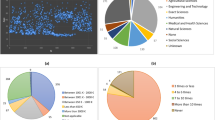
Group recommender systems for tourism: how does personality predict preferences for attractions, travel motivations, preferences and concerns?
Patrícia Alves, Helena Martins, … Goreti Marreiros

Mapping of Tourism Destinations to Travel Behavioural Patterns

The Effects of Destination Personality on Tourist Satisfaction, Identification, and Behaviour
Avoid common mistakes on your manuscript.
1 Introduction
The relationship between Information and Communication Technologies (ICT) and tourism can be described as a symbiosis (Werthner and Klein 1999 ). Thus, the tourism landscape has been strongly affected and shaped by the rapid development of ICT during the last decades especially with the emergence of the World Wide Web (WWW). Nowadays, consumers have ubiquitous access to vast amounts of information and additionally, they are highly connected, allowing them to exchange experiences and more information among each other. However, increasing cognitive costs to process the amount and variety of information could lead to the problem of information overload. On the other side, the Web also allows a massive “informatization” of the whole tourism value chain, resulting in many novel value-generating strategies, to satisfy new consumer needs (Werthner and Ricci 2004 ).
According to a recent study (MediaCT 2014 ) people rely on online sources to get inspired where to go or how to travel. The study also shows that 65% of the leisure travellers start researching online before a travel decision. Particularly in this early phase of decision making a considerable amount of people has difficulties to explicitly express their preferences and needs (Zins 2007 ). Recommender Systems (RSs) aim to facilitate this decision-making. Ricci et al. ( 2015 ) define RSs as “software tools and techniques providing users with suggestions for items a user may wish to utilize” and thus addressing the problem of information overload. Particularly, profiling and personalization techniques might help in such cases, where preferences and needs are unknown or hard to express. Especially in tourism this is a big challenge, since tourism products are considered as very complex (i.e., they typically combine accommodation, transportation, activities, food, etc.), are mostly intangible and are highly associated with emotional experiences (Werthner and Ricci 2004 ). Considering all this, it is clear why sophisticated user models, which enhance understanding and processing of user preferences and needs, and tailored techniques, which reduce the cognitive load people are experiencing, have been and still are challenging issues of research in e-Tourism (Werthner et al. 2015 ).
Travel and destination decisions are usually not only based upon rational criteria but rather on implicitly given user preferences. It has been shown that a legitimate way to counteract this issue are personality based approaches, where preferences and personality are combined and used to build a comprehensive user model, which then can be exploited to recommend an item (Neidhardt and Werthner 2017 ). In the context of RSs personality can be seen as a user profile, which does not change with context (e.g., time, location, weather, etc.) and through different domains (e.g., movies, book, etc.) (Tkalcic and Chen 2015 ). A comprehensive and widely used personality model with respect to RSs is the Five-Factor Model, also known as the “Big Five” personality traits (Goldberg 1990 ).
Neidhardt et al. ( 2014 , 2015 ) introduced a picture based approach to elicit the preferences of a user and a Seven-Factor Model to capture the respective user’s profile within a travel recommender system. The Seven-Factor Model is the result of a factor analysis combining the “Big Five” personality traits (Goldberg 1990 ), which can be associated with the long-term behaviour of users, and 17 tourist roles proposed by Gibson and Yiannakis ( 2002 ), representing short-term preferences. These factors form the basis of a seven-dimensional vector space and are referring to travel behavioural patterns summarized as Sun and Chill-Out , Knowledge and Travel , Independence and History , Culture and Indulgence , Social and Sport , Action and Fun , and Nature and Recreation . RSs often tend to suffer from the so-called cold start problem (Burke 2007 ): RSs require historical user data or knowledge about a user’s preferences and needs in order to propose appropriate items to that user. However, for a new user this information is typically missing, which is referred to as “cold start”. In such cases preference elicitation can be accomplished explicitly, e.g., by asking the user a number of questions or implicitly, e.g., by observing his or her behaviour. In the picture based approach, the preferences of a user are determined by a simple picture-selection process. Thus, the user just has to select three to seven pictures out of a pre-defined set rather than tediously answering a questionnaire. The resulting user’s profile comprises a score for each of the factors and thus can be seen as a point in the seven-dimensional vector space. In order to provide recommendations to a user, those items have to be determined that are closest to him or to her. Therefore, also the items have to be mapped onto the vector space, i.e., they have to obtain a score for each of the Seven-Factors. In order to build up a reasonable recommendation base more than 10,000 point of interests (POIs) such as activities, events, restaurants, sights etc. were initially mapped manually by experts. Obviously, this approach does not scale. To counter this limitation, Glatzer et al. ( 2018 ) introduced a text-mining-based method, where hotels are allocated to the Seven-Factors.
Following this line of research, the presented work aims to introduce an automated way of determining the Seven-Factor representation of tourism products. However, in contrast to Neidhardt et al. ( 2014 , 2015 ) and Glatzer et al. ( 2018 ), where POIs and hotels are considered as tourism products, the focus will be on tourism destinations. Furthermore, unlike Glatzer et al. ( 2018 ), where hotels are classified to one or more factors of the Seven-Factor Model, this work aims to determine a score for each factor of the Seven-Factor Model. Similarities among tourism destinations will be analysed in order to identify latent conceptually meaningful groups, which will deliver better insights into the (dis)similarities among destinations and which, moreover, can be addressed directly by a RSs. Furthermore, the relationships between the Seven-Factors and attributes of destinations will be examined in order to map the destinations onto the Seven-Factors. This work aims to extend the analysis presented in Sertkan et al. ( 2018 ). In contrast to the previous work, a more sophisticated pre-processing of the provided data set is conducted and the data set is described and explored in more detail. In addition, the cluster analysis is extended to a considerably higher number of destinations. Furthermore, the multiple linear regression model is challenged by two non-linear and conceptually different regression methods. Finally, the outcomes are evaluated and discussed in greater depth.
The rest of the paper is organized as follows. In Sect. 2 the state of the art is presented, focusing on tourist roles, the Seven-Factor Model, and tourism recommender systems. In Sect. 3 , the data set in use is described and explored. In Sect. 4 a cluster analysis aiming to identify meaningful groups is conducted and presented. In Sect. 5 regression analyses based on expert mappings are conducted, compared and evaluated. In Sect. 6 the outcomes of the conducted analyses are jointly discussed, conclusions are drawn and an outline for future work is given.
2 State of the art
This chapter provides a brief overview of related work and the state of the art in the field. First, RSs in the tourism domain are examined and finally the Seven-Factor Model is introduced and discussed in more detail.
2.1 Recommender systems in the tourism domain
Travel and tourism have always been major application domains for Web-related services (Werthner and Klein 1999 ). As the amount of information on the Web started to rise, the call for techniques to cope with information overload began to grow. One answer to that are RSs. From the supplier’s perspective, RSs are aiming to bring the right products to the right customers, in order to increase customer experience, satisfaction, trust, and in turn profit. On the other hand, from a consumer’s point of view, RSs are aiming to provide suggestions in order to support and simplify various decision-making processes. In case of tourism these decisions might be: where to go? How to travel? Where to stay? What to do? and much more. Whereas, an item, i.e., suggestion, can be a destination, a hotel, an activity, a flight etc.
During the last decades, many recommendation techniques evolved including content-based, collaborative-filtering, knowledge-based, demographic, community-based, and hybrid. Most of the listed techniques rely on user rating behaviour and were proposed for products such as movies, music, or books. However, since traveling is costly and time consuming, there are typically less rating data in the tourism domain, which leads to less accurate personalization techniques, compared to other products (Neidhardt et al. 2015 ). Another challenge for RSs in the tourism domain is that tourism products are complex (e.g., a bundle of accommodation, transportation, activities etc.), intangible and highly associated with emotional experiences (Werthner and Klein 1999 ). In order to bundle and recommend the right tourism product RSs are relying on content and knowledge (Neidhardt et al. 2015 ). Also, Burke and Ramezani ( 2011 ) argue that most appropriate recommendation techniques in the matter of tourism are either knowledge based and/or content-based.
This work aims to find an automated way of determining the Seven-Factor representation of tourism destinations to enable a matchmaking with user profiles (i.e., Seven-Factor representations of users). The picture based approach to RSs (Neidhardt et al. 2014 , 2015 ) uses a gamified and user centric way to elicit the Seven-Factors of a user. Preferences and needs of a user are determined via a simple picture selection process. Users are addressed on an emotional, implicit level and do not have to state their preferences explicitly. This simple method, which can be considered as content- and knowledge-based approach, counteracts peoples difficulties in explicitly expressing their preferences and needs and helps to overcome the so-called cold-start problem.
According to Garcia et al. ( 2011 ) tourism RSs can be distinguished into two types: one focusing on destination selection the other on activities that can be performed at a certain destination. The presented work can be considered as part of the first group since it considers tourism destinations as recommendation items. In contrast to Neidhardt et al. ( 2014 , 2015 ), where the focus lies on Point of Interests (POIs), e.g., activities, events, restaurants, sights. Much research has already been conducted targeting destination recommender systems (Fesenmaier et al. 2006 ; Borràs et al. 2014 ), but they are mainly focusing on distinct regions or POIs in a destination. There are few, moreover, that focus on personality traits and motifs of a user, e.g., Braunhofer et al. ( 2014 ).
2.2 Seven-factor model
In the last decades, much research has been conducted in order to identify and categorize tourist roles, describing the relation between a person’s travel behaviour and his or her preferences, interest, and needs. In this context, Gibson and Yiannakis ( 2002 ) introduced a well-established classification framework, distinguishing 17 different tourist roles to capture short-term preferences of tourists, i.e., preferences, which might change depending on the context (e.g., seasonality like summer or winter, special occasions, single or group, etc.). Gretzel et al. ( 2006 ) demonstrated that tourist roles can be used in order to recommend touristic activities and, in turn, destinations. It has also been shown that tourist roles can be related to personality traits. Delić et al. ( 2016 ) provide significant evidence that there are relations between the well-established “Big-Five” personality traits (Goldberg 1990 ) and the 17 tourist roles (Gibson and Yiannakis 2002 ). Matthews et al. ( 2003 ) argue that “large-scale reviews and large single studies offer overwhelming evidence for the stability of personality traits over many years”. Thus, they can facilitate the prediction of the long-term behaviour of a person (Woszczynski et al. 2002 ).
Both the “Big Five” personality traits and the 17 tourist roles are well-established frameworks and have been subject and bases to many empirical and behavioural studies. Thus, there are existing standardized methods to assess and measure both of them. Neidhardt et al. ( 2014 , 2015 ) conducted an online and offline survey, with 30 questions addressing the tourist roles and 20 questions addressing the personality traits. About 1000 participants completed the questionnaires. Upon the collected data, they conducted a factor analysis in order to reduce the 22 dimensions (the “Big Five” personality traits plus 17 tourist roles) and summarize them in fewer dimensions. The factor analysis resulted in seven independent factors, which are able to capture different travel behavioural patterns. They are summarized in the following:
Sun and Chill-Out a neurotic sun lover, who likes warm weather and sun bathing and does not like cold, rainy or crowded places;
Knowledge and Travel an open minded, educational and well-organized mass tourist, who likes travelling in groups and gaining knowledge, rather than being lazy;
Independence and History an independent mass tourist, who is searching for the meaning of life, is interested in history and tradition, and likes to travel independently, rather than organized tours and travels;
Culture and Indulgence an extroverted, culture and history loving high-class tourist, who is also a connoisseur of good food and wine;
Social and Sports an open minded sportive traveller, who loves to socialize with locals and does not like areas of intense tourism;
Action and Fun a jet setting thrill seeker, who loves action, party, and exclusiveness and avoids quiet and peaceful places;
Nature and Recreation a nature and silence lover, who wants to escape from everyday life and avoids crowded places and large cities.
These factors are easier to process cognitively as well as computationally compared to the original 22 dimensions. However, dimensionality reduction not only decreased computational and cognitive cost, but also lead to a better understanding and more insights. Neidhardt and Werthner ( 2017 ) showed that based on different demographic characteristics different user groups can be well distinguished within this model.
Beirman ( 2003 ) refer to a tourism destination as “a country, state, region, city or town which is marketed or markets itself as a place for tourists to visit”. In this work destinations are defined in a similar way, except that the range is wider, i.e., from a hamlet with a population smaller than 100 to a metropolis with a population larger than one million. The data is provided as a SQL-dump by a German e-Tourism company and consists of more than 30,000 destinations all around the world.
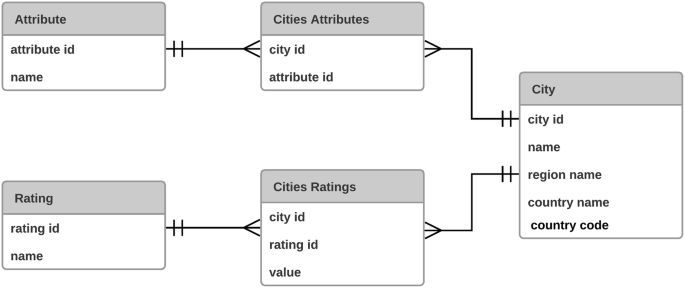
Entity-relationship model of the provided destinations SQL-dump
Figure 1 shows the structure of the tables in the SQL-dump and the relations among them. Destinations are described through 22 geographical attributes and 27 motivational ratings.
Motivational ratings lie in the interval [0,1] and describe the degree of suitability for a particular motif. The following 27 motifs are listed: nightlife, wellness, shopping, nature and landscape, image and flair, culture, sightseeing, entertainment, mobility, price level, accommodations, gastronomy, beach and swimming, golf, scuba diving, kite and windsurfing, hiking, cycling, horseback riding, winter sports, sports, family, peacefulness, surfing, sailing, gays, mountain biking . The motivational ratings are determined by the e-Tourism company by considering factors such as infrastructure, climate, user opinions, number of services, image, and marketing. However, not all details are disclosed and thus it is not known how exactly the scores are determined.
Geographical attributes are given in binary format and describe the presence or absence of a particular geographical attribute. The following 22 attributes are listed: sea, mountain, lake, island, sandy beach, metropolis, forest, river, desert, old town, pebble beach, sand and pebble beach, hill, swamp, volcano, fjord, flat decaying sandy beach, beach promenade, wine-growing, heath, health resort, winter sports resort .
All possible attributes and ratings are persisted in the tables Attribute and Rating . As previously mentioned, there are over 30K tourism destinations. They are persisted in the table City . This table contains an identifier for each destination and textual descriptions to capture destination name, region name, country name, and country code in ISO 3166-1 alpha-2 format, for example AT for Austria. In the table Cities Attributes tuples of geographical attributes and tourism destinations are recorded, e.g. (Vienna, old town ). Similarly, the table Cities Ratings persists the motivational ratings of a tourism destination with corresponding (rating) value, e.g. (Vienna, culture , 0.99). A major drawback of such a structure is that a tourism destination does not necessarily have an entry for each rating or attribute. Thus, in many cases it is not clear if a destination does in fact not have such attribute or rating, or the data is missing. This ambiguity leads to many “missing values” and in turn to a sparse data set.
In Sertkan et al. ( 2018 ) missing values were treated naively by replacing them by zero. In contrast, the presented work uses a more sophisticated strategy to treat missing values. First, destination attributes, which are denoted by the data provider as experimental, are deleted. Afterwards, destination attributes with similar meaning are combined, e.g. sandy beach , flat decaying sandy beach , pebble beach , sand and pebble beach are combined to the attribute beach . Then, destinations with many missing values are discarded. Since there are seven destination features (i.e., price level , gastronomy , sports , accommodations , shopping , nightlife , and entertainment ) which are mostly non-missing (i.e., in about 90% of the cases), only destinations with minimum ten non-missing features are kept in the data set in order to have at least three more aspects of a tourism destination. This leads to a more concise data set with 16,950 destinations and 38 attributes (i.e., 26 motivational ratings and 12 geographical attributes). Finally, a model-based procedure is defined (i.e., naive imputation for geographical attributes and SOFT-IMPUTE (Mazumder et al. 2010 ) for motivational ratings) in order to intelligently replace the remaining missing values (i.e., 62% of the overall cells).
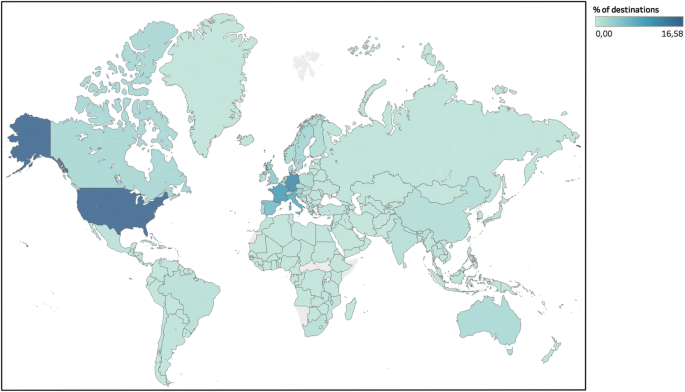
Distribution of tourism destinations over countries
Almost all countries are represented in the database, but the majority (65%) of destinations are located in the USA, Germany, France, Italy, Spain, Great Britain, Austria, Greece, Switzerland, and Sweden. This can also be observed in Fig. 2 , where the distribution of tourism destinations over countries is presented as a heat map.
Summary statistics of the distributions of the different motivational ratings for the tourism destinations are listed in Table 1 . The motivational ratings nature and landscape, peacefulness, hiking, cycling, and mountain biking have similar and high average values of 0.61–0.71. Those ratings are not only similar, but they can also be considered as nature and recreation related. On the other end, some specific water sports related ratings (i.e., sailing, diving, kite- and windsurfing, and surfing ) have low average values (0.21–0.29).
In Table 2 the relative frequencies of the different geographical attributes are listed. It can be observed that 21–25% of destinations are either on an island and/or at the seaside and/or near a beach. However, it is noteworthy that in the data set 43% of destinations do not have any geographical attribute listed at all.
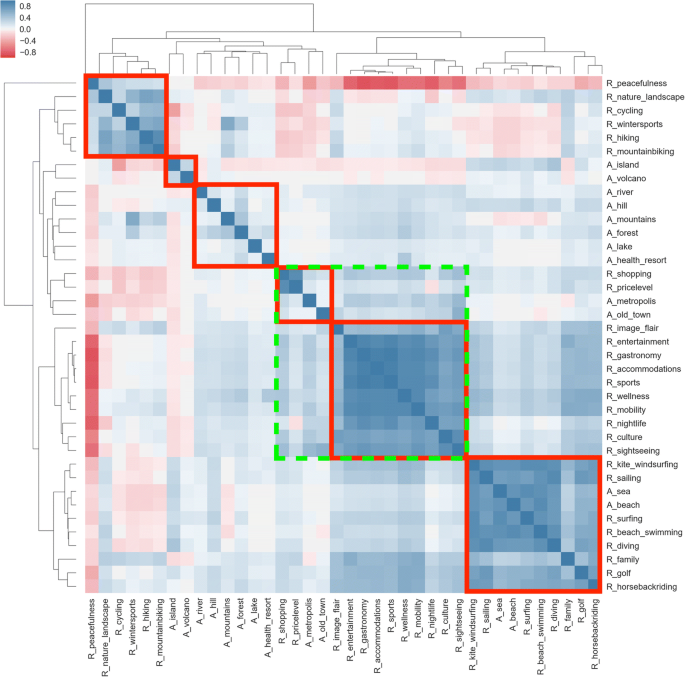
Clustered correlation heat map of all destination attributes
In order to analyse similarities among all destination attributes (i.e., motivational ratings and geographical attributes) a correlation matrix comprising all pairwise Pearson correlation coefficients is calculated. To get a better understanding and overview, the correlation matrix is visualized as a clustered heat map (see Fig. 3 ).
Following meaningful groups are identified (marked by red rectangular):
Group one comprises attributes with a relationship to recreational travelling. Peacefulness , nature & landscape, mountain biking, hiking, cycling and winter sports are forming this group.
Group two consist of island and volcano , which might be a sign for nature and adventure.
In group three there are typical attributes of destinations at the countryside, namely river, hill, mountains, forest, lake and health resort .
Group four comprises attributes related to city trips and metropolitan areas. Those attributes are shopping, price level, metropolis, and old town .
Group five contains attributes related to mass tourism, such as image and flair, entertainment, gastronomy, accommodations, sports, wellness, mobility, nightlife, culture, and sightseeing . The attributes within this group are strongly positively correlated.
Group six mainly comprises attributes related to water sports and beach vacations. Attributes within this group are kite and windsurfing, sailing, sea, beach, surfing, beach and swimming, diving, family, golf, and horseback riding . The last three attributes are a bit detached from the other attributes within this group, which is also reflected by the low correlation coefficients.
Overall, one can observe a contrast between attributes related to mass tourism (green rectangular) and attributes related to recreational destinations (first group), especially in the case of motivational rating peacefulness . However, the correlation analysis delivers first insights of a latent structure in the given data set and furthermore the results can be used in order to substitute or merge highly correlated attributes.
Out of all destinations, 561 destinations were chosen randomly and mapped manually to the Seven-Factors by experts. These experts were members of an Austrian e-Tourism company using an implementation of the picture based approach. Thus, they were familiar with both characteristics of tourism destinations and the Seven-Factor Model. For the 561 destinations, three experts assigned first individually a score for each factor using the scale 0–0.25–0.50–0.75–1. The higher the score the more suitable, in the expert’s opinion, the destination for that specific factor. After the individual mappings, a final mapping was determined in a joint discussion. The majority of destinations in the sample are located in Germany, USA, France, Greece, Great Britain, Italy, Denmark, Spain, Austria, and Netherlands (62%), which is similar to the distribution in the whole data set. However, after the essential missing value treatment, also the expert sample got smaller in size, namely from \(\hbox {N}=561\) to \(\hbox {N}=350\) (62%).
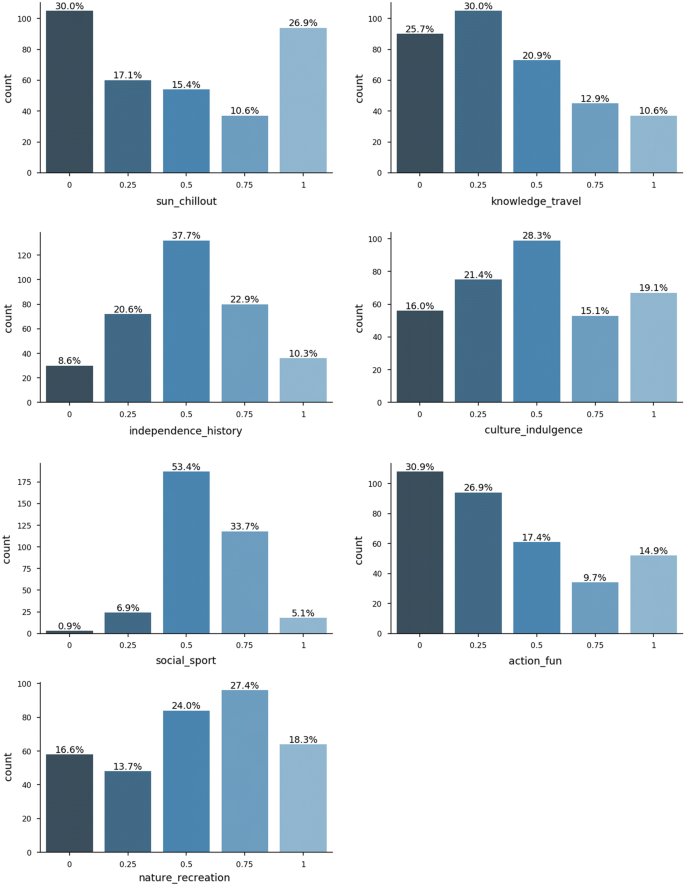
Distribution of Seven-Factor scores in the expert sample
In Fig. 4 the rating behaviour of the experts can be examined, i.e., the score distribution for each of the Seven-Factors are shown. For example, in case of the factor Sun and Chill-Out 30% of the destinations scored with 0, 17.1% with 0.25, 15.4% with 0.5, 10.6% with 0.75, and 26.9% with 1. Thus, the majority of destinations (56.9%) scored with 0 or 1 in the factor Sun and Chill-Out . Whereas, the majority of destinations (55.7%) in case of Knowledge and Travel scored with either 0 or 0.25 and a few with 1 (10.6%), similar to the distribution in the factor Action and Fun . Almost half of the destinations have a score in the “lower middles,” i.e., 0.5 (28.3%) and 0.25 (21.4%), in the factor Culture and Indulgence . This is similar to the distribution in the factor Nature and Recreation , where the majority of destinations have scores in the “upper middles,” i.e., 0.5 (24%) and 0.75 (27.4%). An extreme case of this “upper middles” can be seen in factor Social and Sports , where almost all destinations (87.1%) scored with either 0.5 (53.4%) or with 0.75 (33.7%). The only factor where an approximately normal distribution (bell shape) of scores can be observed is Independence and History .
4 Cluster analysis
Identifying conceptually meaningful groups of destinations with shared common characteristics will help to further understand the data and its structure, which may contribute to a more generalizable solution. Furthermore, clustering is considered as an unsupervised learning method. Hence, it does not rely on a priori labelled data sets and thus on resource intensive (e.g., time, costs, etc.) expert knowledge. Therefore, it can be used as an initial approach for recommending destinations if no further knowledge about the destinations is available. The cluster analysis comprises 16,950 destinations (i.e., the data set after pre-processing). Partitional clustering techniques are considered, where most prominent ones are K-means and K-medoids. Since the data comprises binary attributes, using the Euclidean distance and thus centroids (both are essentials of the K-means algorithm) are not meaningful. Therefore, K-medoids is applied. A medoid corresponds per definition to an actual data point, which is considered as the most representative point for the cluster (Tan et al. 2006 ). Specifically, Partitioning Around Medoids (PAM) (Kaufman and Rousseeuw 1990 ), the most common K-medoids algorithm, is used. Since the data consists of two different data types, i.e., binary (geographical attributes) and continuous (motivational ratings), the Gower distance (appropriate for mixed datatypes) (Gower 1971 ) is used as distance metric.
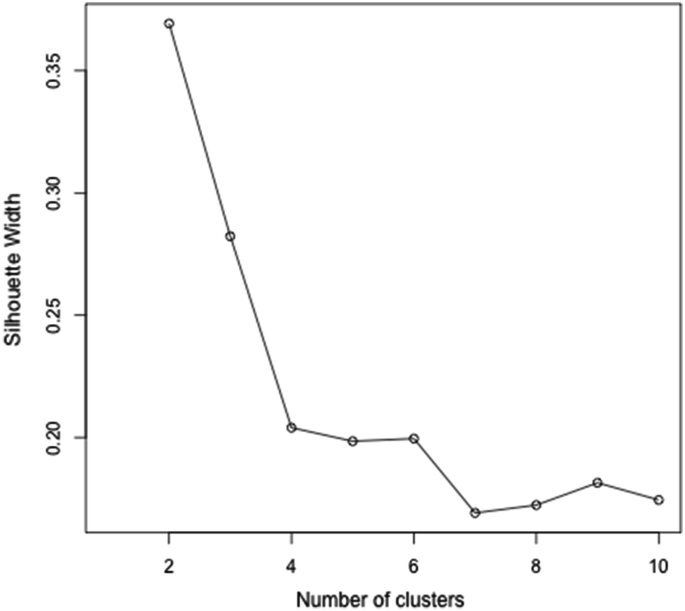
Average silhouette width in different k numbers of clusters
In order to find an appropriate number of clusters, the internal evaluation metric silhouette width (i.e., silhouette coefficient) (Rousseeuw 1987 ) is used for assessment. Figure 5 shows the average silhouette width within different cluster sizes. Based on the average silhouette width two, three, four and six cluster solutions are considered, but for the sake of interpretability and diversity a six-cluster solution is chosen. For example, the four-cluster solution distinguishes between beach resorts and non-beach-resorts. On the other hand, the six-cluster solution enables to distinguish between mass touristic beach resorts, recreational beach resorts, and non-beach-resorts. This adds diversity to the cluster solution and facilitates finding associations with the Seven-Factors. Next, the resulting clusters are examined in detail. The number of destinations in each cluster is provided at the beginning of each paragraph.
C1 (N = 1940) The medoid of cluster C1 is Paralia, a small city in Greece. Paralia means in Greek beach and as the name already suggests, the city is located directly at the beach. It is a popular and vibrant seaside resort with many nightlife and shopping opportunities. Interestingly, 93% of the destinations in C1 are located at the sea and 92% directly at the beach, whereas globally only about 20% of destinations are located at the sea or beach. Also, the rating beach and swimming has a high mean value of 0.81. Additionally, ratings gastronomy, nightlife, sports, accommodations , and culture are showing an increased average value (0.62–0.66). To conclude, destinations in C1 are mainly located on the beach, vibrant and lively, and also attractive for various sports.
C2 (N = 2177) The medoid of cluster C2 is Gubbio, a city located on the lowest slope of Mt. Ingino in Italy. Its origins are ancient and reach back to the Bronze Age. Thus, many cultural and sightseeing activities are provided. Features image and flair, hiking, culture, gastronomy, nightlife, mobility, accommodations, sports, sightseeing , and entertainment are showing increased mean values in C2 (0.61–0.77). Interestingly, 17% of the destinations in C2 are metropoles, which is about six times more considering the whole data set. Plus, only 1% of the destinations in C2 are located at the sea or beach. Hence, destinations in C2 can be considered as mainly vibrant cities or metropoles not located at the beach, offering many nightlife, cultural, sightseeing, gastronomy, and entertainment opportunities.
C3 (N = 1774) The medoid of cluster C3 is Aghios Markos, a small, peaceful village in the nature on the island of Corfu, Greece. In C3, 90% of the destination are located at the sea, 88% at the beach, and 70% on an island. Whereas, in the whole data set only 20% of destinations are located at the sea or beach and 25% on an island. Ratings beach and swimming, nature and landscape, and peacefulness have an increased mean value of 0.77–0.79. Furthermore, there is only one metropolis in C3. Therefore, destinations in C3 can be seen as small and peaceful towns at the seaside, probably on an island, with a few sports opportunities and not many tourists.
C4 (N = 5576) The medoid of cluster C4 is Montbriò del Camp, a small, peaceful village in Catalonia, Spain. The average value of motivational rating peacefulness in C4 is 0.81. Also, ratings nature and landscape, hiking, cycling and mountain biking have an increased mean value of 0.62-0.67. Interestingly, none of the 5576 destinations is located on an island or is a metropolis. Furthermore, the mean values of all other attributes are relatively low for destinations in C4. Hence, destinations of C4 can be considered as small and peaceful villages, probably in the nature, and more or less good for hiking, cycling, and mountain biking.
C5 (N = 1877) The medoid of cluster C5 is Reynoldston, a small, peaceful village in Wales, Great Britain. Interestingly, all destinations within this cluster are located on an island, only 2% are at the beach, and there is only one metropolis. Further, only ratings peacefulness (0.76), nature and landscape (0.71), and hiking (0.64) are showing an increased mean, all other destination attributes have a relatively low average value. C5 is quite similar to C4, except that destinations of C5 are only located on islands, where destinations of C4 are not. Thus, destinations of C5 can be considered as mainly small, peaceful villages, located on an island and in the nature, with some recreational sports offers.
C6 (N = 3606) The medoid of cluster C6 is Irun, a city in Spain at the border to France and on the Atlantic coast. It offers some cultural and sightseeing activities, but also some sports and recreational activities in the nature. Following ratings have an increased average values (0.63–0.71) within this cluster: nature and landscape, peacefulness, image and flair, mountain biking, cycling, nightlife, and culture . In C6, 12% of the destinations are located near a mountain, which is about three times more compared to the whole data set. Only 1% of the destinations are considered as metropoles and only 1% are located at the beach or sea. Thus, destinations within C6 can be considered as small cities, probably in the nature, with recreational, cultural, and entertainment offers, but none of them dominating.
In summary, it can be said that there is an underlying structure of the data leading to six conceptually meaningful groups of destinations. For a better understanding, these groups or clusters can be simplified and summarized as follows: C1— vibrant beach resorts , C2— energetic cities , C3— tranquil seaside resorts , C4— peaceful towns , C5— idyllic island villages , C6— ordinary towns . Furthermore, the identified clustering is showing a clear contrast between tranquil and vibrant, land and island, and seaside and inland.
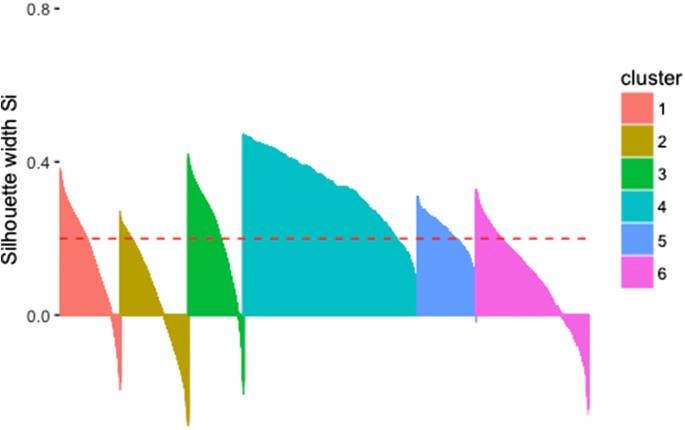
Silhouette plot of the six-cluster solution
The silhouette plot in Fig. 6 displays the silhouette coefficients of each destination in a cluster in an ordered way. The red dashed line shows the average silhouette width of 0.2, which assisted to find the right cluster size. The silhouette plot enables a visual assessment of the relative quality of the developed clustering. A negative silhouette coefficient indicates an incorrect assignment of a destination to a cluster and a very low silhouette coefficient points out that a destination is located in-between two clusters. Hence, almost none of the destinations in C4 and C5 are incorrectly assigned, but some might be located between two clusters. Whereas, in all other clusters there are falsely assigned destinations, especially in C2 and C6.
Furthermore, the proposed clustering can be analysed in the light of the provided expert mapping (N = 350). Table 3 lists the mean Seven-Factor scores and corresponding standard deviations (SD) of the expert sample as a whole and in different clusters. Note, cluster means, which are significantly different to the average factor scores of the rest of the sample, are in bold. Significance is tested with the Mann-Whitney-U-test (Hollander et al. 2013 ) at a significance level of 0.05.
The factor Sun and Chill-Out shows, as expected, an increased mean value in cluster C1— vibrant beach resorts and C3— tranquil seaside resorts . The factors Knowledge and Travel , Independence and History , and Culture and Indulgence have an increased average score in clusters C1— vibrant beach resorts and C2— energetic cities , where in contrast to the other clusters more sightseeing, cultural, entertainment, and nightlife activities are offered. Furthermore, the mentioned factors have a decreased mean value (in comparison to the sample mean) in the clusters with more tranquil and peaceful destinations (C3, C4, C5), where the probability of activities fitting the characteristic aspects of the three mentioned factors is low. In comparison to the sample mean, the factor Social and Sports shows an increased score in cluster C1— vibrant beach resorts and a decreased score in C3— tranquil seaside resorts , but overall it does not show much diversity. In other words, the cluster means are similar (i.e, 0.50–0.64) throughout the clusters and in comparison to the sample mean. The factor Action and Fun has an increased mean value in destinations, which are considered as vibrant and energetic (i.e., destinations in clusters C1 and C2), and a decreased mean value in destinations, which are considered as peaceful, idyllic, or ordinary (i.e., destinations in clusters C4, C5, and C6). Such average Seven-Factor score distribution is reasonable and in line with the characteristics of the factor. Finally and obviously, the factor Nature and Recreation has an increased score in tranquil, peaceful, ordinary, and idyllic places (i.e., destinations in C3, C4, C5, and C6), rather than in destinations with mass tourism characteristics (i.e., destinations in C1 and C2).
5 Regression analysis
The objective of the work is to automatically map destinations onto the seven-dimensional vector space of travel behavioural patterns based on attributes of the destinations. However, additionally the relationships between the Seven-Factors and these attributes should be understood. James et al. ( 2013c ) suggest to choose linear models over more complex ones if inference and interpretability is the goal. Taking this into account, a multiple linear regression model (James et al. 2013b ) with step-wise variable selection (James et al. 2013a ) is applied. All Seven-Factors are considered as independent from each other, since they are obtained from factor analysis. Therefore, they can be treated separately by fitting a model for each travel behavioural pattern, which takes the attributes of a destination as input and returns the factor score in the interval [0, 1] as output. The expert sample is split into a training and test set in a ratio of 80/20. Model performance is assessed by \(R^2\) , the proportion of variance explained, and root mean square error (RMSE), the standard deviation of the residuals / prediction errors (Gunawardana and Shani 2009 ; James et al. 2013c ). Furthermore, a performance evaluation is conducted, in order to compare the performance of the linear model against following two more complex models: K-Nearest-Neighbour regression (KNN) (James et al. 2013b ) and Random Forest regression (RF) (James et al. 2013d ). Finally, the outcomes are evaluated by assessing the performance against a baseline and by examining the distributions of the predicted factors.
The resulting multiple linear regression models comprise both motivational ratings and geographical attributes. After the variable selection 15 out of 26 motivational ratings and seven out of twelve geographical attributes in total are used. Table 4 summarizes the outcomes of the regression analysis. Motivational ratings sightseeing, peacefulness, nightlife, culture, nature and landscape, and shopping appear in more than one model. Also, geographical attributes health resort and sea are used in several models. In the following, the models are discussed in more detail.
F1—Sun and Chill-Out The geographical attributes sea , health resort , and especially the motivational rating beach and swim have a significant positive impact on the factor Sun and Chill-Out . Those attributes can be interpreted as indicators for sun and relaxation. On the other side, the motivational rating nightlife has a significantly strong, negative impact, which can be associated with crowded places and mass tourism.
F2—Knowledge and Travel The motivational rating sightseeing has a significant, strongly positive relation with the factor Knowledge and Travel . Hence, it is capturing the knowledge part of the factor. Whereas, the motivational rating mobility is also positively related to the factor and one can say it captures the travel part. On the other hand, the geographical attributes sea and winter sports resort are significantly negatively related with the factor. This is reasonable, since in such areas usually the tourism focus does not lie on gaining knowledge.
F3—Independence and History The motivational ratings culture and sightseeing are significantly, positively related to the factor Independence and History . Those attributes can be seen as the main motivation of travellers with interests in history and tradition. Whereas, the motivational rating nature and landscape has a significant negative impact on the factor. Since cultural and historical interests are short coming in nature and recreation related destinations, such negative association is reasonable.
F4—Culture and Indulgence The motivational ratings sightseeing , culture , image and flair , and geographical attribute old town are significantly, positively related to the factor Culture and Indulgence . Those ratings can be interpreted as the main motivation of a culture and history interested high class tourist. On the other side, the motivational rating nature and landscape has a significant, negative impact on the factor. Again, this might show that destinations branded with a nature and landscape motif have shortcomings in cultural tourism.
F5—Social and Sports The motivational rating sports has a strong, significant, positive impact on the factor Social and Sports , which is obvious. Also, the motivational rating peacefulness and the geographical attribute mountains have a significant positive relation to the factor. Since the factor Social and Sports factor avoids crowded areas and locations of mass tourism, and prefers more tranquil places, positive associations of both attributes with the factor are reasonable. On the other hand, the motivational rating sightseeing has a significant, negative impact on the factor. It can be seen as an indicator of crowded areas and mass tourism. Surprisingly, the motivational rating wellness is significantly, negatively associated with the factor Social and Sports . This is caused by an unsound sample, as 55% of the destinations in the expert sample have a larger wellness rating (> 0.5) and are located at the beach and 25% are metropoles, which is far less in the whole data set.
F6—Action and Fun The motivational ratings peacefulness , family , and the geographical attribute health resort have a significant, negative impact on the factor. This fits perfectly to the character traits of the factor Action and Fun . Whereas, the motivational ratings nightlife , winter sports , shopping , and the geographical attributes sea and metropolis are significantly positively related to the factor. Those can be interpreted as attributes of energetic, vibrant and action loaded places, which are main aspects of destinations for thrill seeking and action loving travellers.
F7—Nature and Recreation The motivational rating peacefulness , hiking , and the geographical attribute health resort are significantly positively related to the factor Nature and Recreation , which is obvious and does not need further explanation. On the other side, the motivational ratings nightlife , sightseeing , shopping , and the geographical attribute beach have a significant, negative impact on the factor. Those attributes can be interpreted as signs of mass tourism and crowded areas. Hence, a negative association on a recreational and escapist traveller is reasonable.
The resulting models are evaluated by assessing both in-sample and out-of-sample performance. In other words, the performance measures are determined using both training set (in-sample) and test set (out-of-sample). Obviously, out of sample performance plays a bigger role, because it delivers an approximation to the question, how the model will perform using unseen data. Still, in sample performance also provides some crucial insights. For example, it might give some hint, whether the developed models are overfitting. Furthermore, resulting linear regression models are compared to an appropriate baseline function \(f_0\) in order to show, whether the resulting models actually did learn something. Since the target variables, i.e. the Seven-Factors, are continuous, a simple mean function is chosen as baseline. Additionally, two more complex and non-linear models, namely KNN and RF, are fitted, in order to challenge the performance of the simple linear model.
In Table 5 the training and test performance of \(f_0\) , MLR, KNN, and RF are listed. Note that \(f_0\) is always a constant function. Thus, it does not explain any variance in the factor scores. Therefore, \(R^2_{train}\) and \(R^2_{test}\) of \(f_0\) are always zero. Training and test performance of the MLR models is close together, which shows that this model is not much overfitting. Whereas the RF models and especially the KNN models are overfitting the training set, i.e. the training performance is much better than the test performance. For example, an extreme case is the KNN model for factor Action and Fun , where \(R^2_{train}\) is 1.00 (100% of the variance in the factor is explained) and \(R^2_{test}\) is 0.63 and also \(RMSE_{train}\) is 0.01 (almost perfect) and \(RMSE_{test}\) is 0.21. Although both models are well tuned, the overfitting can be a sign of too few training data, but it also shows a potential for enhancement if more data is used.
Overall, the out-of-sample performance of all three models MLR, KNN, and RF are pretty close. Hence, one can expect that they will perform similar if confronted with unseen data. The overall performance of all three models (MLR, KNN, RF) are always better than the simple mean function \(f_0\) , which indicates that the models must have learned something out of the data. The difference is in most cases clear to observe, except in factor Social and Sports . Here, the \(RMSE_{test}\) of \(f_0\) is 0.19 and MLR, KNN, and RF have a \(RMSE_{test}\) of 0.17-0.18. This is caused by an uneven distribution of the expert mapping, where 87% of the destinations have scored with 0.5 or 0.75. Hence, a constant prediction of 0.58, like \(f_0\) does, is performing pretty well, but it also means that there is less information to learn from. On the other hand, the models are performing the best in factor Nature and Recreation , where \(RMSE_{test}\) is 50% smaller than the baseline. The out of sample performance of the KNN model is always a tick worse than the MLR and RF model, whereas there is almost no difference in the performance of RF and MLR. Thus, discarding the KNN model and choosing the MLR model over RF is reasonable since they are performing similar but the MLR model is much simpler to fit and easier to interpret.
MLR delivers promising results by explaining 59–77% of the variance of factor scores in the test set. Except the model for Social and Sports , where only 22% of the variance is explained. Such poor performance is caused by an uneven distribution of the factor scores in the expert mapping.
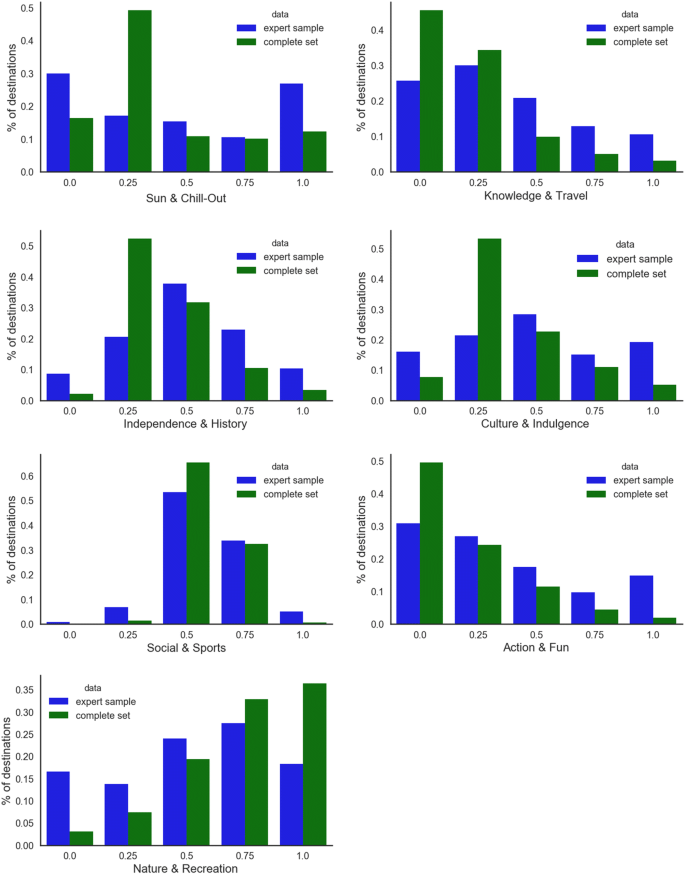
A comparison of factor score distributions in the expert sample versus the distributions of predicted factor scores of the complete data set
In contrast to the previous analysis, where the focus is predictive performance, now the distribution of the predicted factor scores is analysed. In detail, the factor score distribution of the expert mapping is compared to the distribution behaviour of the predicted factor scores. In order to do so, the MLR model of each factor is fed with the complete data set as input. Then the resulting distribution in factor scores is compared to the one in the expert mapping, which is shown in Fig. 7 . This comparison will foster a better understanding of the generalization power of the developed models.
Sun and Chill-Out Here, 49% of the destinations in the complete set are scoring with 0.25. This is not observable in the expert sample. The expert sample shows an increased amount of destinations with score 0 (30%) and 1 (27%), whereas 43% of destinations score either with 0.25, 0.5 or 0.75. A similar but damped behaviour can be observed in the predicted factor scores of the complete set (setting aside the peak at score 0.25).
Knowledge and Travel Taking into account the expert sample, the majority of destinations score either with 0 or 0.25 and with increasing factor score the amount of destinations decays. A similar behaviour can be observed in the predicted factor scores of the complete set.
Independence and History Considering the predicted factors of the complete set, once again one can see a peak at score 0.25 like previously in Sun and Chill-Out . Besides that, the distribution has more or less a normal shape (bell), similar to the factor score distribution of the expert mapping.
Culture and Indulgence Looking at the predicted factors of the complete set, there is again a peak at score 0.25 (57%), which is not observable in the expert mapping. At score 0.5 and 0.75 the percentage of destinations in the expert sample (28% and 15%) are relatively close to the ones in the complete set (23% and 11%). On the other hand, this is not the case for scores 0 or 1, where the difference is much higher.
Social and Sports The vast majority of destinations score either with 0.5 or 0.75 in both, whereas only few destinations score with 0, 0.25 or 1.
Action and Fun Considering the expert mapping, one can see that the majority of destination score either with 0 or 0.25 and that this amount is decaying the higher the score gets. A similar behaviour can be observed by looking at the predicted factors of the complete set.
Nature and Recreation In the predicted scores of the complete set the amount of destinations is increasing with increasing factor scores. This cannot be observed in the expert mapping. Still, in both, the expert sample and the complete set, most of the destinations are scoring with 0.5 or more.
To sum up, there are some differences in the distributions of factor scores between the manually labelled expert sample and the predicted scores of the complete set. But overall, both show similar trends in the distributions. This shows that the build multiple linear regression models are mimicking the experts quite good. Hence, one can expect a sufficient generalization.
6 Conclusions and future work
This chapter reflects on the outcomes of this study and highlights some managerial implications. Furthermore, limitations of the approach are discussed and a future outline is presented.
6.1 Discussion
In general, one can distinguish between knowledge-poor recommendation techniques (i.e., only basic data like user ratings for items in use) and knowledge-dependent recommendation techniques (i.e., ontological description of users and items, constraints, or social relations and activities of users in use) (Ricci et al. 2015 ). The picture based approach (Neidhardt et al. 2014 , 2015 ), where both users and items are described through the Seven-Factor Model, belongs to the latter group. Primarily, this work’s aim is to identify and explain associations between destination attributes and the Seven-Factor Model to enable an automated mapping of destinations onto the Seven-Factors. Ultimately, such a mapping should enable a match-making between users and destinations. To reach the stated goals an exploratory data analysis, a cluster analysis, and a regression analysis were conducted.
Since the overall aim is not only to project destinations into the seven-dimensional vector space of travel behavioural patterns, but also to explain which attributes of destinations are more important for this purpose, a multiple linear regression (MLR) analysis with step wise variable selection was conducted. Seven models were established, one for each factor of the Seven-Factor Model. The resulting models are providing strong evidence that there is a significant relation between selected destination attributes and the Seven-Factors. Table 6 lists all independent variables (destination attributes) of the fitted MLR models of the Seven-Factors. Note that a minus sign indicates a negative impact on the corresponding factor. For example, the model of the factor Sun and Chill-Out consists out of indicators of sun and beach as expected, but there are also indicators of crowdedness, which have a negative impact on the factor. Such model structure is in line with the characteristics of Sun and Chill-Out , where crowdedness and mass tourism are negatively associated with the factor.
Furthermore, the developed linear models were challenged by two conceptually different non-linear models, namely random forest regression (RF) and K-Nearest-Neighbour regression (KNN). Additionally, the predictive performances of all three models MLR, RF, and KNN were compared to a baseline function (in this case simple mean of each factor). The evaluation showed that all three models were always better than the baseline function, which indicated that they had learned something out of the data. Although the RF models were excelling in the training phase of the models their performance in the test phase dropped drastically. Thus, the RF models were clearly overfitting the training data. Also, fine-tuning and regularization did not bring any performance gain. Thus, the big difference in training and test performance might be caused by too small samples. Consequently, bigger samples will be aimed in the follow up studies. However, it has been demonstrated that the performance of the MLR model is similar to the performance of the RF model and both are outperforming the KNN model. In the end the MLR model was chosen over the RF model since MLR is simpler to fit and easier to interpret than RF.
Overall, all travel behavioural patterns are well described (59–77% of the variance) by the resulting models, except for the factor Social and Sports , where only 22% of the variance can be explained. This is caused by an uneven distribution of scores of the factor Social and Sports in the expert sample. Thus, statistically sounder samples will be targeted in future work. Furthermore, the fitted MLR models show a RMSE between 0.17 and 0.25 (in a scale of 0–1). The interpretation of a RMSE value is totally domain dependent. Unfortunately, there is no reference to look at or a rule of thumb to follow, which indicates whether such RMSE is sufficient enough or not. For example, in critical decisions like in medicine a RMSE of 0.01 (in a scale of 0–1) might still be too much. But, for simple recommendation items like for example movies in the Netflix prize case (Bell and Koren 2007 ) a RMSE of about 0.9 (in a scale of 1–5) might be sufficient. Tourism products are usually more complex and more expensive than movies and thus one might need a lower RMSE than about 20% of the scale. Note that the models here are trained and tested on a small dataset evaluated by experts, which is substantially different to the setting of the Netflix prize. Ultimately, the decision whether the fitted models are applicable or not has to be evaluated within a RSs and will be addressed in follow up studies.
As already mentioned, the MLR models were obtained by using just a small subset of the given data set (i.e., 2%). In order to get a better understanding of the generalization performance of the fitted models with respect to the whole data set the Seven-Factor score distribution of the expert sample was compared to the predicted Seven-Factor score distribution of the whole data set. There was some discrepancy between both distributions but overall, they showed similar trends and thus one can expect a sufficient generalization within the given data set. Most differences were experienced at a score of 0 and 0.25, which might indicate the difficulty in differentiating between “bad” and “very bad” (i.e., between 0.25 and 0). A finer scale than the currently used one (i.e., 0–0.25–0.50–0.75–1) might counter this issue.
Anyway, one should keep in mind that the fitted models are based on a proprietary data set. Although the introduced approach can easily be replicated with other datasets, it brings the disadvantage that for each new data set new models have to be trained and tested (since commonly data sets in the tourism landscape are heterogeneous and not standardized). To counter this generalization issue, a comprehensive tourism product model (partly based on existing ontological representations) will be developed in order to harmonize heterogeneous data sources. Afterwards, analyses conducted in this study will be applied on the harmonized data to obtain a more general solution. First steps in this direction have already been taken.
In addition to the regression analysis (i.e., a supervised learning method, where pre-labelled data is needed) a cluster analysis (i.e., an unsupervised learning method) was conducted. The goal was to find latent, conceptually meaningful structures within the given data set without the need of prior expert knowledge. Six conceptually meaningful clusters were identified, namely vibrant beach resorts, energetic cities, tranquil seaside resorts, peaceful towns, idyllic island villages, and ordinary towns .
The resulting cluster solution is supported by the exploratory data analysis, where destination attributes could be group based on their pairwise correlation (see Fig. 3 ). The identified groups of attributes are covering following aspects of tourism destinations: recreational , island , countryside , urban area , mass tourism , and seaside . Considering both the six clusters and the groups of destination attributes one can observe a clear contrast of vibrant to tranquil , land to island , seaside to inland (urban area) . Also, the expert sample supports to some extent the six cluster solution, where a reasonable average factor score distribution over the clusters (see Table 3 ) could be observed. Only in case of the factor Social and Sports no clear associations with the clusters could be drawn. The ambiguity of Social and Sports is due to an uneven distribution of factor scores in the expert mapping, where 87% of the destinations scored either with 0.5 or 0.75.
The benefit of the cluster solution is that it works totally unsupervised. In other words, clusters can be obtained without the need of a previous manual mapping of experts and only by considering the given data set. Further, the resulting clusters could be addressed directly by RSs, where they can be used as an initial approach for recommending destinations if no further data is available. But the biggest limitation of the clustering approach is mutual exclusivity, i.e. destinations are members of only one cluster. For example, Rio De Janeiro is a huge city offering many cultural, historical, nightlife and entertainment activities, but it is also located at the seaside with famous beaches like Copacabana and Ipanema. Therefore, assigning Rio to just one cluster for example energetic cities would not consider customers interested in beach and swimming adequately. Furthermore, people tend to have a combination of travel preferences rather than just one interest (Gretzel et al. 2006 ; Neidhardt et al. 2014 , 2015 ), where an explicit assignment would have shortcomings.
Finally, the exploratory data analysis and also the developed models showed that the used data set is not able to cover all characteristic aspects of the factors of the Seven-Factor Model. Especially, there were no features indicating independence, the passion for knowledge gain, indulgence, or socialization with locals. This is also pointed out by Glatzer et al. ( 2018 ), where they argue that this shortcoming might be the cause of some performance loss in their models. Other data sources might be able to cover the characteristic aspects of the factors of the Seven-Factor Model better and will be used to enhance the models.
6.2 Managerial implications
One of the main goals of the presented work is to automatically describe tourism products within a recommender system. The proposed approach projects tourism destinations into the seven-dimensional vector space of travel behavioural patterns, i.e. it determines the Seven-Factor representation of tourism destinations based on their attributes. This approach, moreover, can easily be adapted to other tourism products.
A main benefit of representing tourism products with just seven factors is low processing costs, for computers as well as for humans (i.e., cognitive costs). In other words, it facilitates the communication of tourism products to customers, between customers, to other companies, and also between co-workers. In addition, from a computational point of view, a matchmaking with just seven factors instead of tens or hundreds of attributes saves process and storage costs and thus leads to low response times and in turn to a better customer experience and satisfaction.
Manually mapping tourism products to the Seven-Factors is resource intensive (i.e., time and expert knowledge). As opposed to this, the presented work proposes an automatic and scalable solution for destinations, which can easily be adapted to other tourism products. This will not only save time and costs with respect to mapping tourism products onto the Seven-Factors, but also with respect to maintaining already mapped tourism products (e.g., a game changing new attraction opens near an already mapped destination). Such an easiness of determination of the Seven-Factors of tourism products can also be seen as an incentive to add more and more tourism products into the recommendation base and in turn to increase the variety.
From the consumers point of view, a representation of tourism products with just seven factors does not only mean easier communication, lower cognitive costs, and better customer experience, but it also increases the recognition potential of the products as well as of the recommender system (i.e., travel agency brand). Furthermore, recommending products, which are not only dependent on previous interactions with the RSs (e.g., collaborative filtering) and which also considers current needs, can lead to a broader diversity and in turn to a better experience and satisfaction.
From a marketing point of view, an automated clustering or classification of existent or new products can facilitate the campaign and package building. One could, for example, design a marketing campaign just for tranquil seaside resorts . Furthermore, an automatic package building can be achieved, where destinations, accommodations, activities and more are clustered, packaged and recommended based on the Seven-Factors. For example, the destination Las Vegas , the hotel The Stratosphere Casino, Hotel and Tower , and the activity base jumping could be grouped and offered to a traveller with a high Action and Fun score.
6.3 Limitations and future research
Summing up, the main limitations of this work are caused by the data that is used and the expert sample. In future, higher performance and more robustness of the models will be achieved with statistically sounder and bigger samples. Currently, the fitted models are limited to tourism destinations and their respective attributes (i.e., to a proprietary attribute structure). In order to break this data source dependency and derive a more general solution, future research will consider diverse, heterogeneous data sources and a way to harmonize them.
Right now, moreover, the evaluation of the models is limited to the test set (i.e., 20% of the expert sample, which was not used for model fitting). However, as a next step we plan to evaluate the applicability of the developed models within a running RSs setting.
Finally, since tourism products are considered as rather complex (i.e., they typically combine accommodation, transportation, activities, food, etc.) (Werthner and Ricci 2004 ) it is also planned to develop an aggregation model to deal with packages of tourism products.
Beirman D (2003) Restoring tourism destinations in crisis: a strategic marketing approach. In: CAUTHE 2003: riding the wave of tourism and hospitality research, p 1146
Bell RM, Koren Y (2007) Lessons from the netflix prize challenge. Acm Sigkdd Explor Newslett 9(2):75–79
Article Google Scholar
Borràs J, Moreno A, Valls A (2014) Intelligent tourism recommender systems: a survey. Expert Syst Appl 41(16):7370–7389
Braunhofer M, Elahi M, Ricci F (2014) Usability assessment of a context-aware and personality-based mobile recommender system. In: International conference on electronic commerce and web technologies, Springer, Berlin, pp 77–88
Burke R (2007) Hybrid web recommender systems. In: The adaptive web, Springer, Berlin, pp 377–408
Burke R, Ramezani M (2011) Matching recommendation technologies and domains. In: Recommender systems handbook, Springer, Berlin, pp 367–386
Delić A, Neidhardt J, Werthner H (2016) Are sun lovers nervous? In: ENTER 2016: Volume 7 research notes, e-Review of tourism research
Fesenmaier DR, Wöber KW, Werthner H (2006) Destination recommendation systems: behavioral foundations and applications. CABI, Wallingford
Book Google Scholar
Garcia I, Sebastia L, Onaindia E (2011) On the design of individual and group recommender systems for tourism. Expert Syst Appl 38(6):7683–7692
Gibson H, Yiannakis A (2002) Tourist roles: needs and the lifecourse. Ann Tour Res 29(2):358–383
Glatzer L, Neidhardt J, Werthner H (2018) Automated assignment of hotel descriptions to travel behavioural patterns. In: Information and communication technologies in tourism 2018, Springer, Berlin, pp 409–421
Goldberg LR (1990) An alternative “description of personality”: the big-five factor structure. J Pers Soc Psychol 59(6):1216
Gower JC (1971) A general coefficient of similarity and some of its properties. Biometrics 27:857–871
Gretzel U, Mitsche N, Hwang YH, Fesenmaier DR et al (2006) Travel personality testing for destination recommendation systems. Destin Recomm Syst Behav Found Appl. CABI, Oxfordshire, pp 121–136
Gunawardana A, Shani G (2009) A survey of accuracy evaluation metrics of recommendation tasks. J Mach Learn Res 10(Dec):2935–2962
Google Scholar
Hollander M, Wolfe DA, Chicken E (2013) Nonparametric statistical methods, vol 751. Wiley, Hoboken
James G, Witten D, Hastie T, Tibshirani R (2013a) Linear model selection and regularization. In: An introduction to statistical learning, Springer, Berlin, pp 203–264
James G, Witten D, Hastie T, Tibshirani R (2013b) Linear regression. In: An introduction to statistical learning. Springer, Berlin, pp 59–126
James G, Witten D, Hastie T, Tibshirani R (2013c) Statistical learning. In: An introduction to statistical learning. Springer, Berlin, pp 15–57
James G, Witten D, Hastie T, Tibshirani R (2013d) Tree-based methods. In: An introduction to statistical learning. Springer, Berlin, pp 303–335
Kaufman L, Rousseeuw PJ (1990) Partitioning around medoids (program pam). In: Finding groups in data, Wiley, Hoboken, pp 68–125
Chapter Google Scholar
Matthews G, Deary IJ, Whiteman MC (2003) Personality traits. Cambridge University Press, Cambridge
Mazumder R, Hastie T, Tibshirani R (2010) Spectral regularization algorithms for learning large incomplete matrices. J Mach Learn Res 11(Aug):2287–2322
MediaCT I (2014) The 2014 traveler’s road to decision. https://www.thinkwithgoogle.com/_qs/documents/918/2014-travelers-road-to-decision_research_studies.pdf . Accessed 14 July 2017 (online)
Neidhardt J, Werthner H (2017) Travellers and their joint characteristics within the seven-factor model. In: Information and communication technologies in tourism 2017, Springer, Berlin, pp 503–515
Neidhardt J, Schuster R, Seyfang L, Werthner H (2014) Eliciting the users’ unknown preferences. In: Proceedings of the 8th ACM conference on recommender systems, ACM, New York, RecSys ’14, pp 309–312. https://doi.org/10.1145/2645710.2645767
Neidhardt J, Seyfang L, Schuster R, Werthner H (2015) A picture-based approach to recommender systems. Inf Technol Tour 15(1):49–69
Ricci F, Rokach L, Shapira B (2015) Recommender systems: introduction and challenges. In: Recommender systems handbook, Springer, Berlin, pp 1–34
Rousseeuw PJ (1987) Silhouettes: a graphical aid to the interpretation and validation of cluster analysis. J Comput Appl Math 20:53–65
Sertkan M, Neidhardt J, Werthner H (2018) Mapping of tourism destinations to travel behavioural patterns. In: Information and communication technologies in tourism 2018, Springer, Berlin, pp 422–434
Tan P-N, Steinbach M, Kumar V (2006) Cluster analysis: basic concepts and algorithms. In: Introduction to data mining, Chapter 8, 6th edn. Peason Addison Wesley, Boston, pp 486–568
Tkalcic M, Chen L (2015) Personality and recommender systems. In: Recommender systems handbook, Springer, Berlin, pp 715–739
Werthner H, Klein S (1999) Information technology and tourism: a challenging ralationship. Springer, Wien
Werthner H, Ricci F (2004) E-commerce and tourism. Commun ACM 47(12):101–105. https://doi.org/10.1145/1035134.1035141
Werthner H, Alzua-Sorzabal A, Cantoni L, Dickinger A, Gretzel U, Jannach D, Neidhardt J, Pröll B, Ricci F, Scaglione M (2015) Future research issues in it and tourism. Inf Technol Tour 15(1):1–15
Woszczynski AB, Roth PL, Segars AH (2002) Exploring the theoretical foundations of playfulness in computer interactions. Comput Hum Behav 18(4):369–388
Zins AH (2007) Exploring travel information search behavior beyond common frontiers. Inf Technol Tour 9(3–1):149–164
Download references
Acknowledgements
Open access funding provided by TU Wien (TUW).
Author information
Authors and affiliations.
Research Division of E-Commerce, Institute of Information Systems Engineering, TU Wien, Favoritenstrasse 9-11/194, 1040, Vienna, Austria
Mete Sertkan, Julia Neidhardt & Hannes Werthner
You can also search for this author in PubMed Google Scholar
Corresponding author
Correspondence to Mete Sertkan .
Rights and permissions
Open Access This article is distributed under the terms of the Creative Commons Attribution 4.0 International License ( http://creativecommons.org/licenses/by/4.0/ ), which permits unrestricted use, distribution, and reproduction in any medium, provided you give appropriate credit to the original author(s) and the source, provide a link to the Creative Commons license, and indicate if changes were made.
Reprints and permissions
About this article
Sertkan, M., Neidhardt, J. & Werthner, H. What is the “Personality” of a tourism destination?. Inf Technol Tourism 21 , 105–133 (2019). https://doi.org/10.1007/s40558-018-0135-6
Download citation
Received : 01 May 2018
Revised : 09 November 2018
Accepted : 29 November 2018
Published : 10 December 2018
Issue Date : 08 March 2019
DOI : https://doi.org/10.1007/s40558-018-0135-6
Share this article
Anyone you share the following link with will be able to read this content:
Sorry, a shareable link is not currently available for this article.
Provided by the Springer Nature SharedIt content-sharing initiative
- User modelling
- Tourism recommender systems
- Tourism destinations
- Statistical analysis
- Cluster analysis
- Seven-Factor Model
- Find a journal
- Publish with us
- Track your research

IMAGES
VIDEO
COMMENTS
Judging types are likely to plan every little detail, while Prospecting travelers tend to be more comfortable going with the flow. In honor of World Tourism Day, which happens to be September 27, we thought it would be fun to come up with travel-specific personality types, taking into account the trait differences that make each type unique. Be ...
Free-spirited, emotional, and yearning for connections, the ENFP is driven by inspiration and feelings. Travel, for this type, is about making beautiful memories, interacting with locals, and recording each experience in a heartfelt journal entry. PS: This is my type. 🙂. The ENFP is never bored, and looks at the world as a place of unending ...
Some types prefer short, adventurous escapades. Others prefer long, drawn-out experiences. And at the end of each trip, each personality walks away having learned something slightly different ...
The best destinations for your personality type are ones where you can wake up at 3am or 3pm and still have tons of fun. Here are some destinations you might like: Istanbul, Turkey. Bangkok, Thailand. New York City, United States. These destinations are all about 24-hour adventure.
Check out Travel and Leisure's list of the 50 most romantic places for a general idea of what's out there in the way of romantic destinations. The notion of taking off to far-flung places is a romantic idea in itself, so grab your partner, your passports, and get out and see the world. Recommended spots for romantic travelers: Santorini ...
Type of travel: Solo trip to a historical location. Turkey is a great destination for some Myers-Briggs personality types, especially if you're looking ... [+] Places: Washington, D.C.; Athens ...
This type of traveler is not a lot into extreme holidays. They plan the trip by drawing up an itinerary first of the places they would like to visit and schedule the trip when they arrive at the destination. This type of traveler also prefers to travel with company. And it is easy as 17% of the population belong to this travel personality. Venturer
Here are the suggested travel destinations and itineraries for the Tourist travel personality type: 1. Italy. Get a glimpse of Classic Italy . On this twelve-day tour you will discover the classical Italy and its gems, from the food and wine to the beautiful Venice and Florence. 2.
The What's Your RoadTrip Personality test measures your core preferences within the Big Five personality system that are most likely to influence travel and assigns test-takers one of eight traveler archetypes. These range from the Culture Hound to the Nonstop Nomad (the latter being the type most suited to picking up and committing to a 2-3 ...
ENFP: New Orleans, LA. Often called a free spirit and the life of the party, an ENFP personality knows how to have fun. New Orleans, with its buzzy bars and jazzy beats, is one and the same. While in this wild city, ENFPs should flock to hotspots like Latitude 29 and Hot Tin for cocktails and party-hardy vibes.
We teamed up with HearHere, the road trip storytelling app, to create this test based on the Big Five personality system - to help you find your ultimate road trip. To take the travel personality quiz, rate each statement according to how well it describes you. Base your ratings on how you really are, not how you would like to be. I am always ...
Table of Contents. Soul Searcher: City Slicker: Culture vulture: Adventure seeker: Typical traveler: While some travelers are on a soul-searching mission, there are some others who travel to experience different cultures and a few others for whom adventure is the travel motive. We have listed here the 5 most common travel personality types.
THE FOODIE (Sony/Columbia Pictures) 3. The Nature Lover. These types of travellers are so fascinated by nature, they spend most of their vacations in jungles and forests observing flora and fauna. A section of them even spend lots of time on safaris, in all kinds of environments. 4. The Photographer.
In the context of tourism and travel, understanding the psycho type of a tourist is crucial for tour guides. It enables guides to tailor their approach, communication style, and itinerary to meet each traveler's specific needs and preferences. Here's a more detailed exploration of psycho types: Personality Traits:
Knowing your traveler type will help your understanding of this post - Head on over to take the Traveler Personality Quiz before you read on! One of the best ways to understand how destinations develop over time is through a model called the Tourism Area Life Cycle (TALC), that was developed by a guy named Richard Butler in 1980. The TALC ...
Tourism businesses can cater to different tourism personality types by offering a diverse range of experiences, activities, and accommodations that appeal to a variety of interests and preferences. For example, a hotel may offer adventure packages for thrill-seekers, spa and wellness packages for luxury travelers, and family-friendly amenities ...
Firstly, the study indicates that certain personality types of tourists tend to show more positive perceptions of destination image and destination personality, also tending to have preferences for certain activities. ... Tourist personality→tourist activity preferences: supported: Extraversion →Participation in organized events: 0.140: 0. ...
Sensation seeking (SS) is a personality trait associated with the need for novelty and stimulation and has been linked to tourist behavior. Tourist role, perceptions of risk associated with travel ...
Hence, it is required to accurately classify the personality type by reflecting the destination characteristics when understanding the relationship between tourist personality characteristics and ...
Within the spectrum of psychographic personality types a tourist can either be classified as a dependable or venturer (Plog, 2001). However "no person is a perfect exemplar of any personality type," (Plog, 2001, pg 15) with only 2.5% representing a true dependable and venturers only being represented by 4% of the population.
influence tourist behavior in general—particularly in explaining the influence of destination personality [17-20], destination image [21-25], and tourists' individual characteristics on destination image and destination personality [8,16,23,26-30]. However, activity prefer-ences have not been sufficiently explored in previous studies.
Take the first type of personality as an example (the personality type is marked as 1). There are two users who have this personality and like two specific tourist attractions. Therefore, the first type of personality will have four lines connected to the tourist attractions (including the same tourist attractions).
The Seven-Factor Model is the result of a factor analysis combining the "Big Five" personality traits (Goldberg 1990 ), which can be associated with the long-term behaviour of users, and 17 tourist roles proposed by Gibson and Yiannakis ( 2002 ), representing short-term preferences.